Modular Seedling Planters
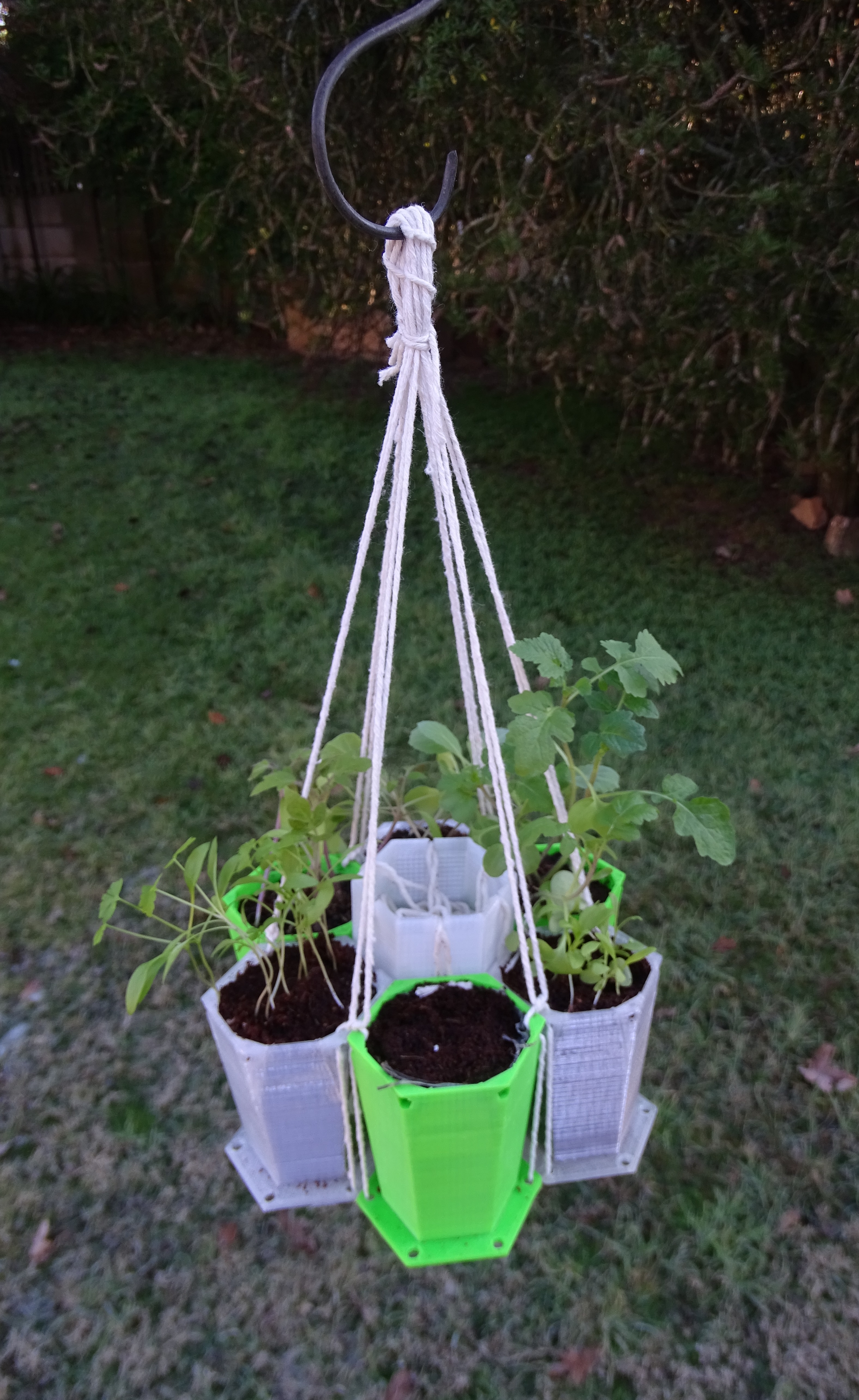
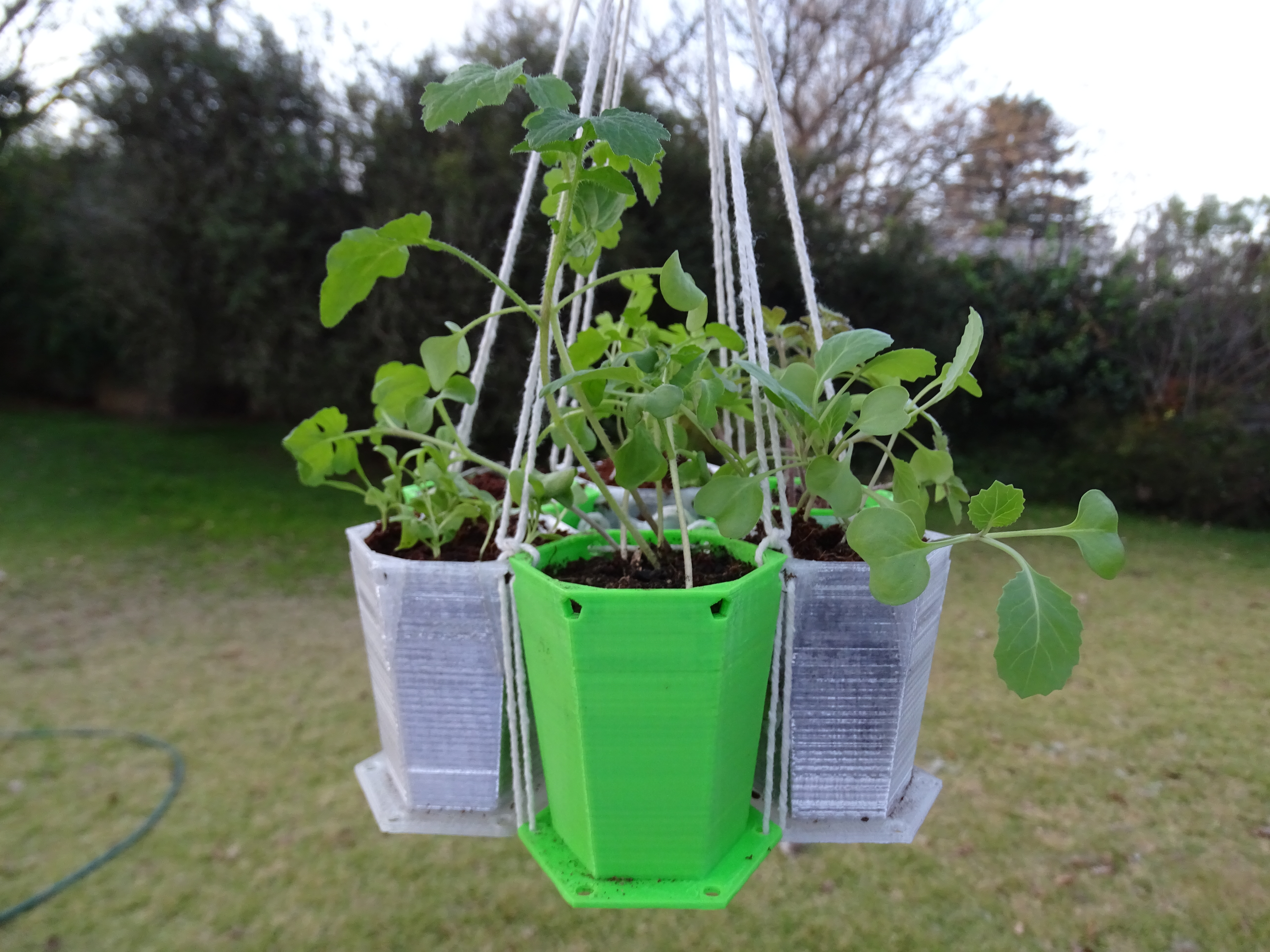
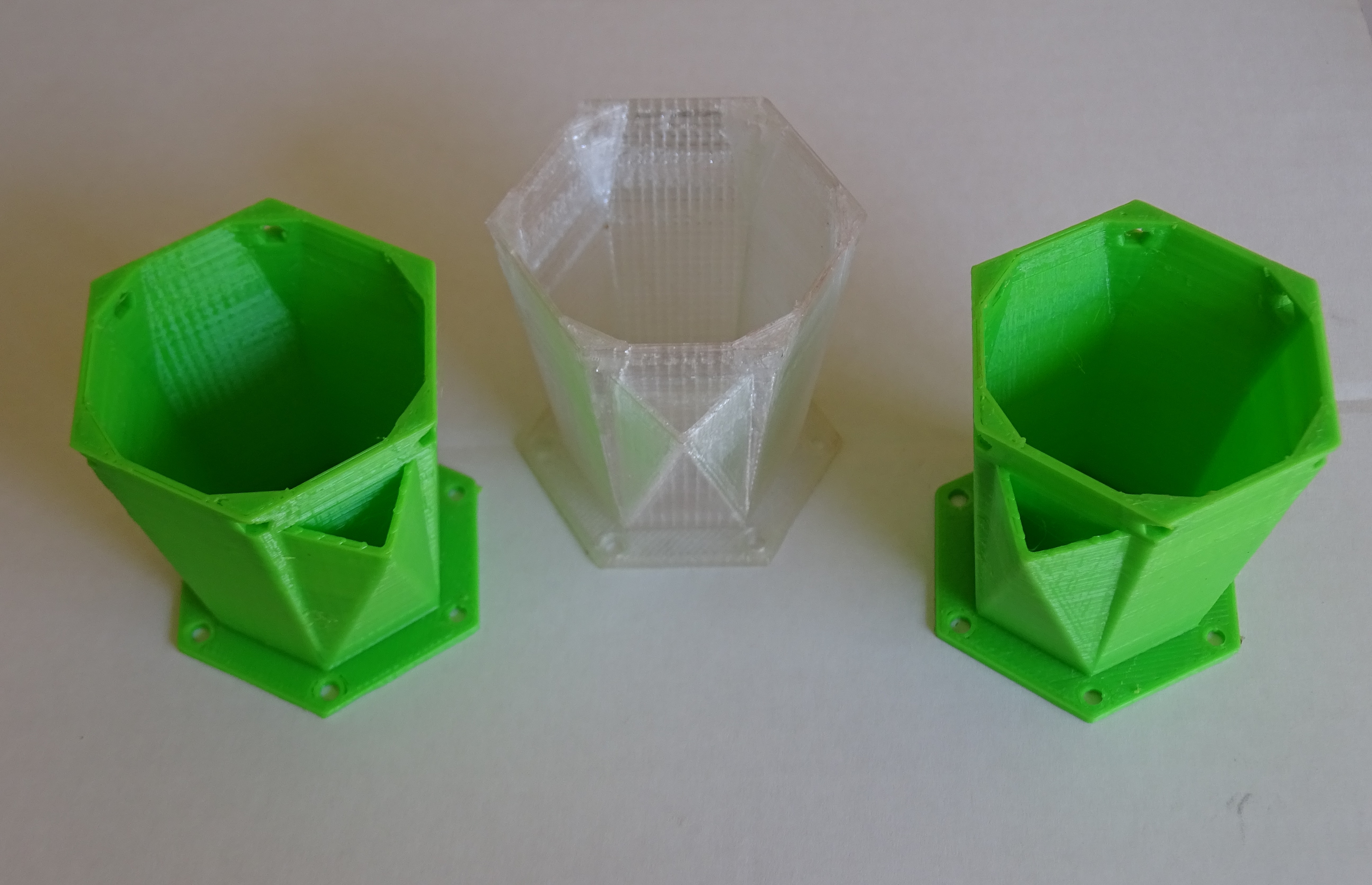
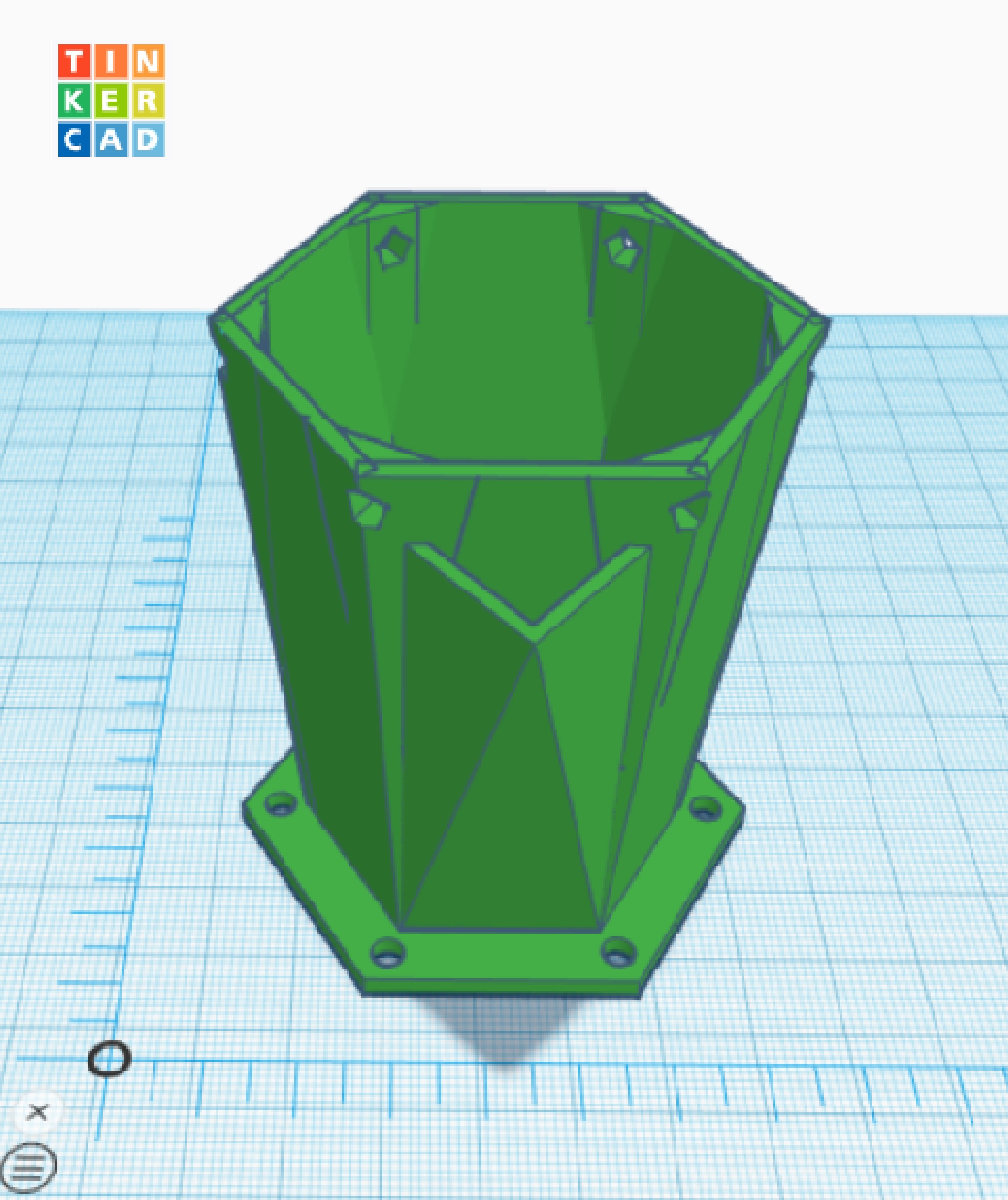
The idea for this Instructable came from a promotion that a local supermarket was running in which, when you bought from them, they would give you little seedling kits. These little kits show how easy it is to get started with gardening and made it into quite a fun activity to grow your own vegetables, flowers and herbs.
The kits contain seeds, some compressed soil and a little cardboard flower pot. That is all it takes to start a little garden and enjoy the amazement of watching a little plant appear before your eyes.
This Instructable aims at showing how to design a little modular seedling planter that will help give everyone a chance to grow their own plants and to get a bit more excited with the idea of gardening.
These little seedling planters are easy to print, don't use much plastic and when grouped together they make use of a basic hydroponics system to keep your little plants well watered. The planters can be used on their own or grouped up and have been designed so that you can hang them by themselves or in groups.
The Instructable also serves as an introduction into how to use the 3D shape editor Tinkercad in order to make models for 3D printing and some of the cool functions it provides to make it a simple process.
The Instructable includes:
- Inspiration for seedling planters
- Tools and Materials
- Design Considerations
- Building the 3D Model
- Printing the Model
- Planting your seeds
- Grouping your Planters
- Hydroponics - "Self watering"
Inspiration for Seedling Planters
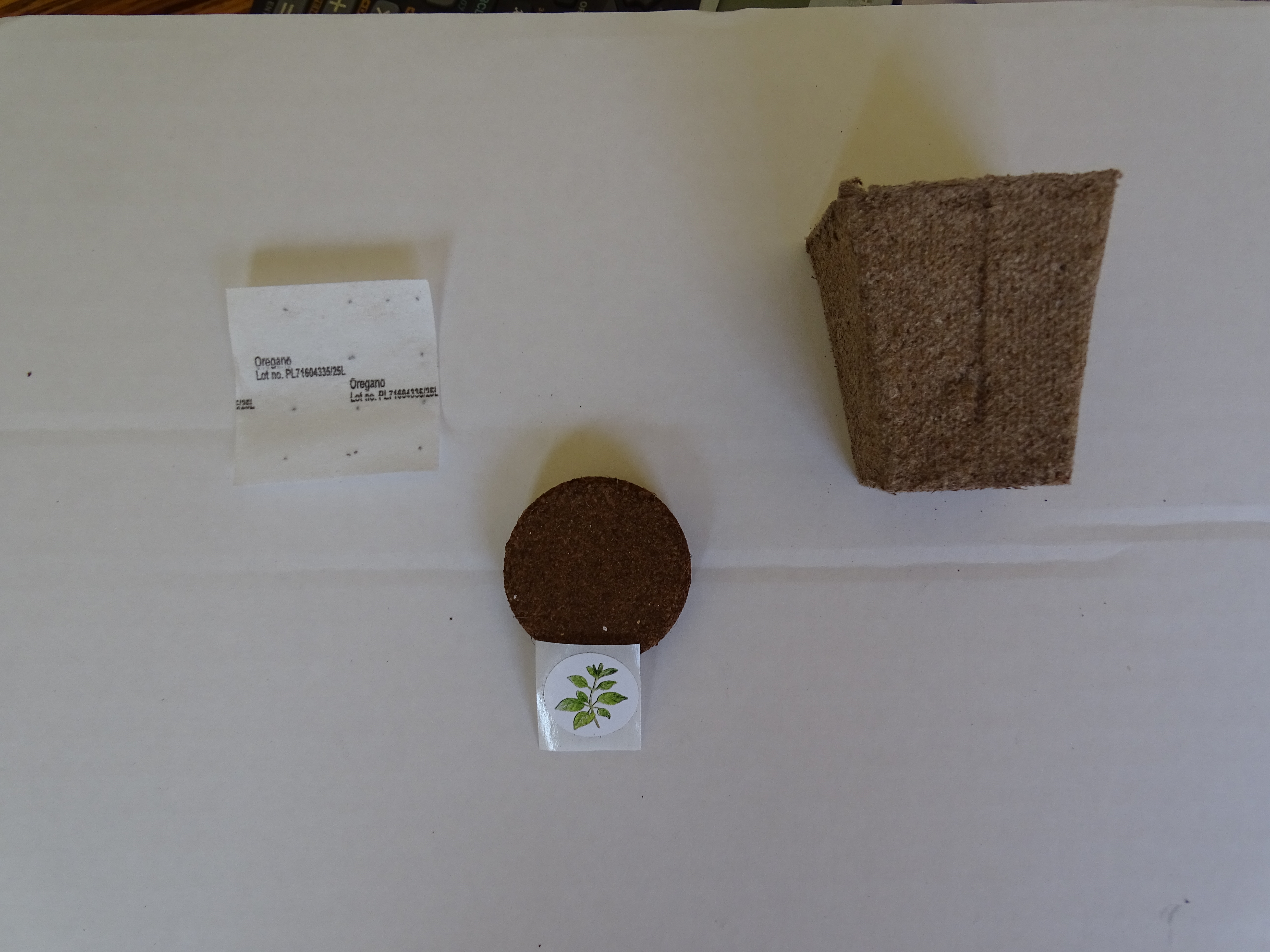
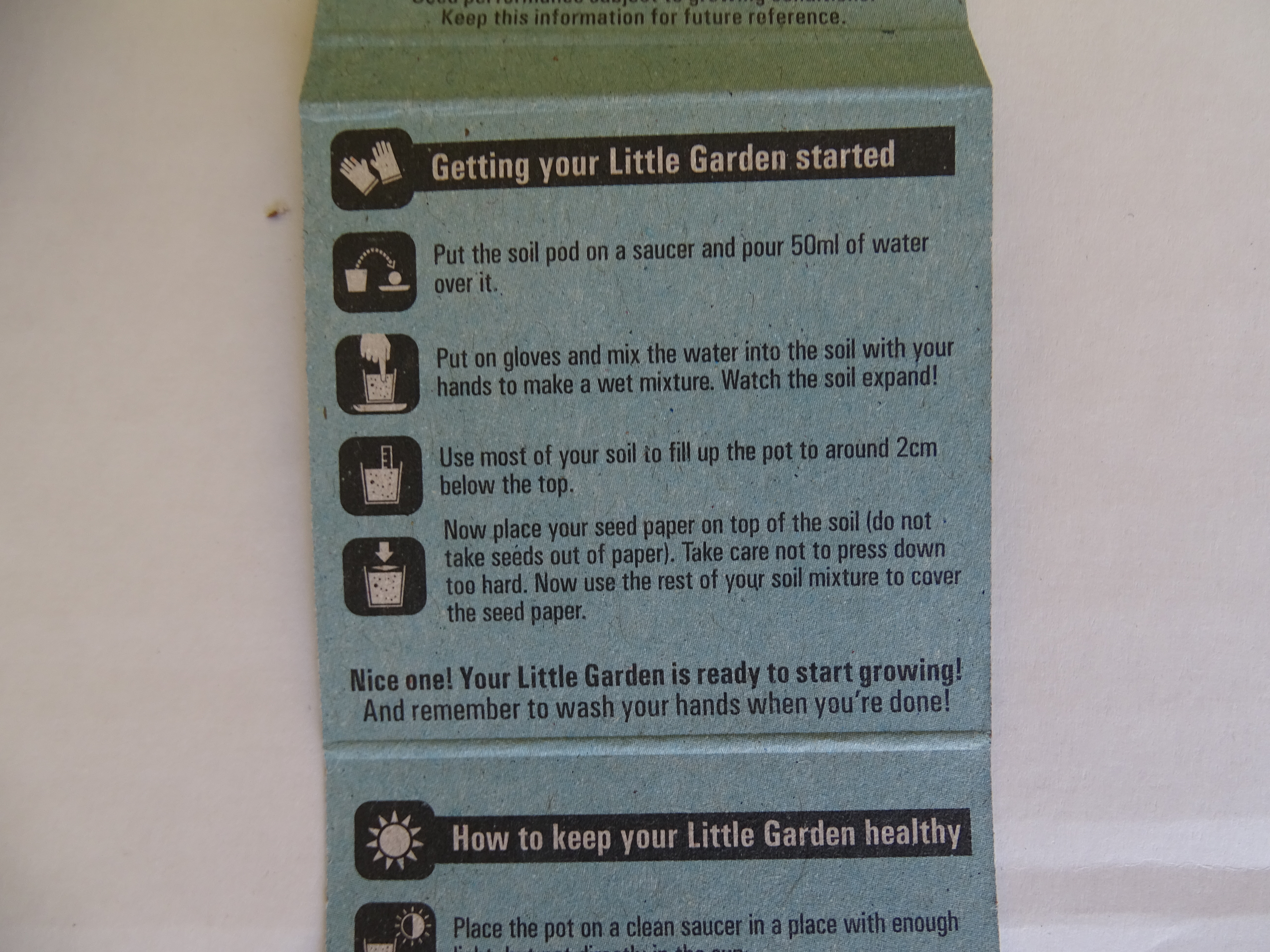
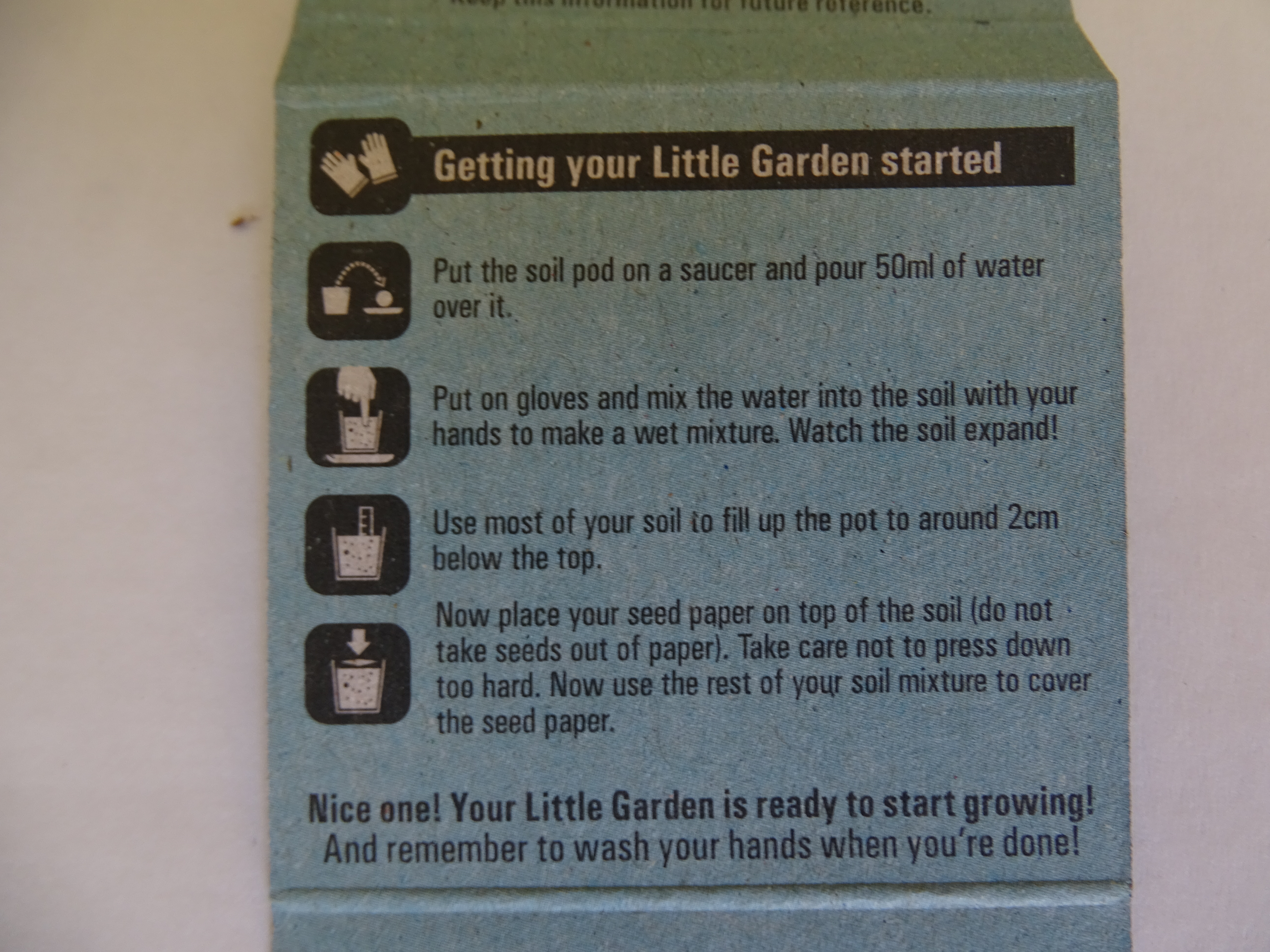
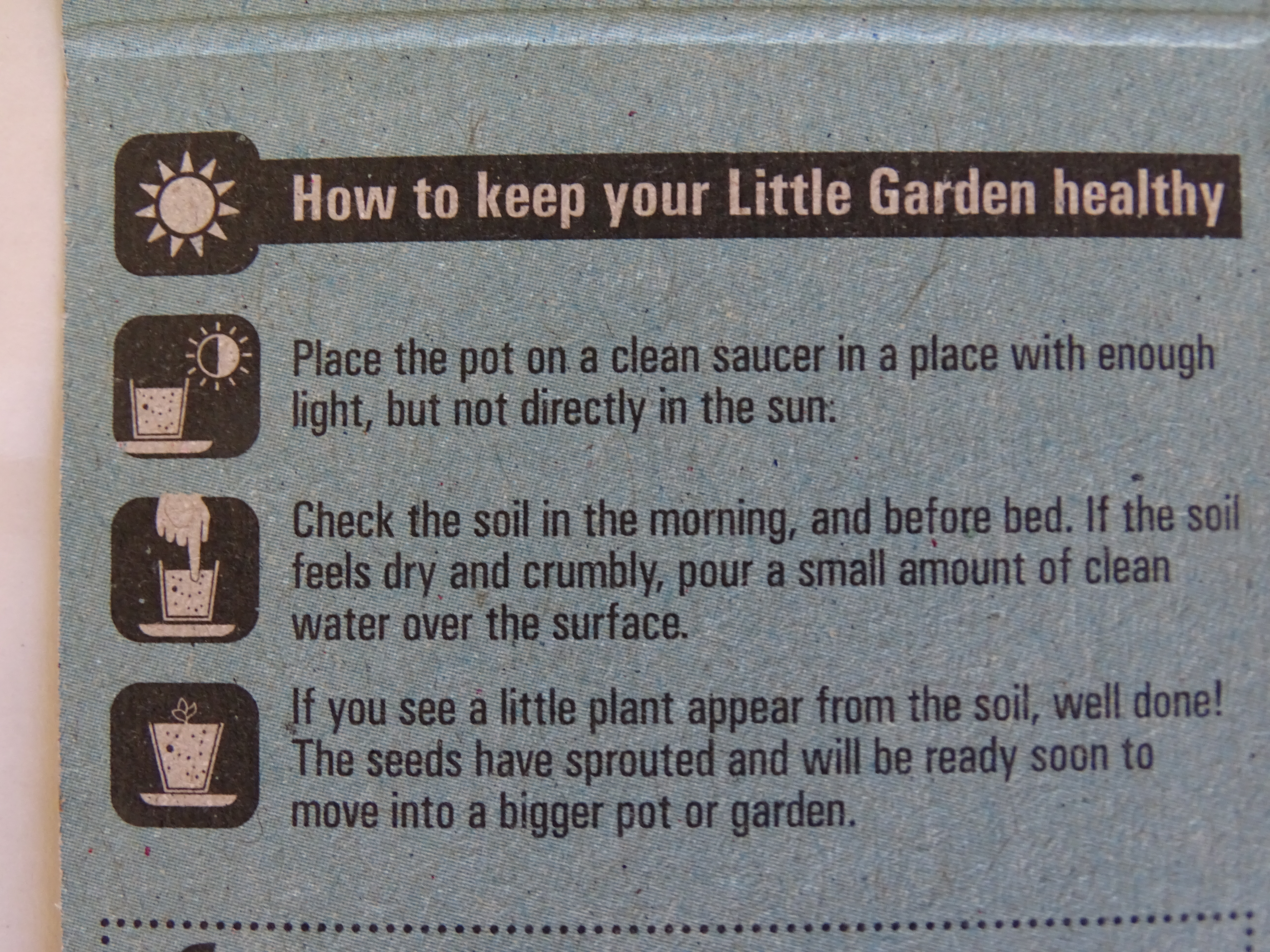

The idea for a seedling planter came up from the free seedling kits that a local grocery store gave out as a promotion. It was amazing to see friends and family getting excited over gardening and watching their seedlings grow.
These kits containing only:
- Seeds for a type of herb, flower or vegetable.
- Compressed Soil
- A seedling pot
- Basic instructions for growing your plant
That is all you need to start your own garden and these items can be purchased from most supermarkets, hardware stores, or nurserys.
I really like the idea of starting a garden or vegetable patch one plant at a time and a couple seedlings seems the perfect way to begin. As the promotion has ended I now need to buy my seeds from a store, I can get the soil from the garden and I have 3D Printed my own reusable Planters.
Tools and Materials
The tools you need are:
- Computer with internet access
- A Tinkercad Account (free to sign up)
- A 3D Printer and slicer software
- Scissors
- A knife to clean up loose edges on the print
I'm quite lucky that I have access to a 3D printer at work and that my boss doesn't mind me using it on occasion. Alternatively you can use a 3D printer store, where you send a design through to them and they print it for you.
The materials you need are:
- Seeds
- Potting Soil
- Newspaper (optional)
- Cotton String
- 3D Printing Filament
Design Considerations
So I bounced around with the idea for a seedling planter for a while, before eventually deciding on a design and basic shape. Seeing as I want the planter to be modular I wanted each individual unit to be quite small and easy to print. The design considerations I debated over are as follows:
- The basic shape came from a honeycomb pattern, as each individual hexagon can fit in with as many others as you like. Thus you can start the set one plant at a time and there is no need to have loads of them from the get go.
- I wanted the planters to be both usable on their own or as groups; either on a bench, table or suspended. Thus I put holes in the design such that they can be tied together as groups, suspended one under another or suspended as a group. These holes needed to be outside the edges of the pot so that it doesn't leak.
- The planters need to be waterproof so that they don't leak onto the windowsill/table when you put them down or drip onto the floor when you hang them. This is relatively easy to do if your print settings are right but means you need to be careful not to over water your plants.
- Seedlings can dry out quickly if you forget to water them for a day or two and if you water too vigorously you can wash away the seeds before they sprout. So I designed a simple hydroponics system where you put water into a separate container, it travels along a string and waters from the base up into the soil.
- The planters need to be easy to print and not require any support material such that it doesn't require much post print clean-up or waste any plastic. To do this when I designed the planter I made sure there weren't any big overhangs and the holes were more triangular than round so that there aren't bridging points that need supports.
- To simplify the design I made it so you tie the planters together rather than have a rigid connection so the designs look simple and allow for a degree of error with the actual prints.
Building the 3D Model
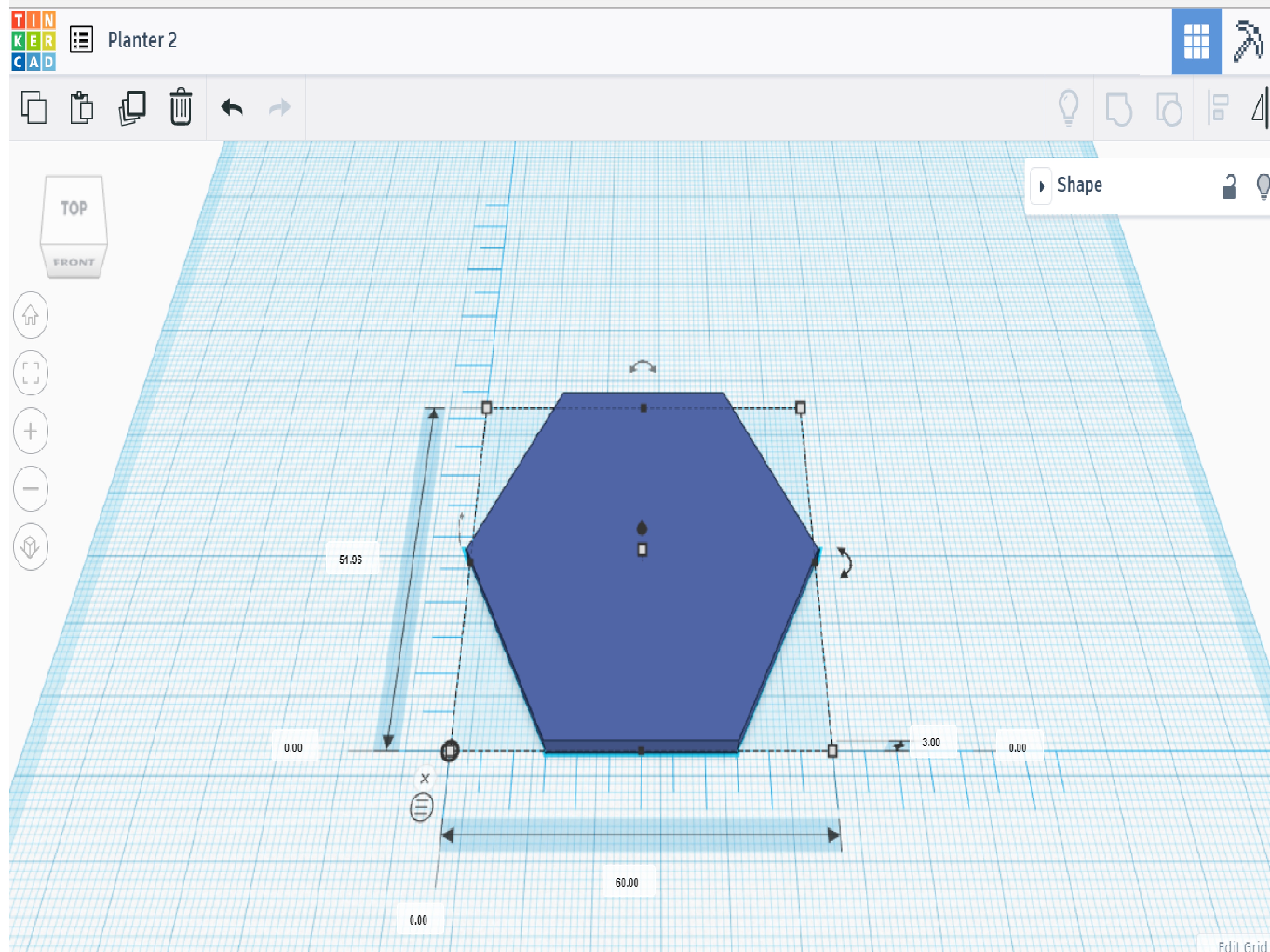
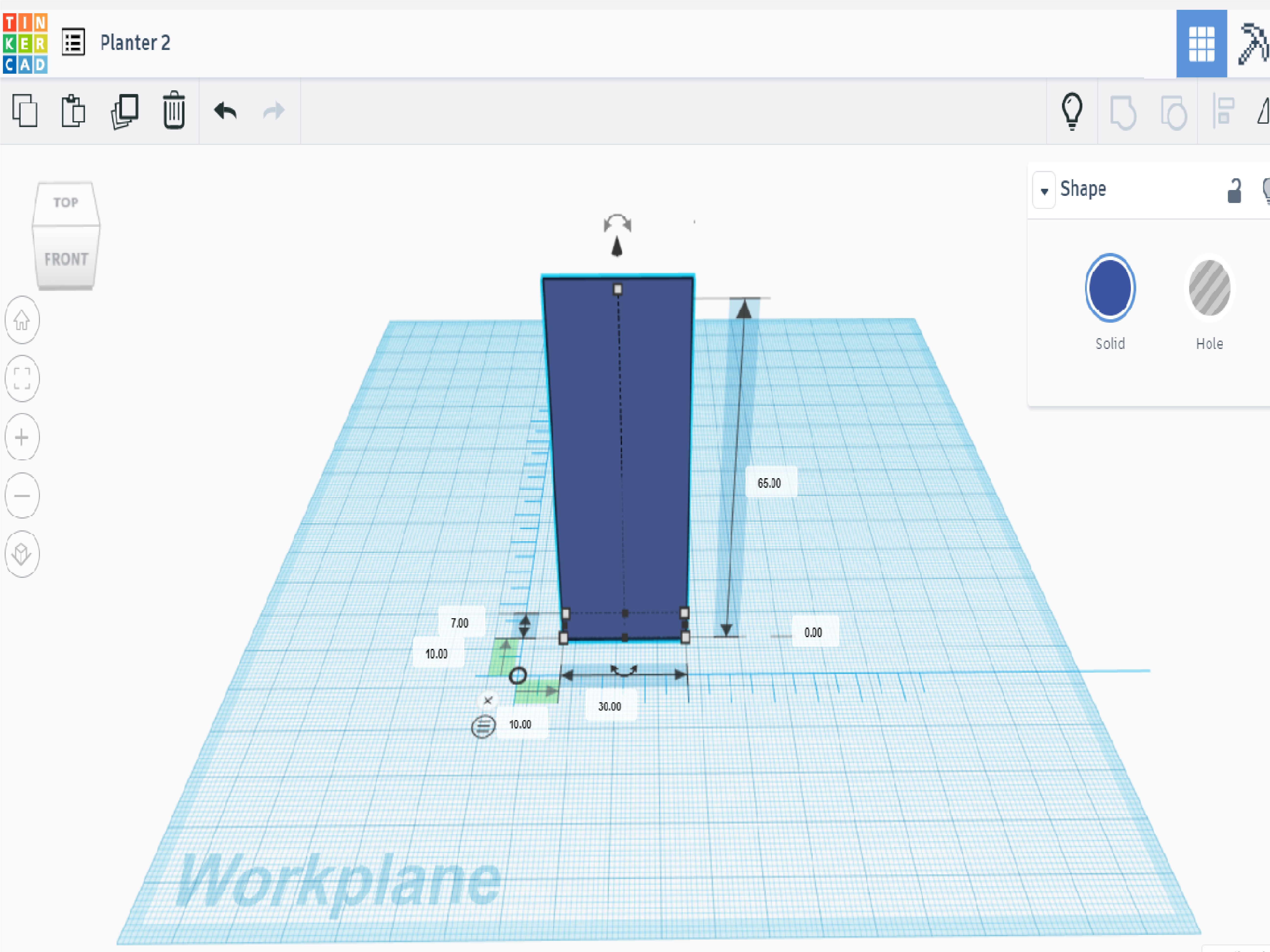
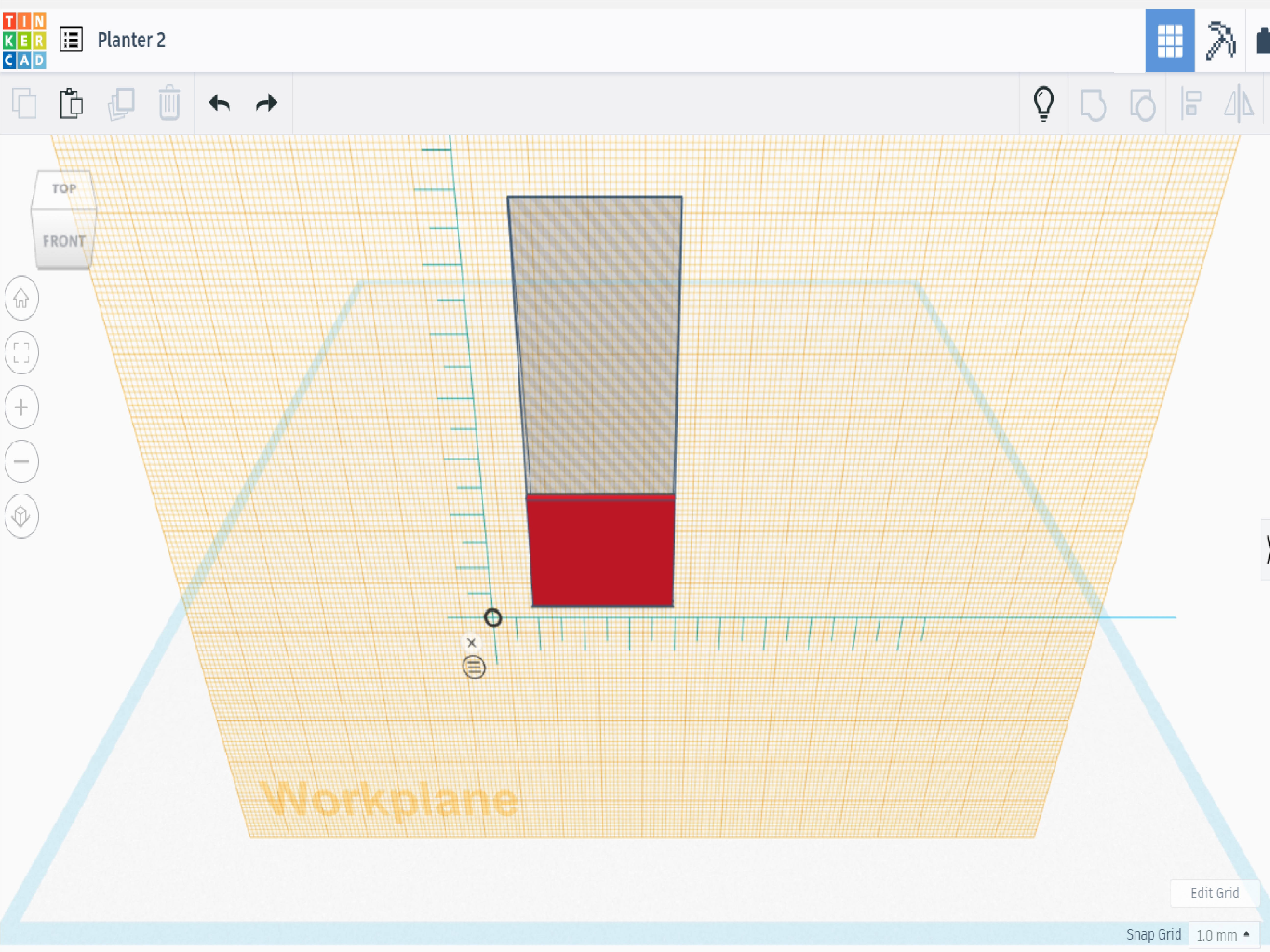
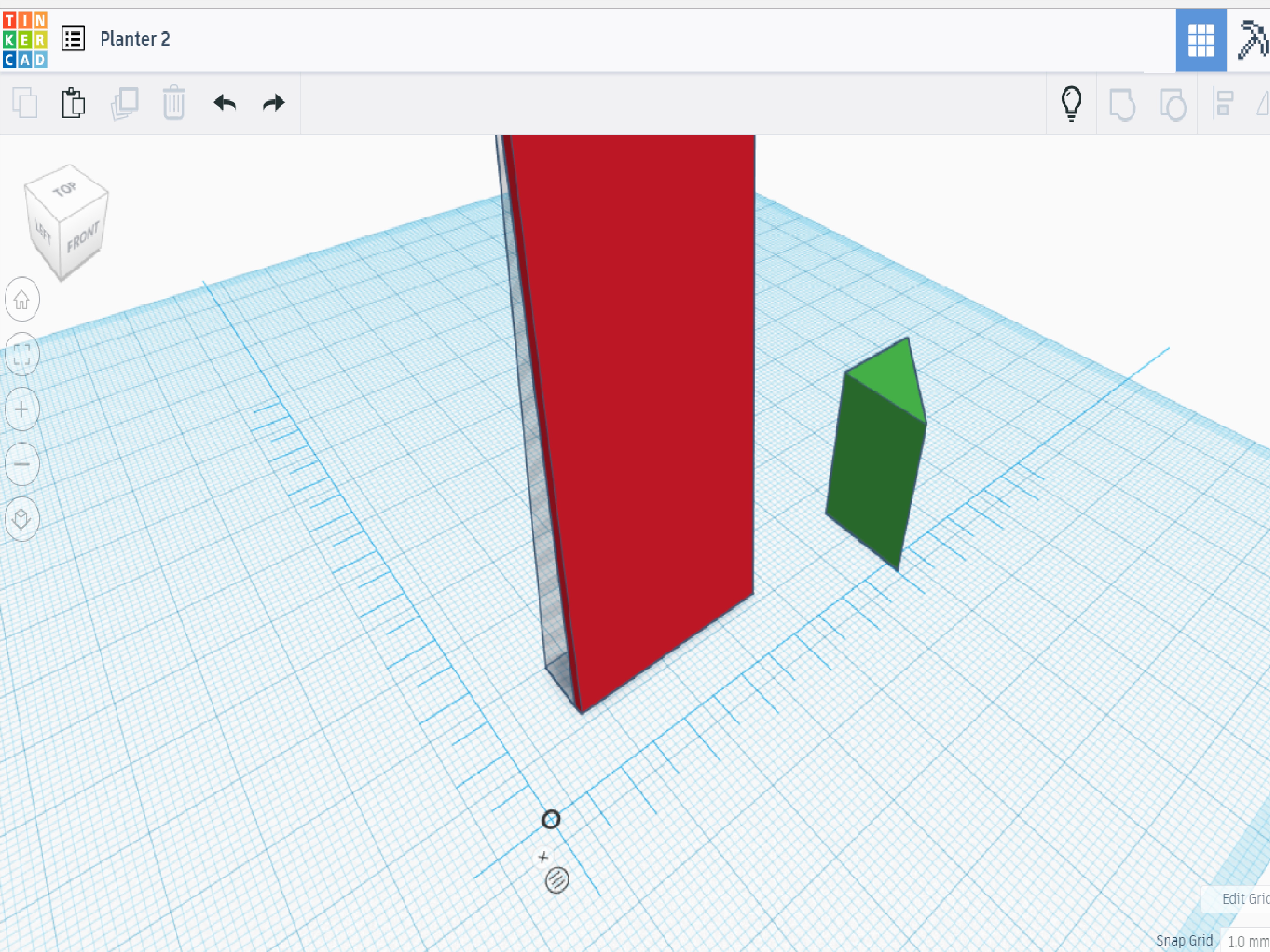
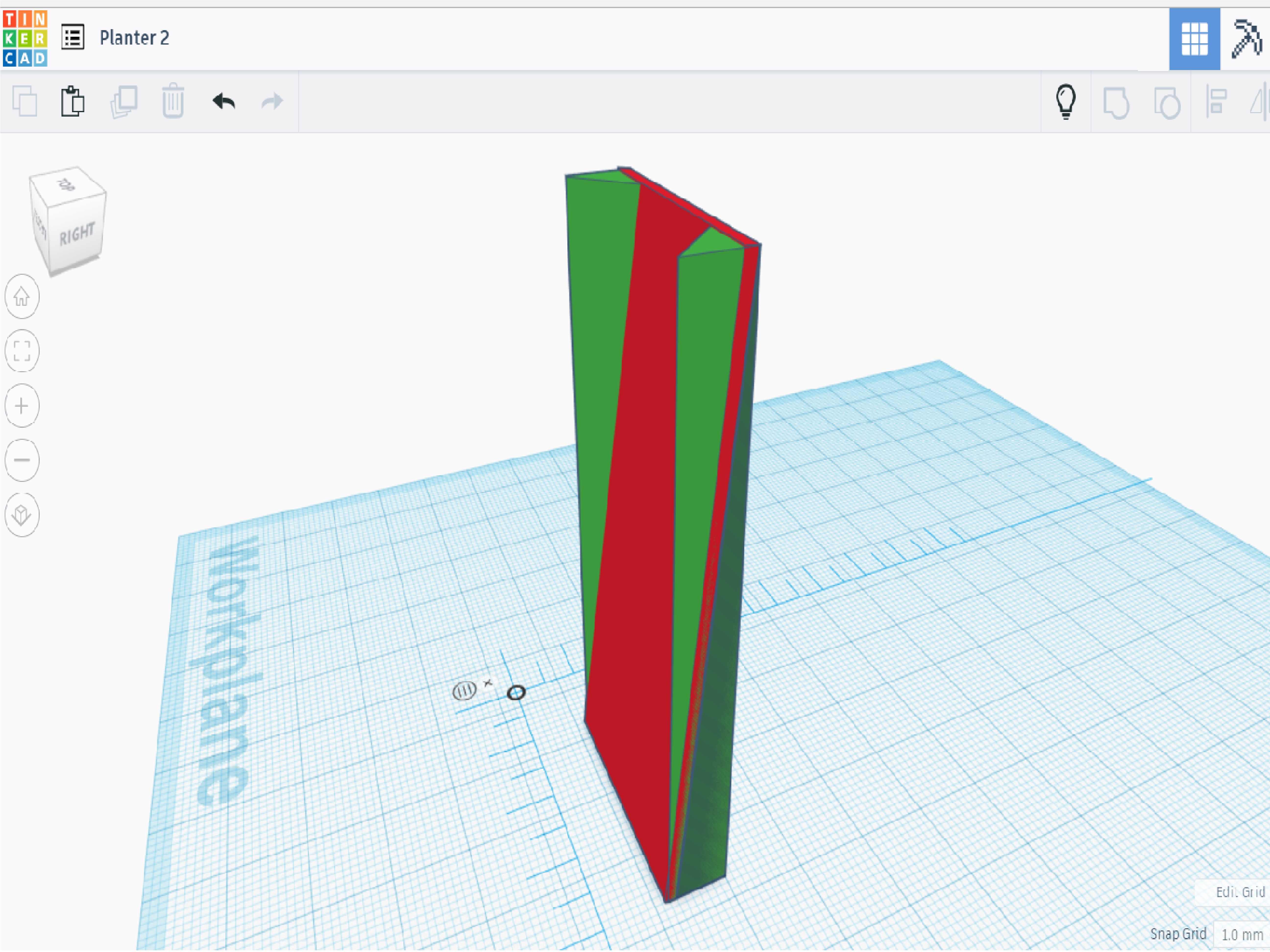
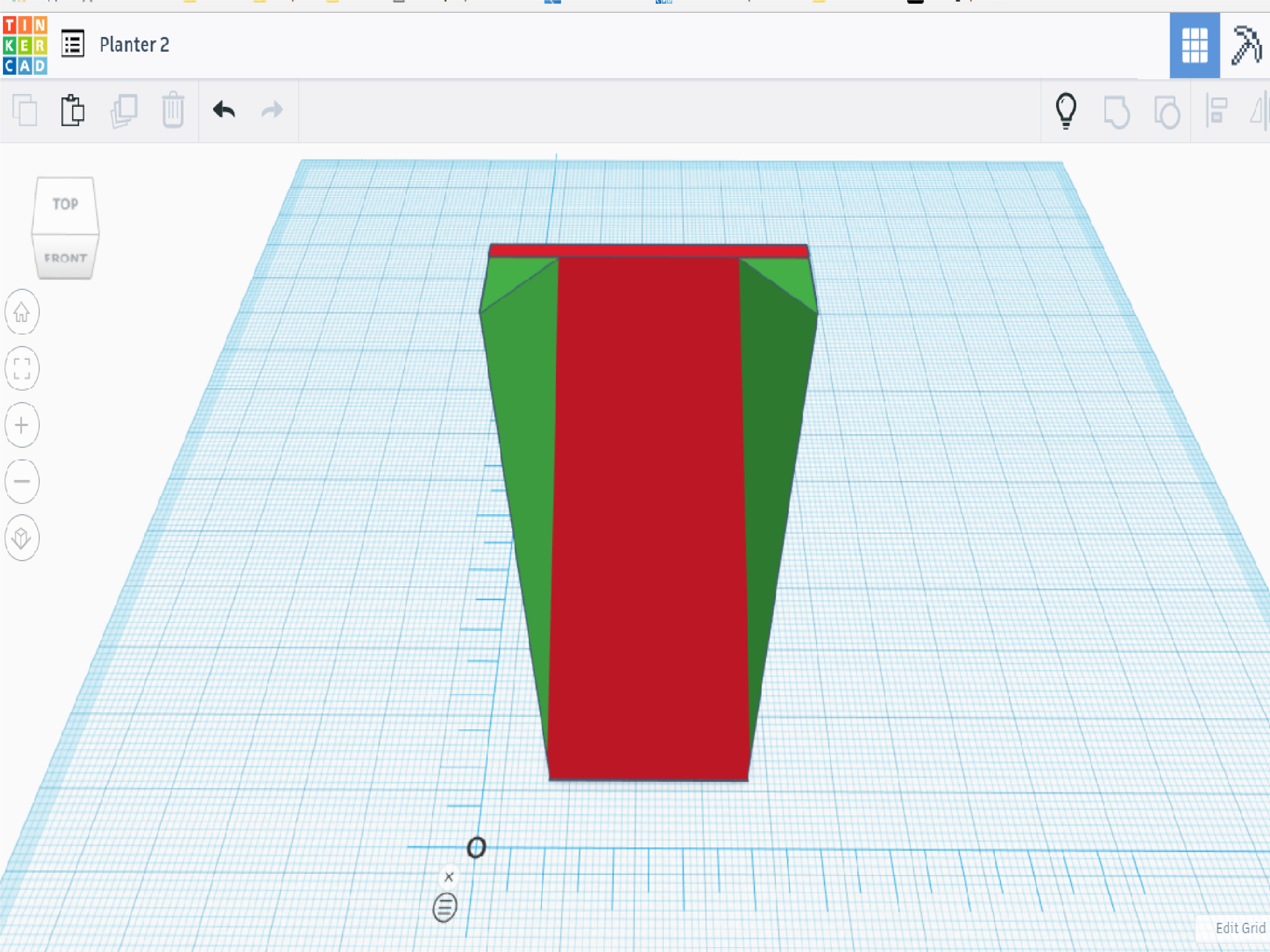
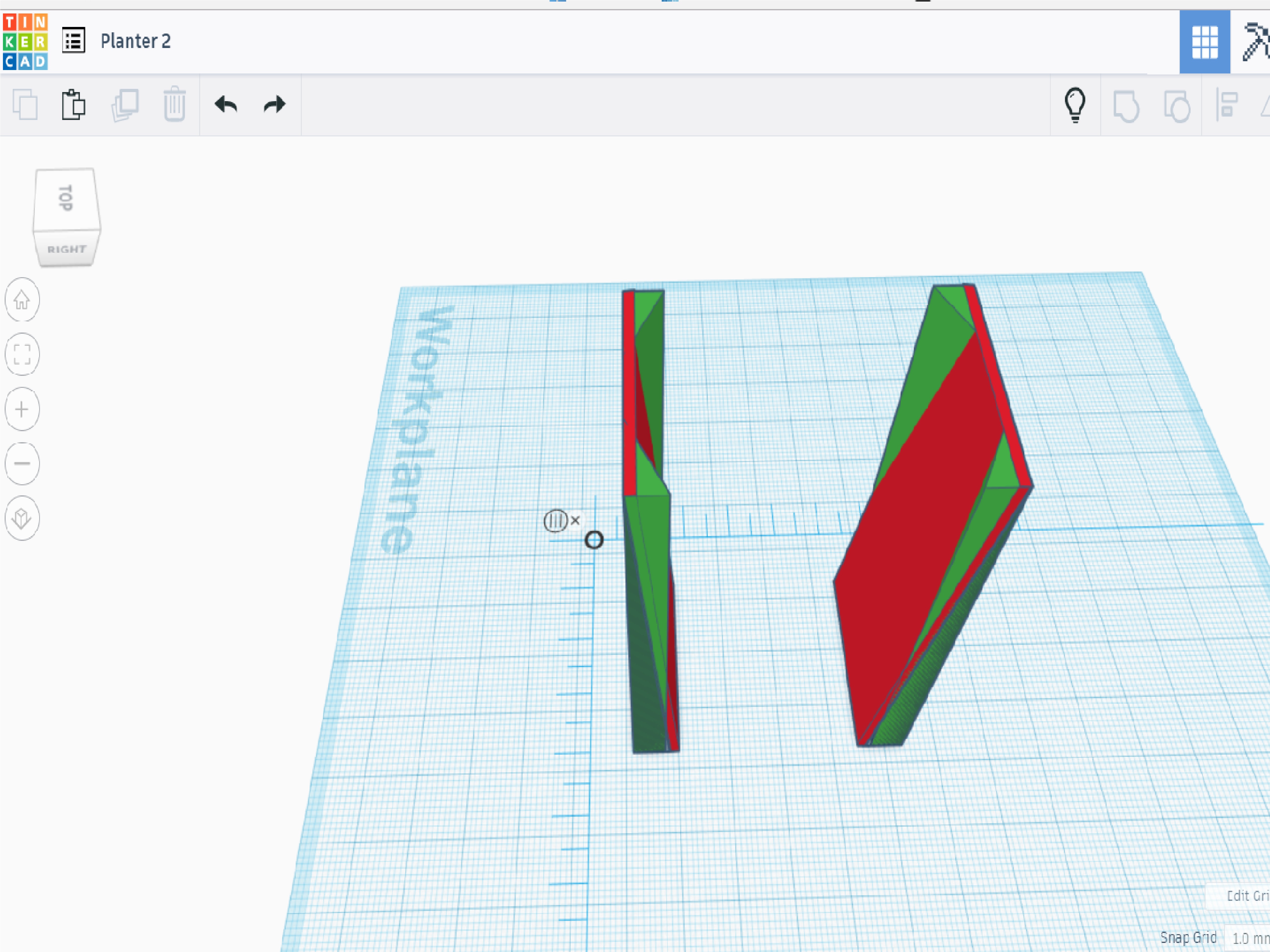
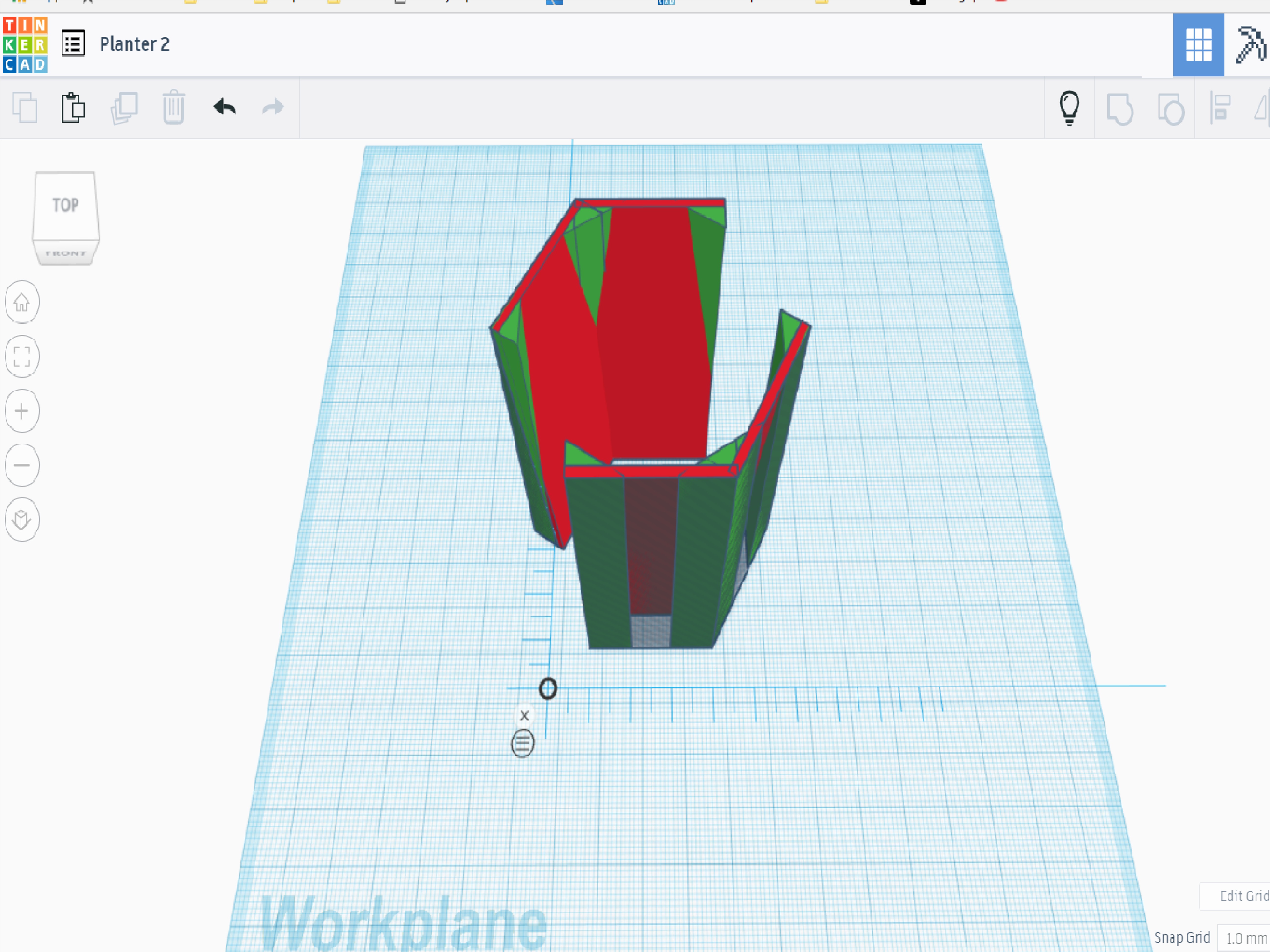
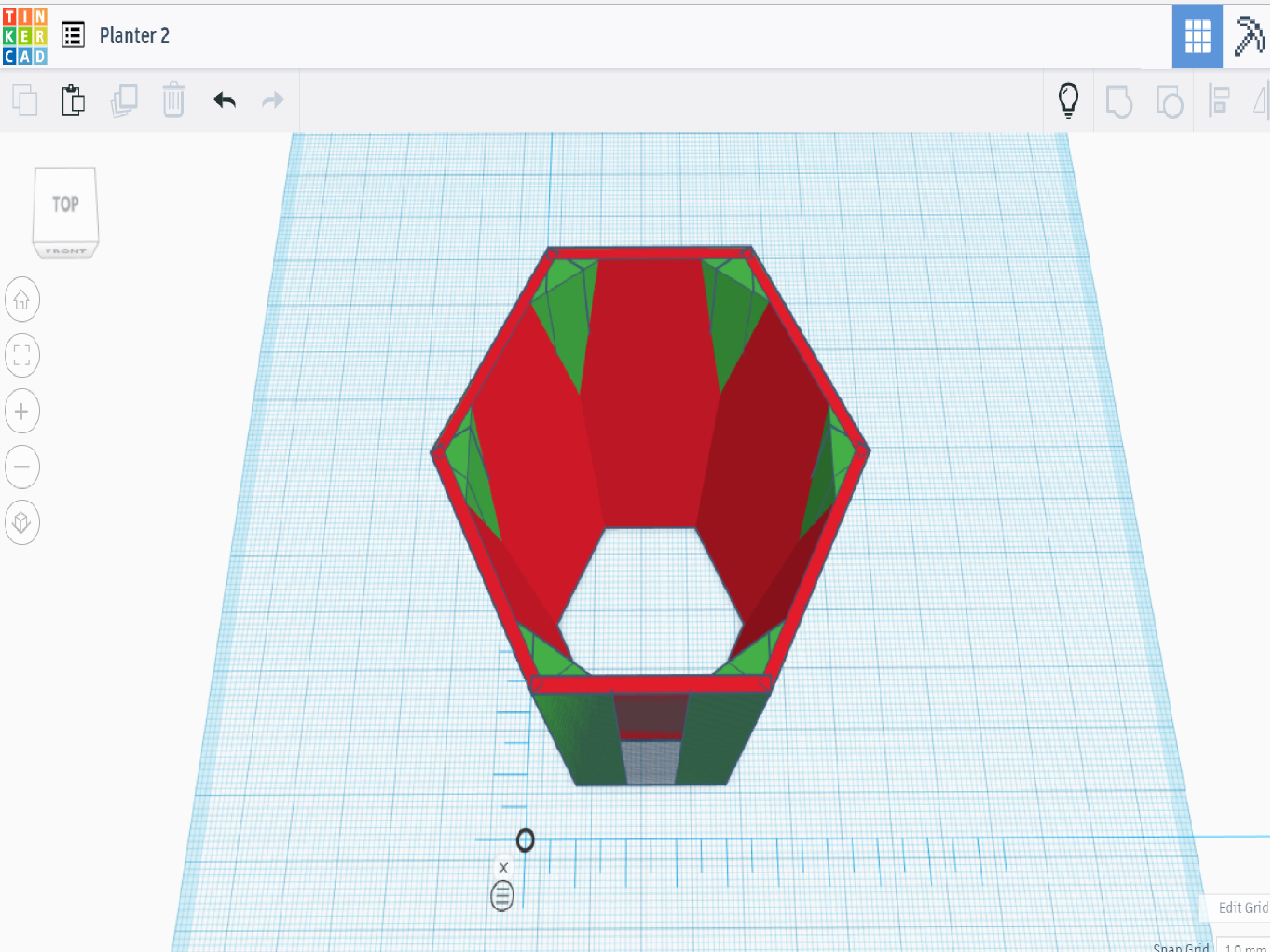
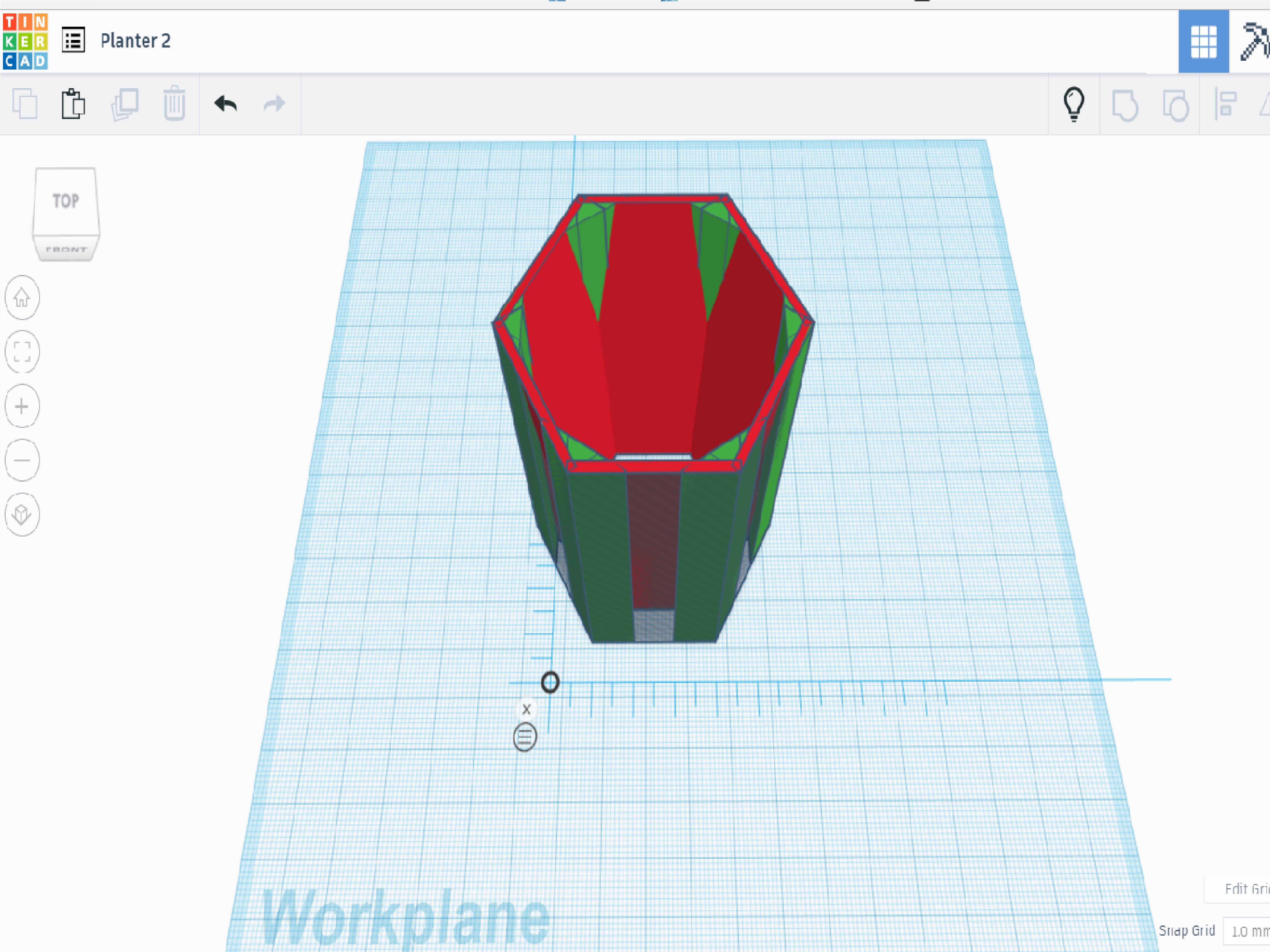
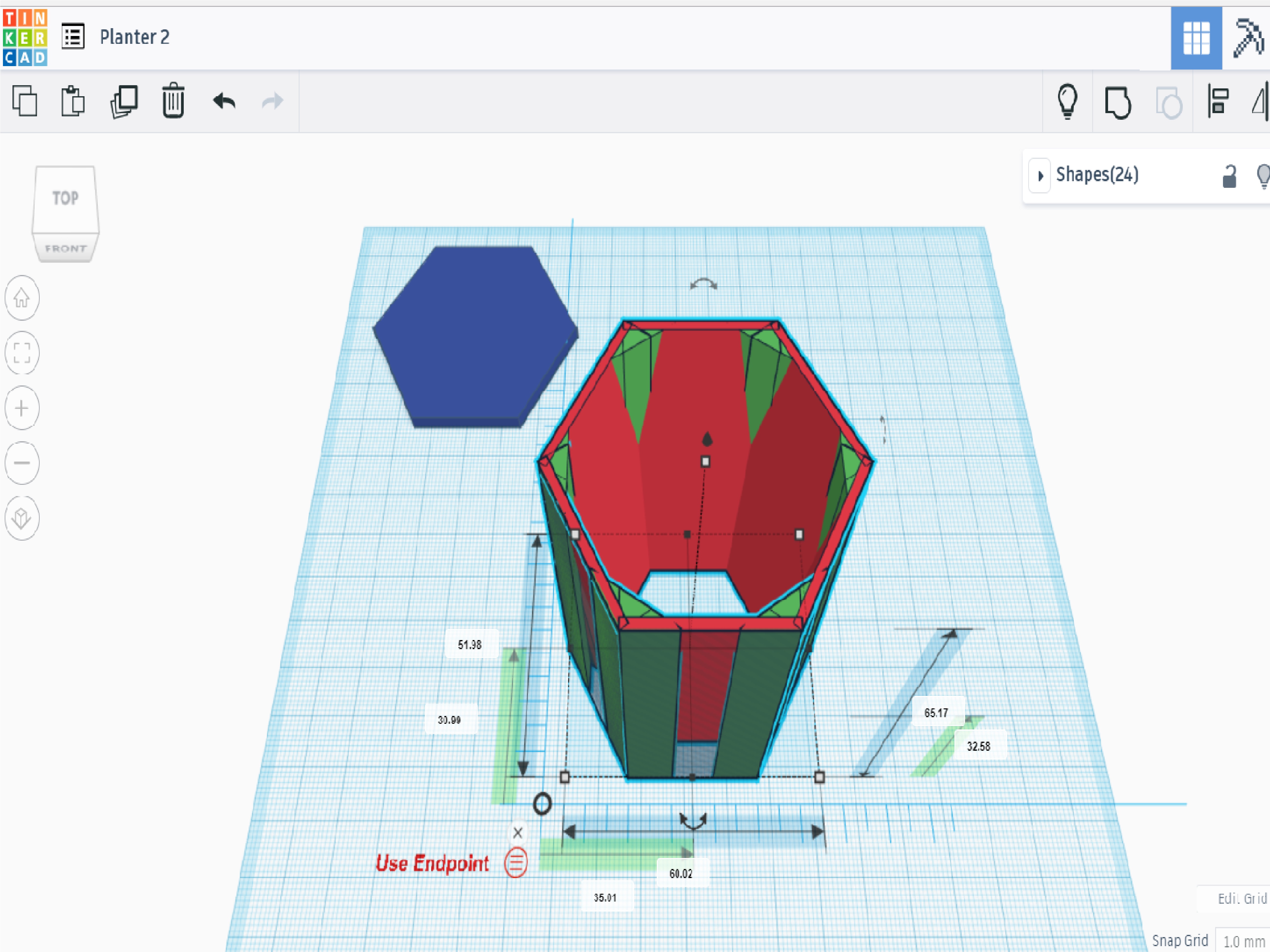
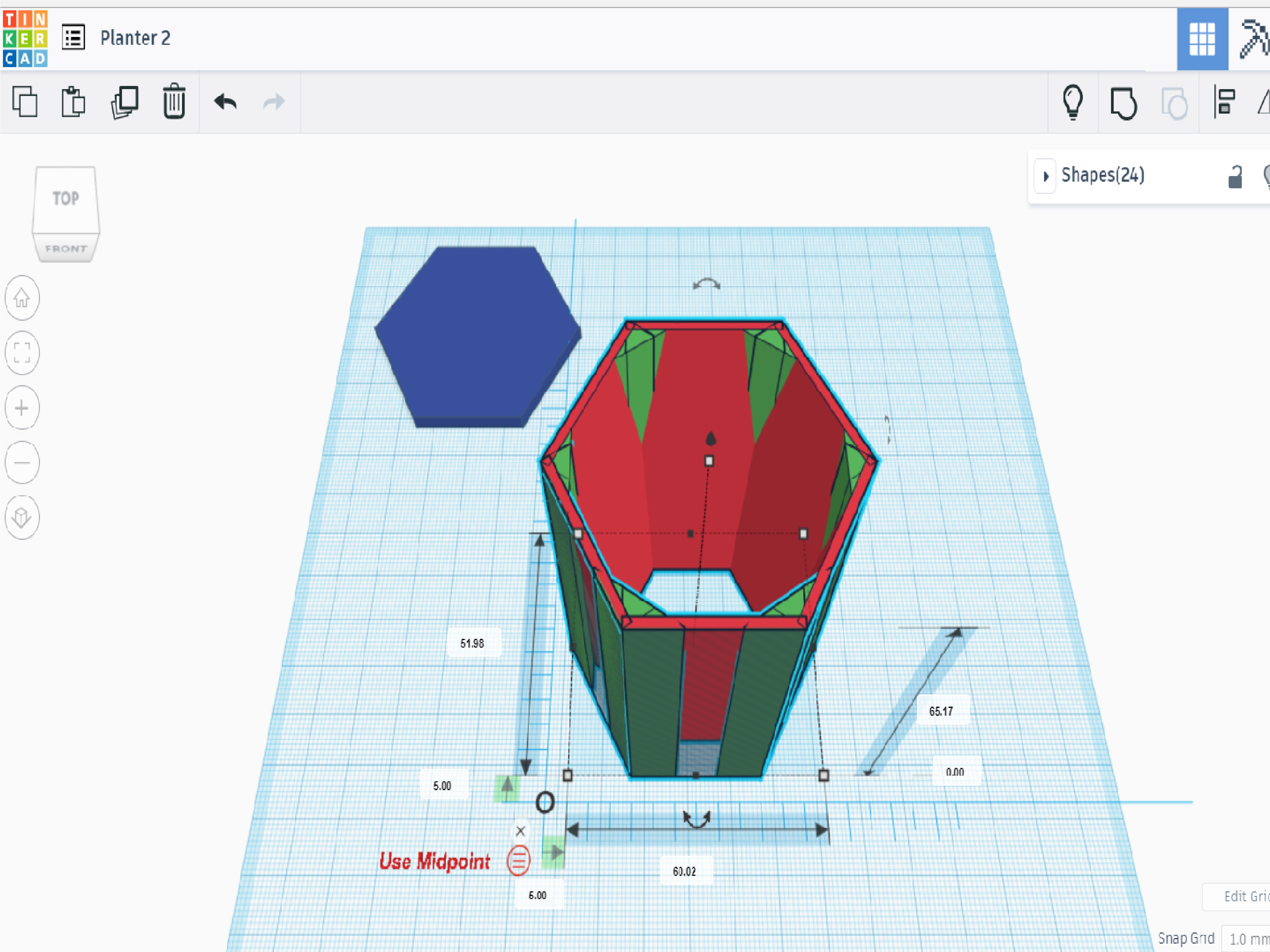
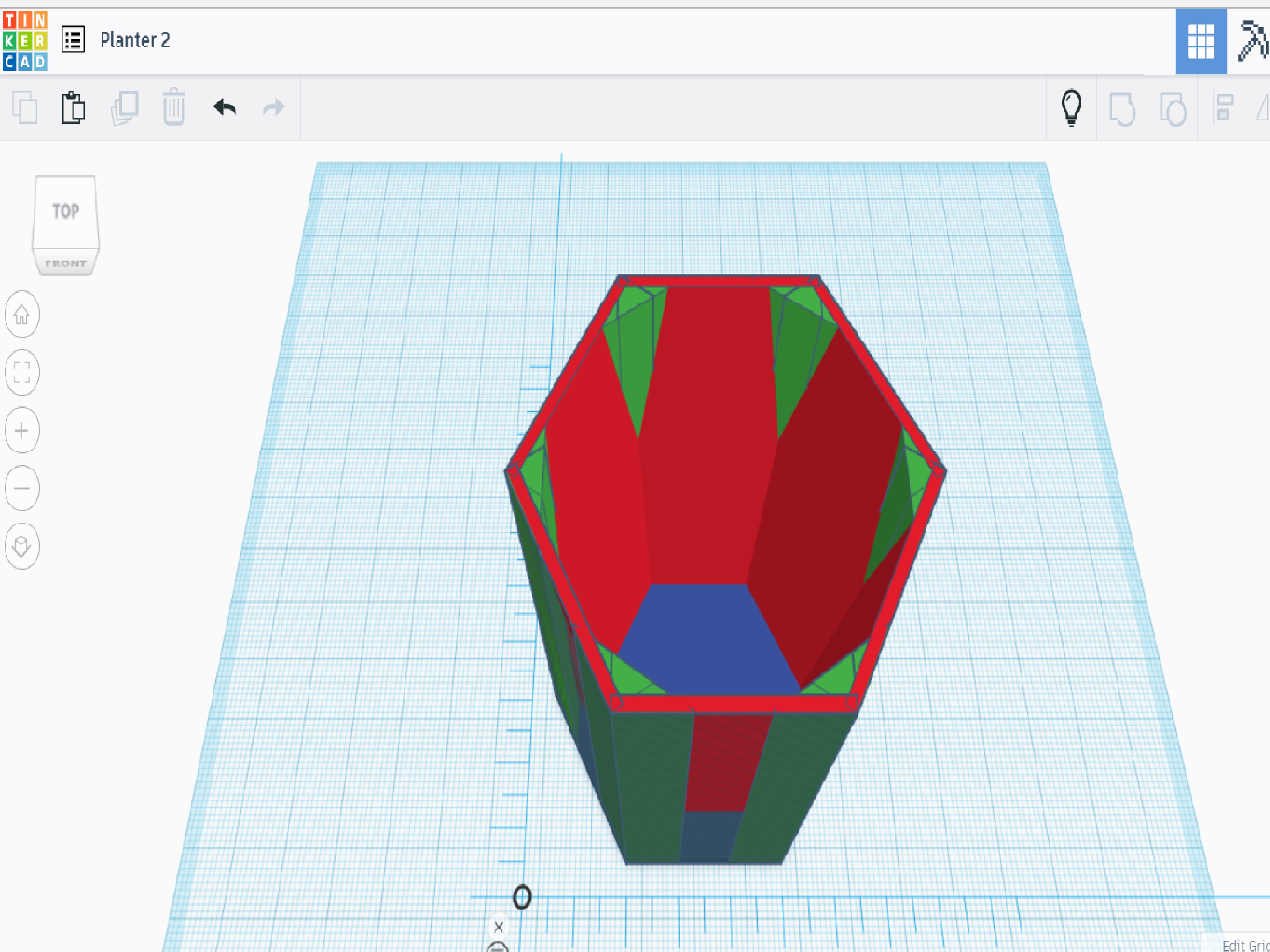
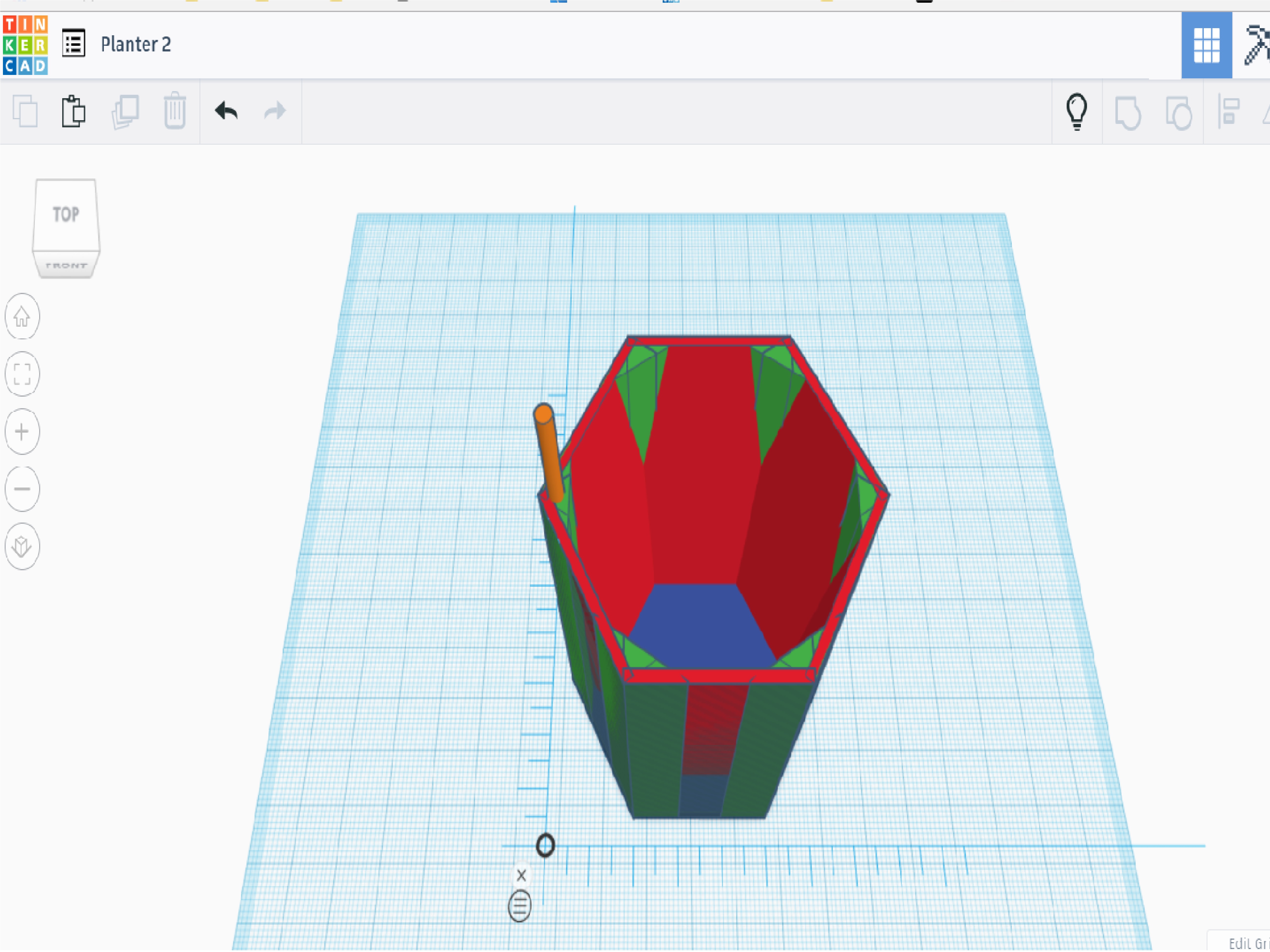
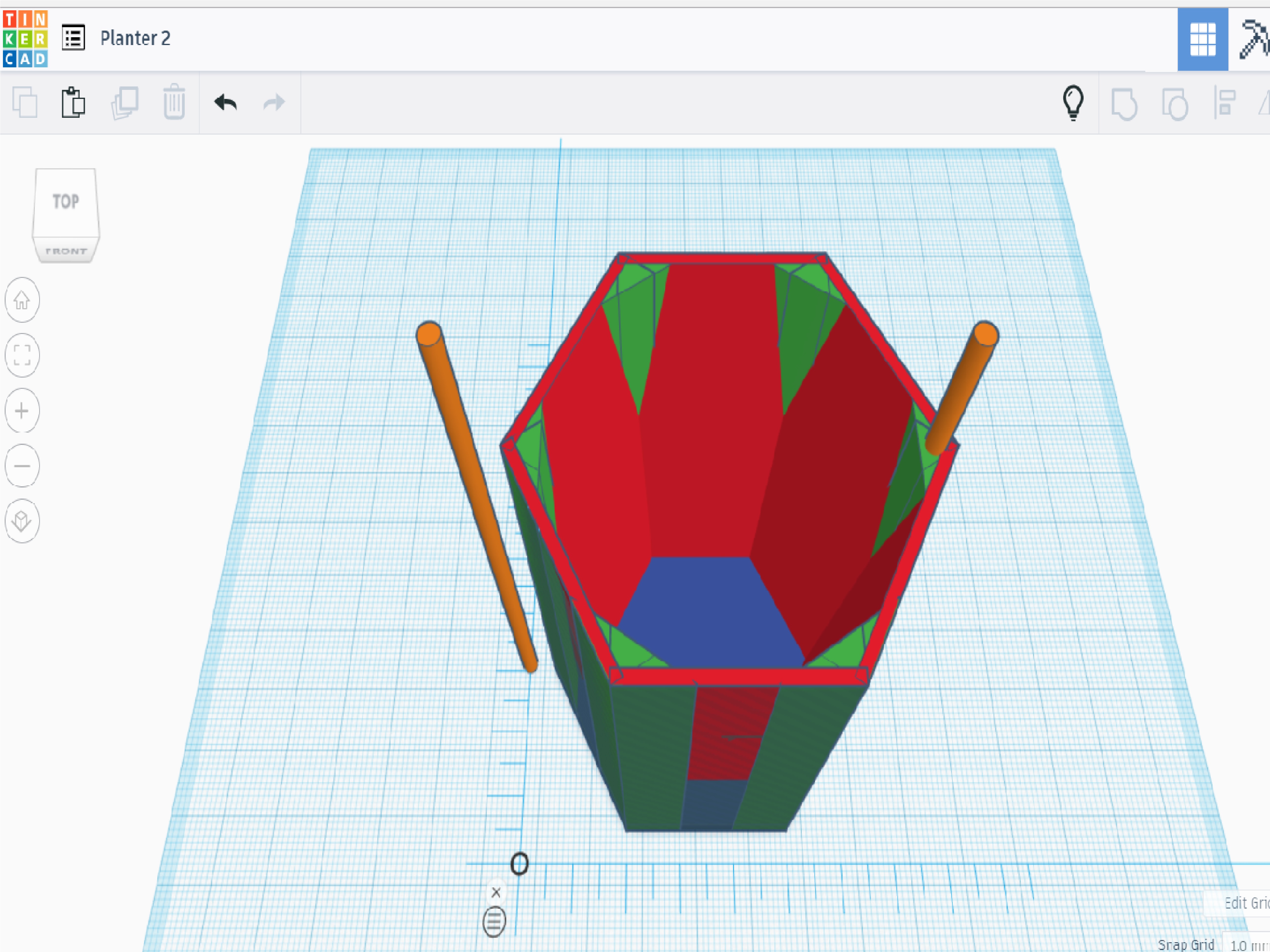
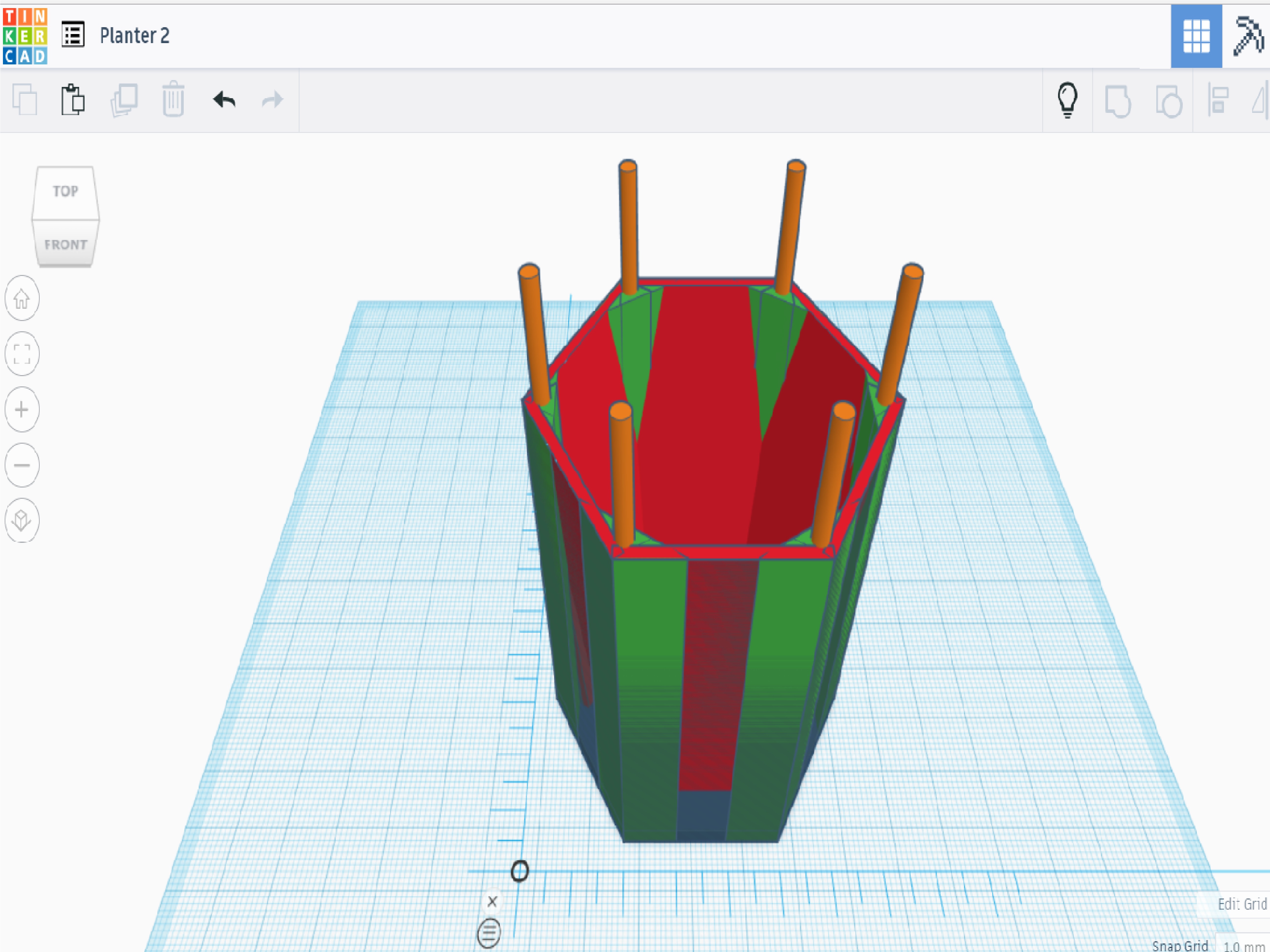
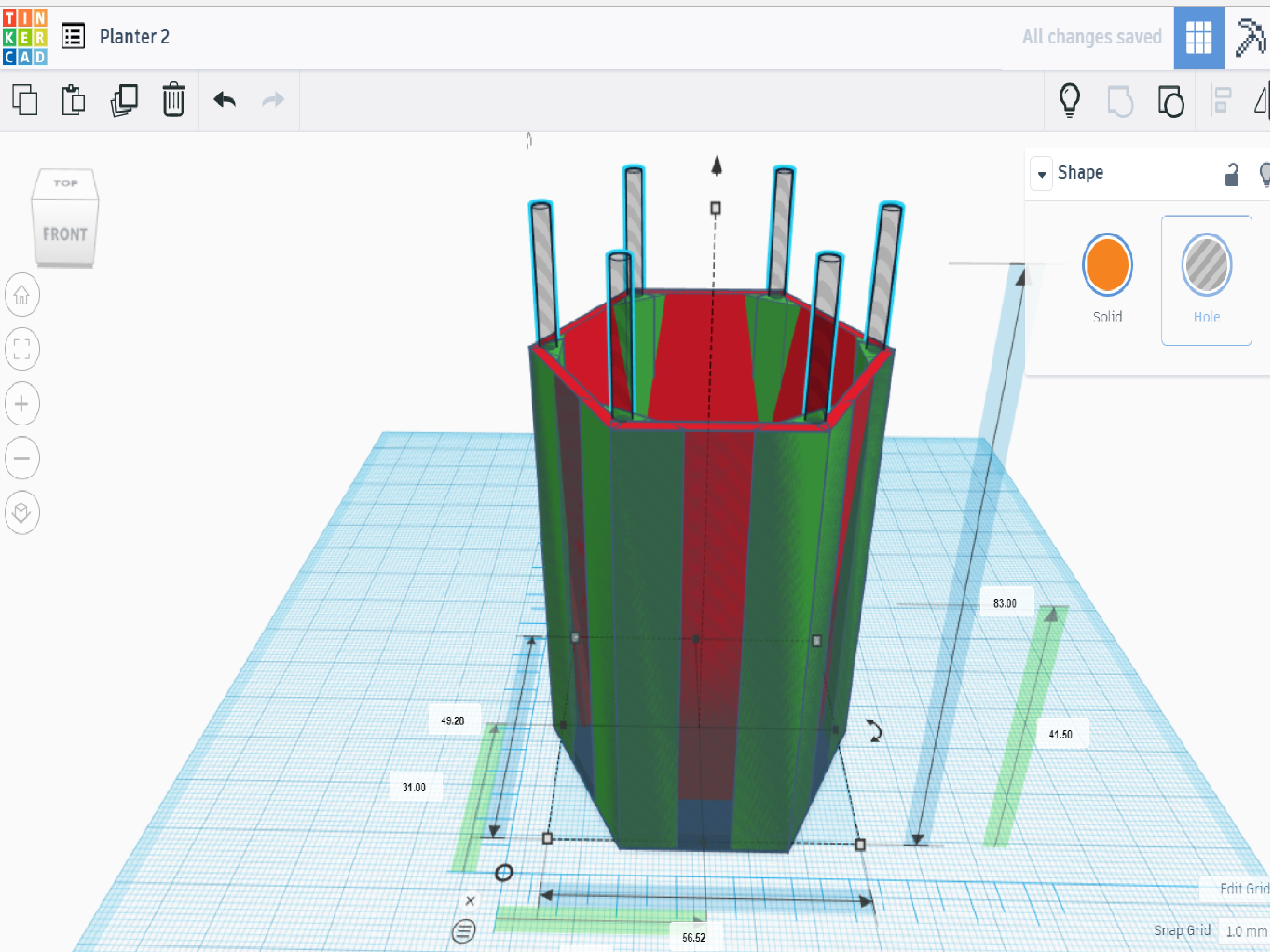
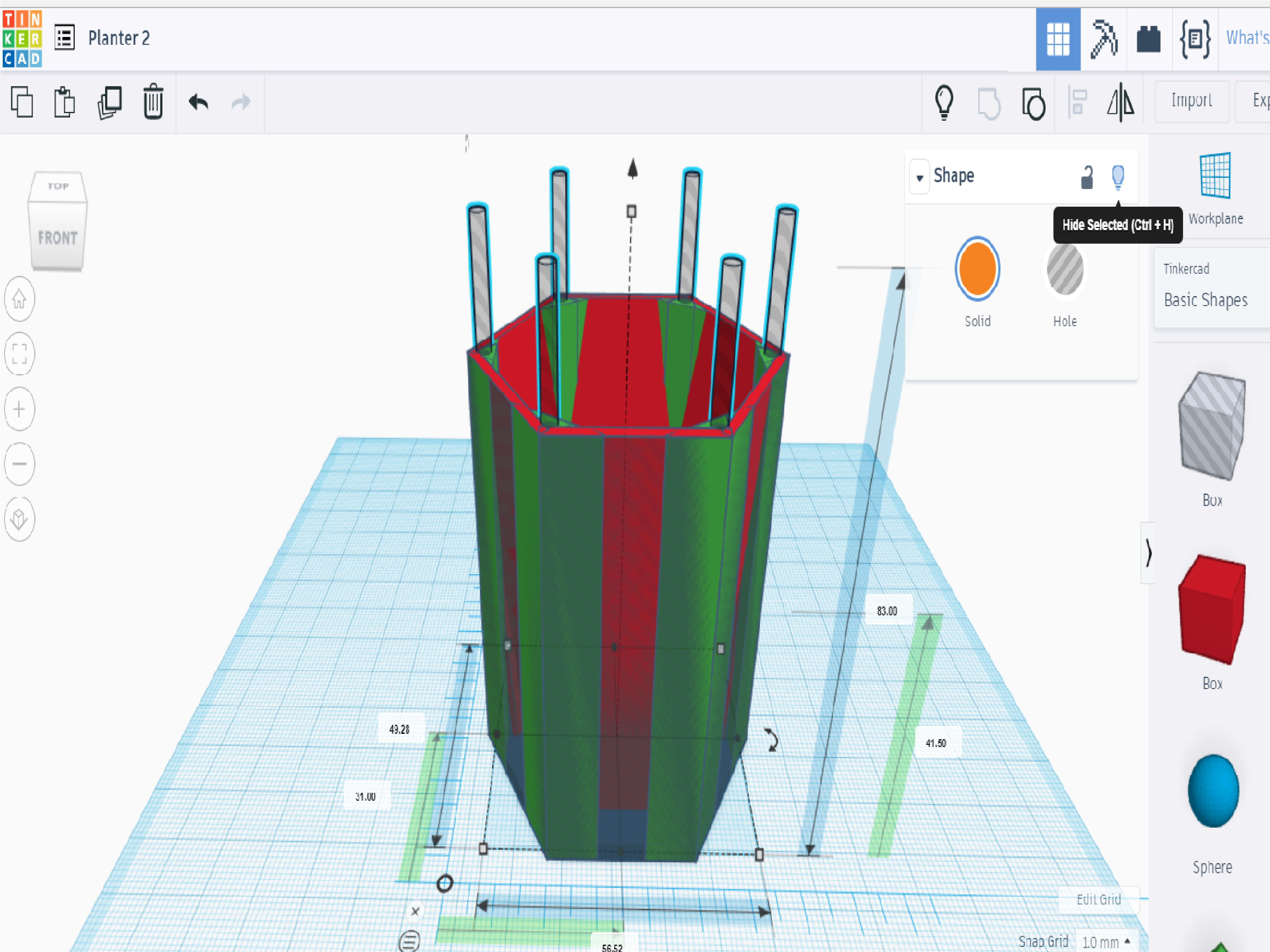
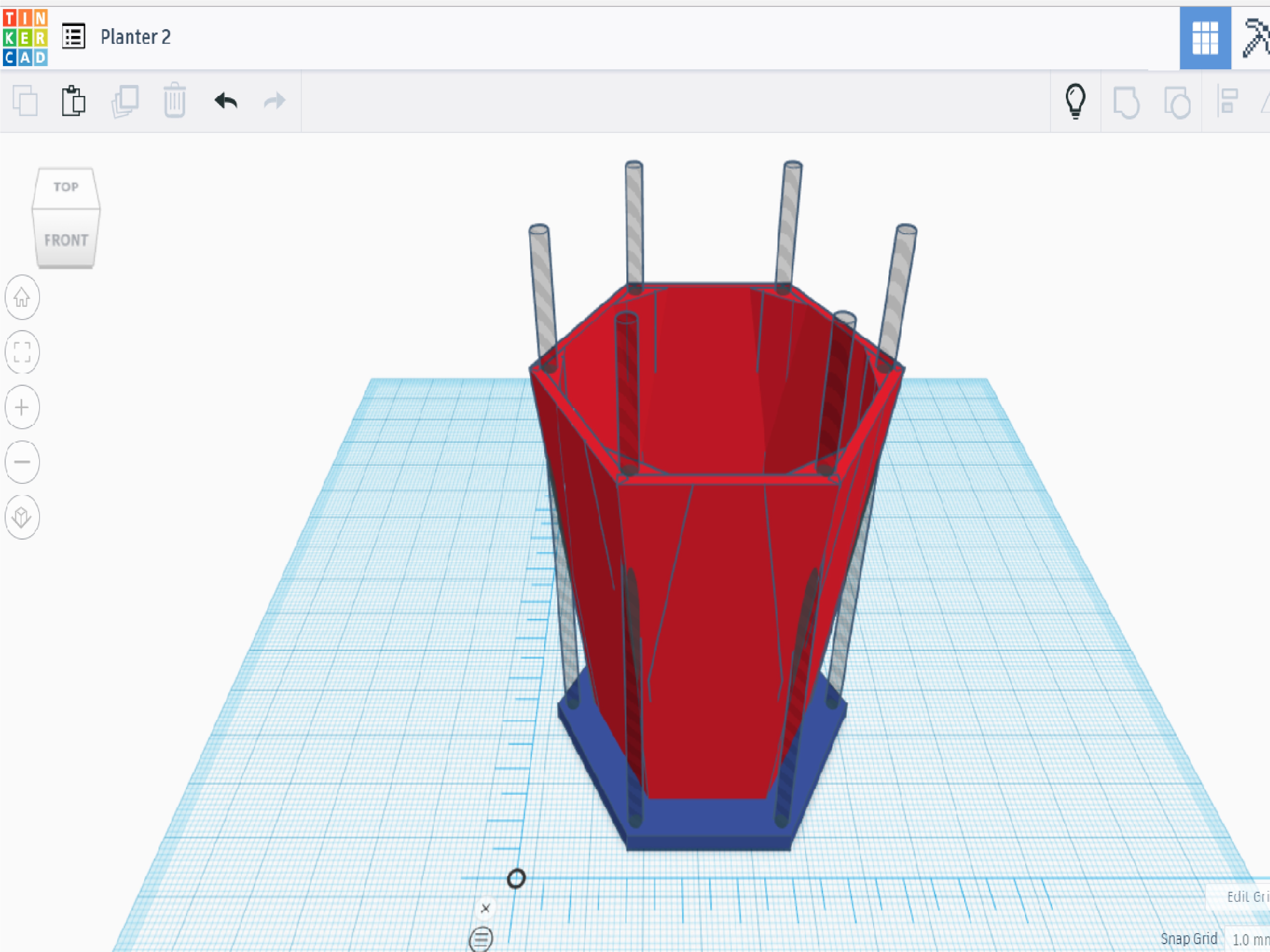
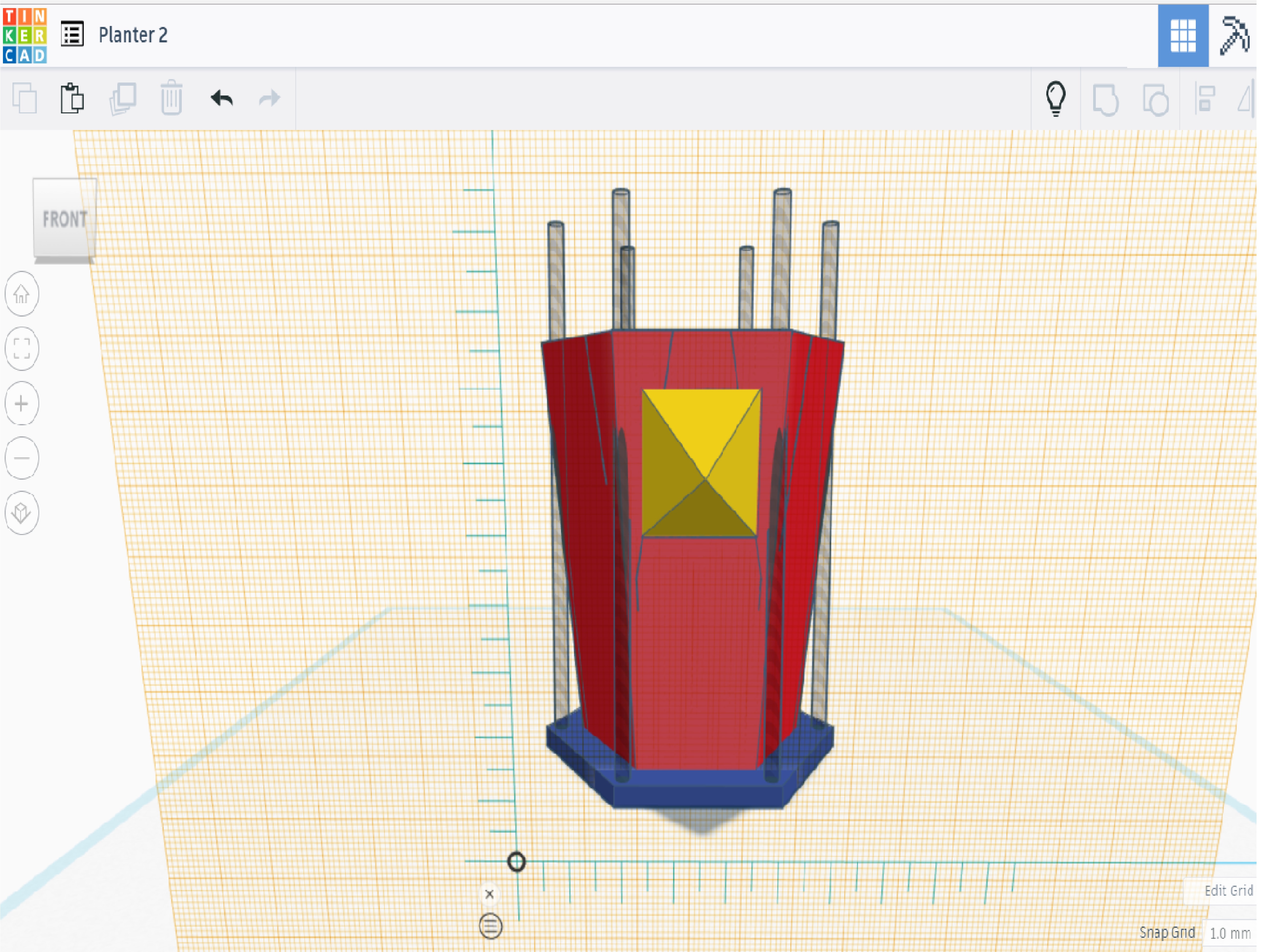
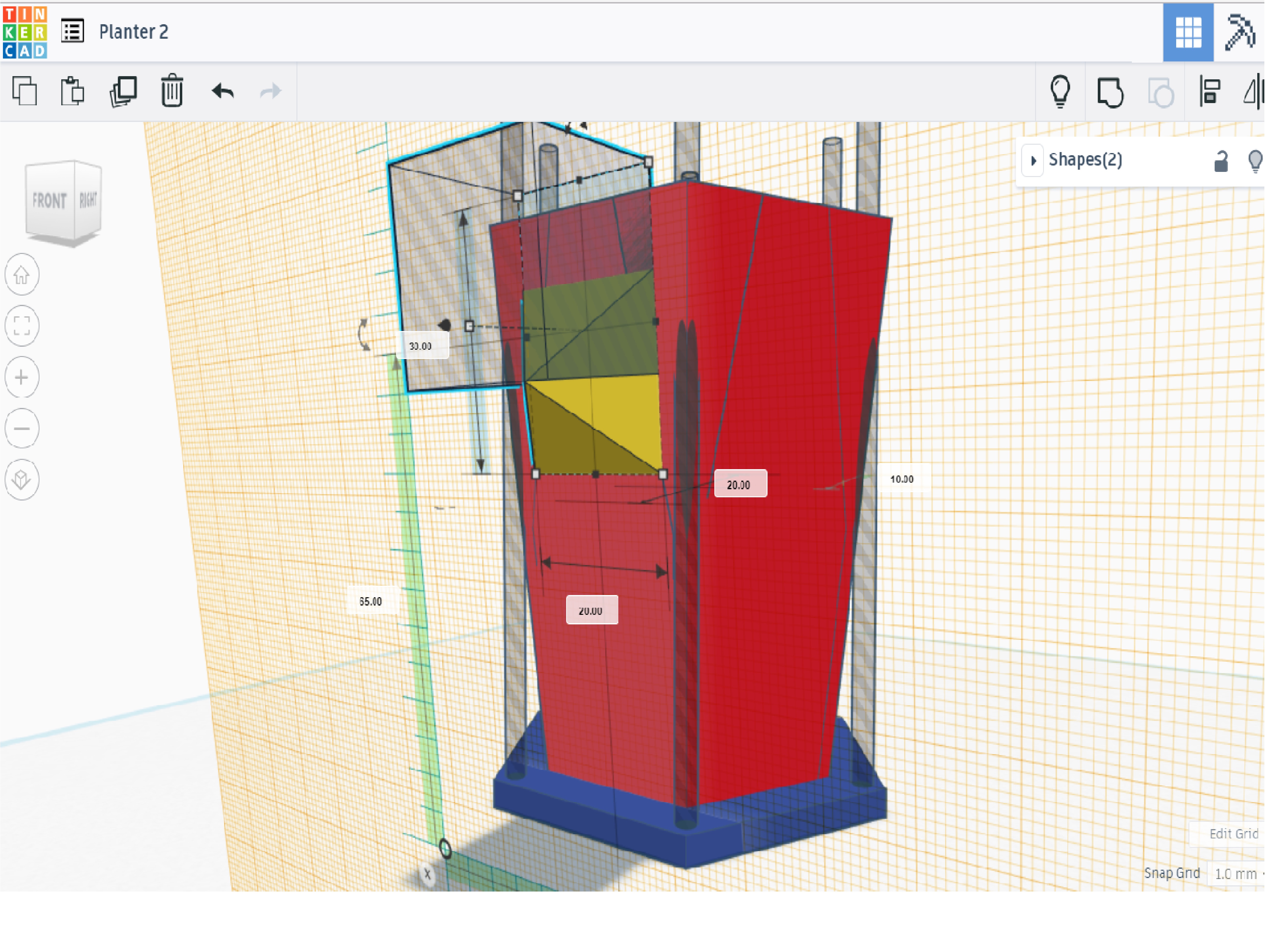
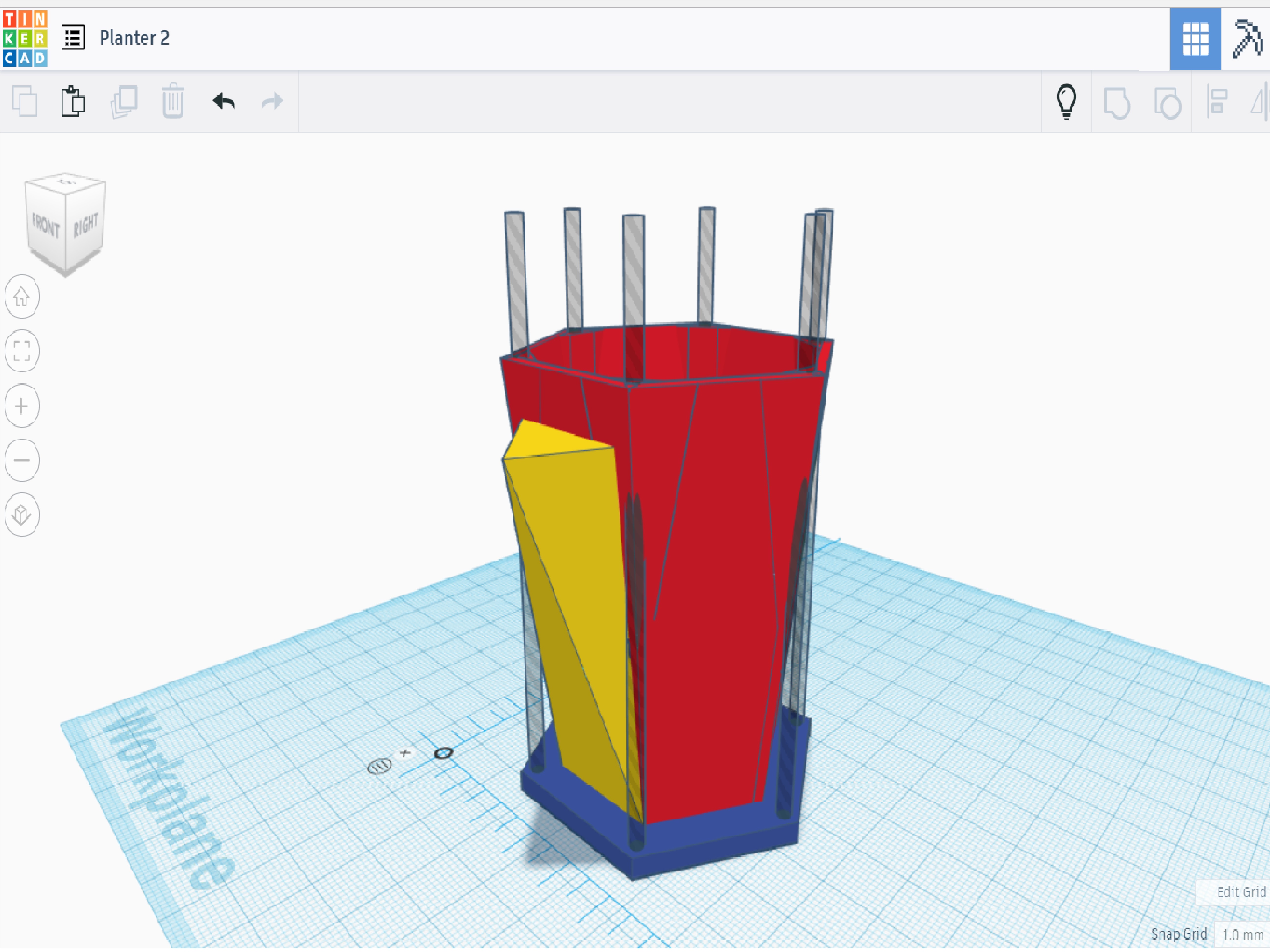
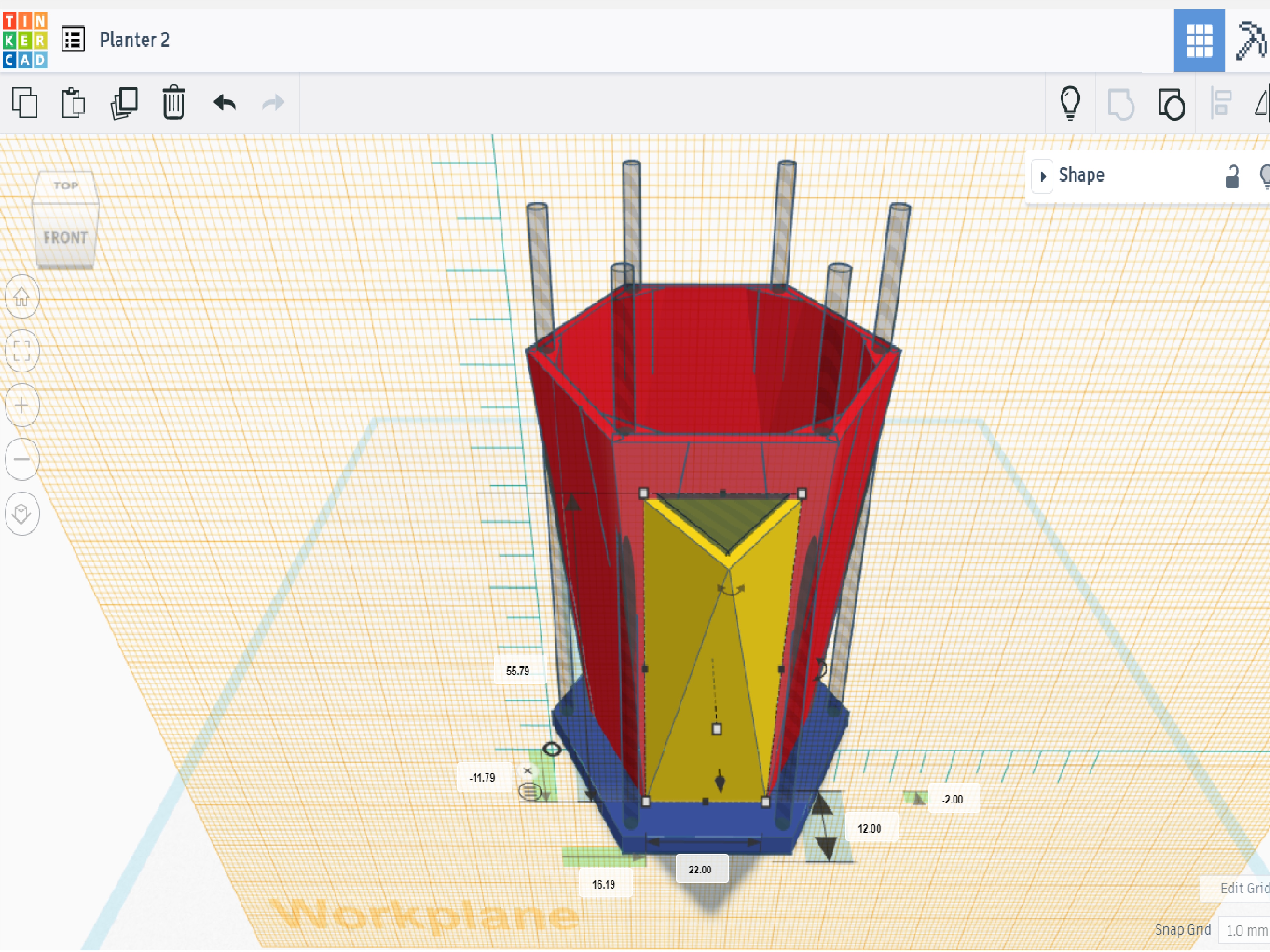
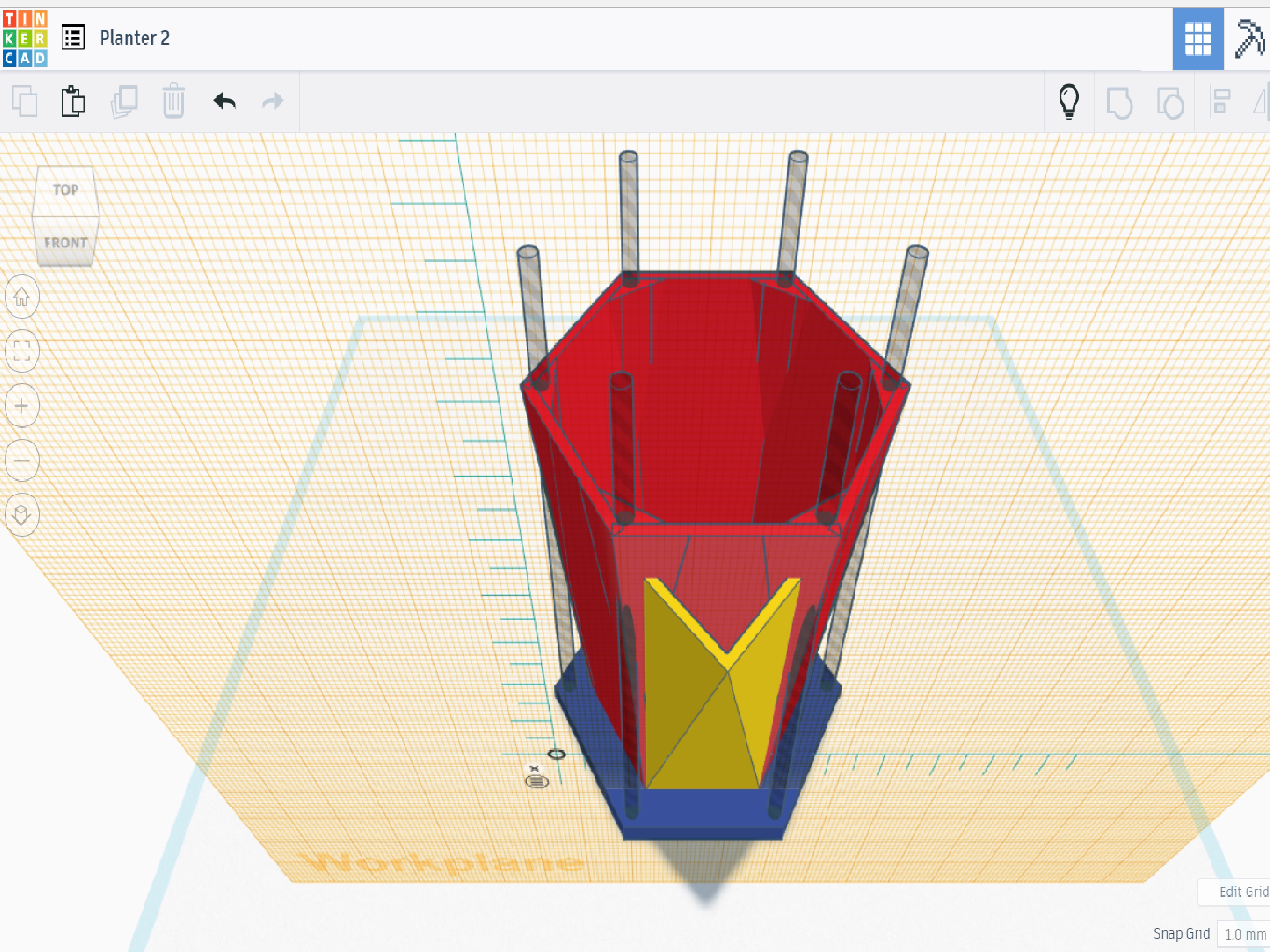
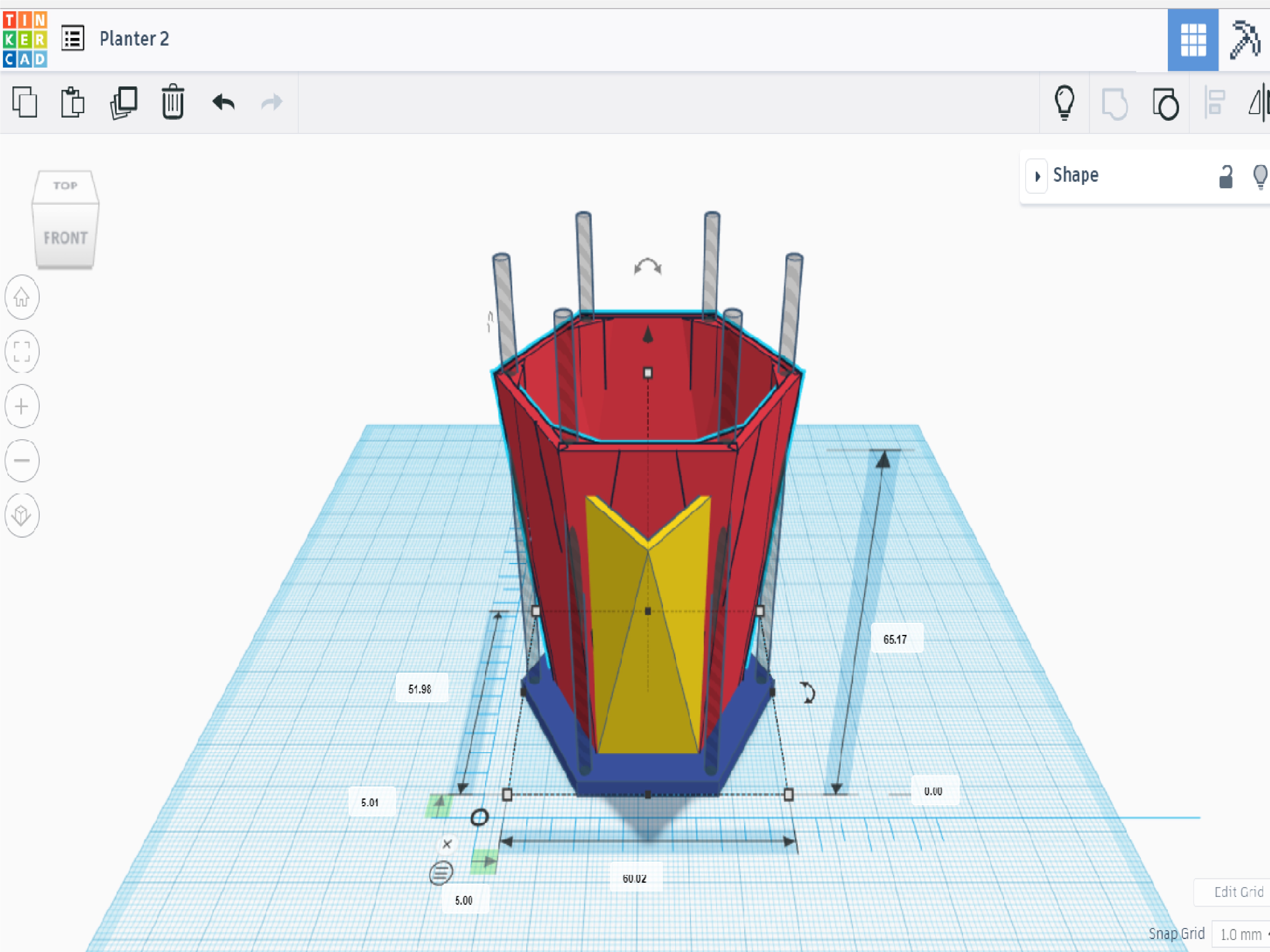
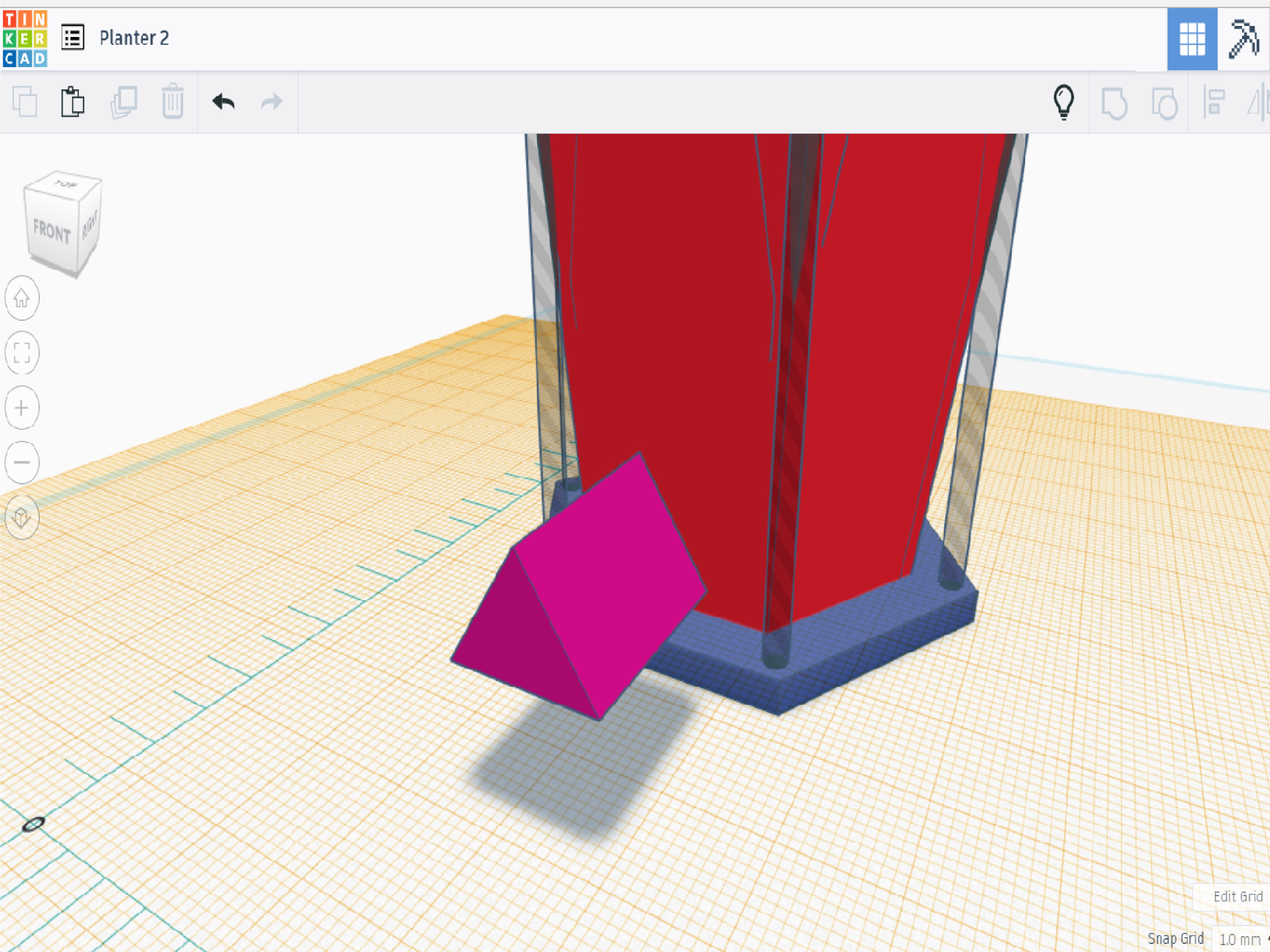
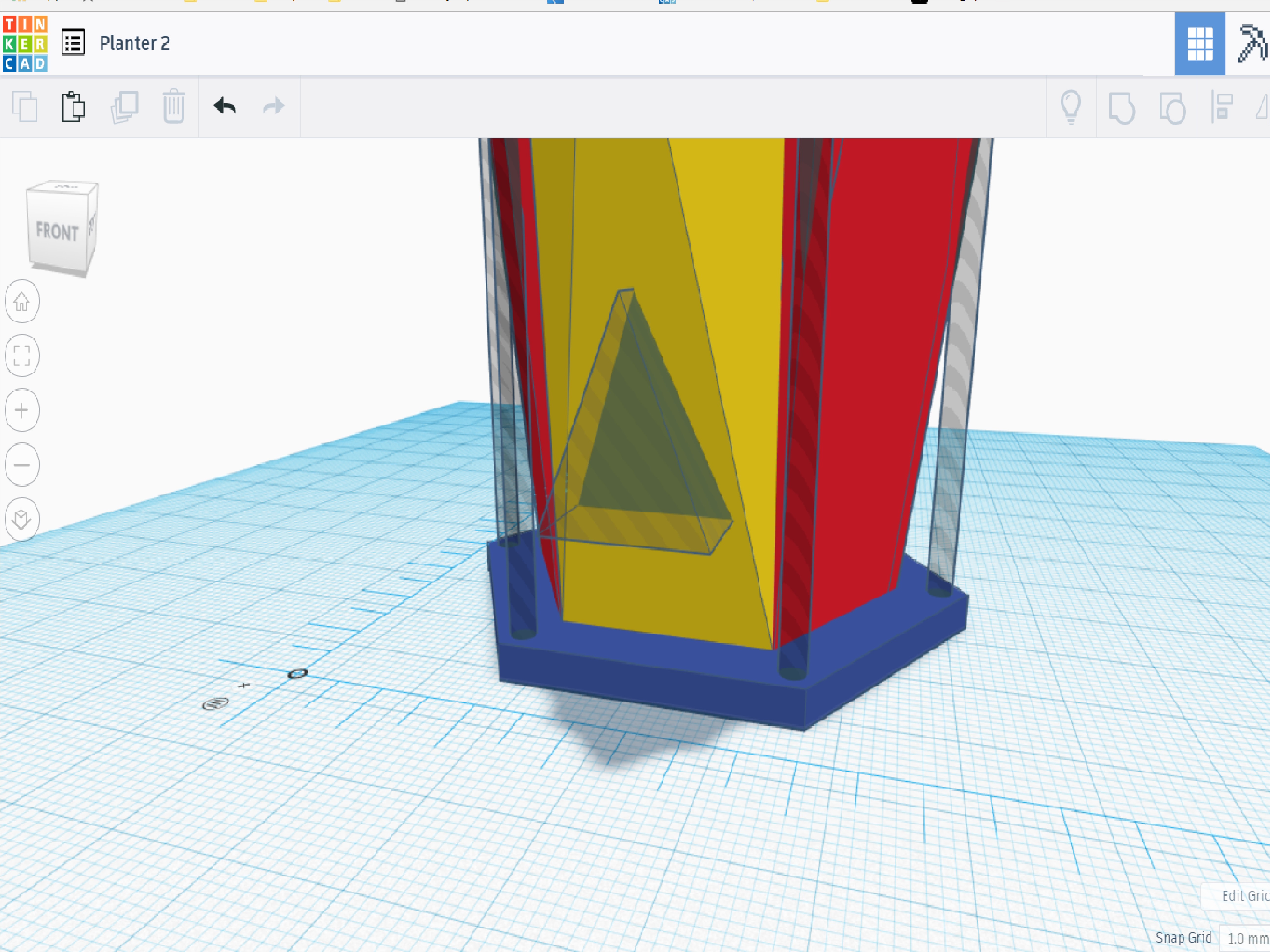
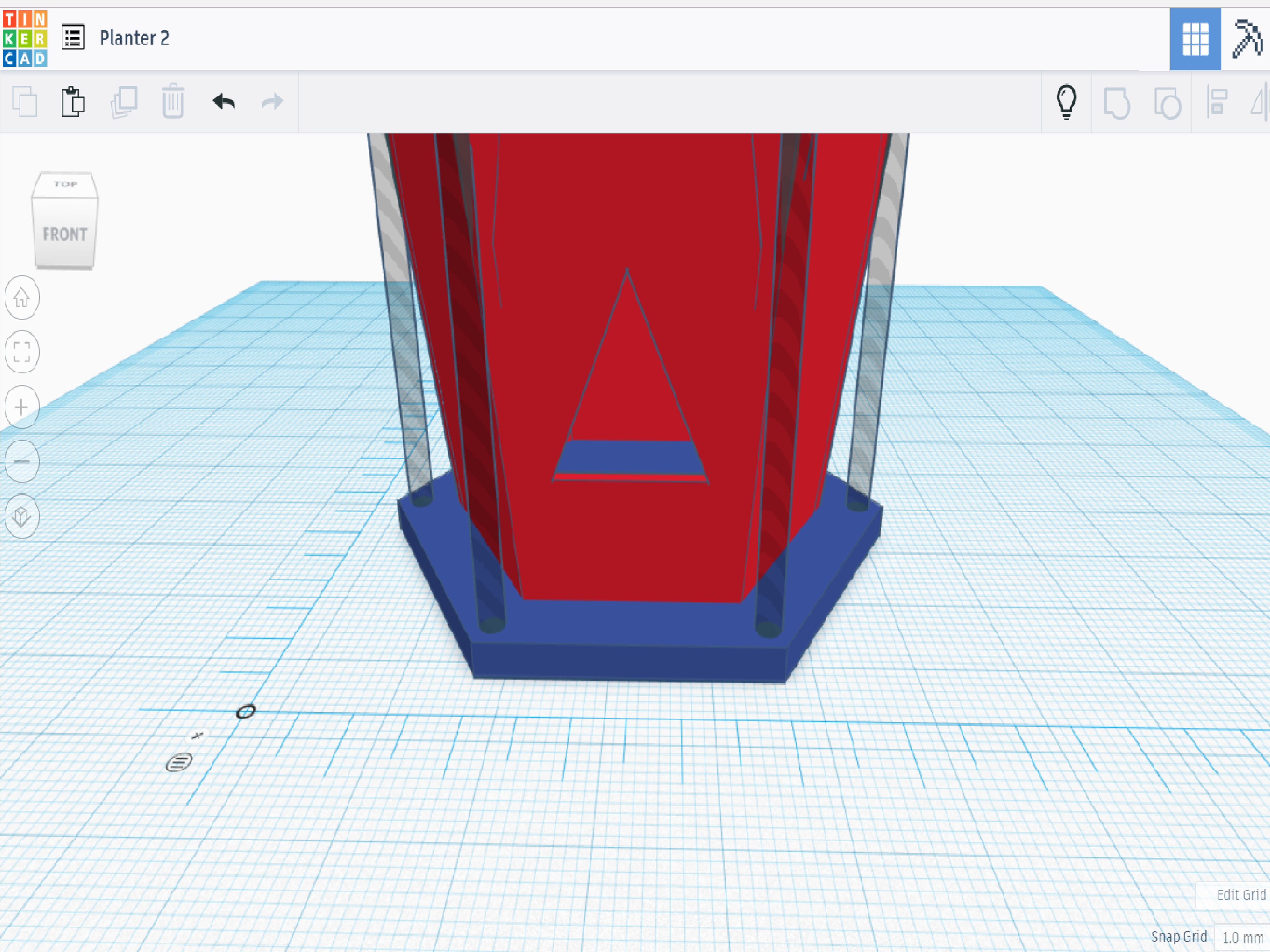
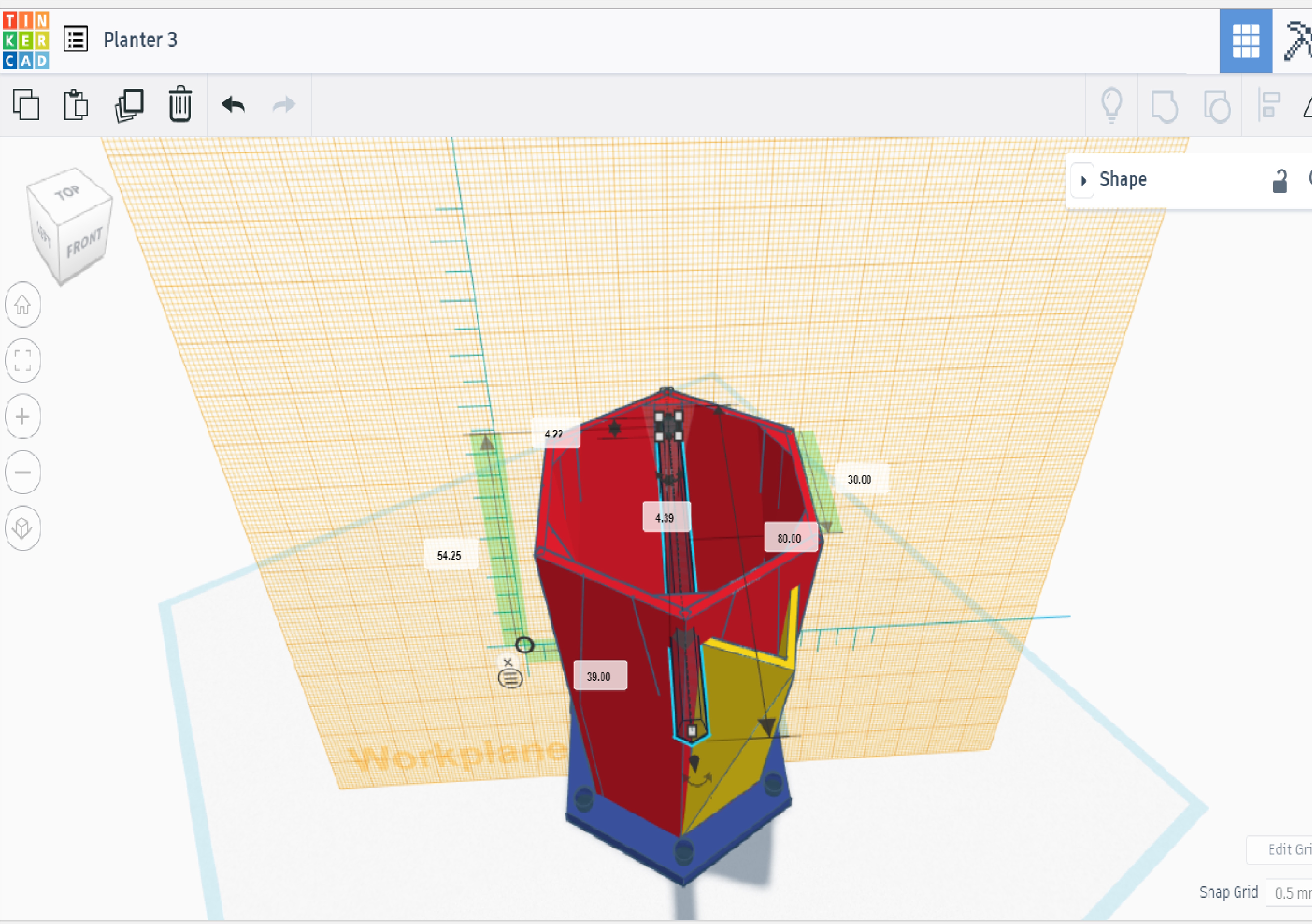
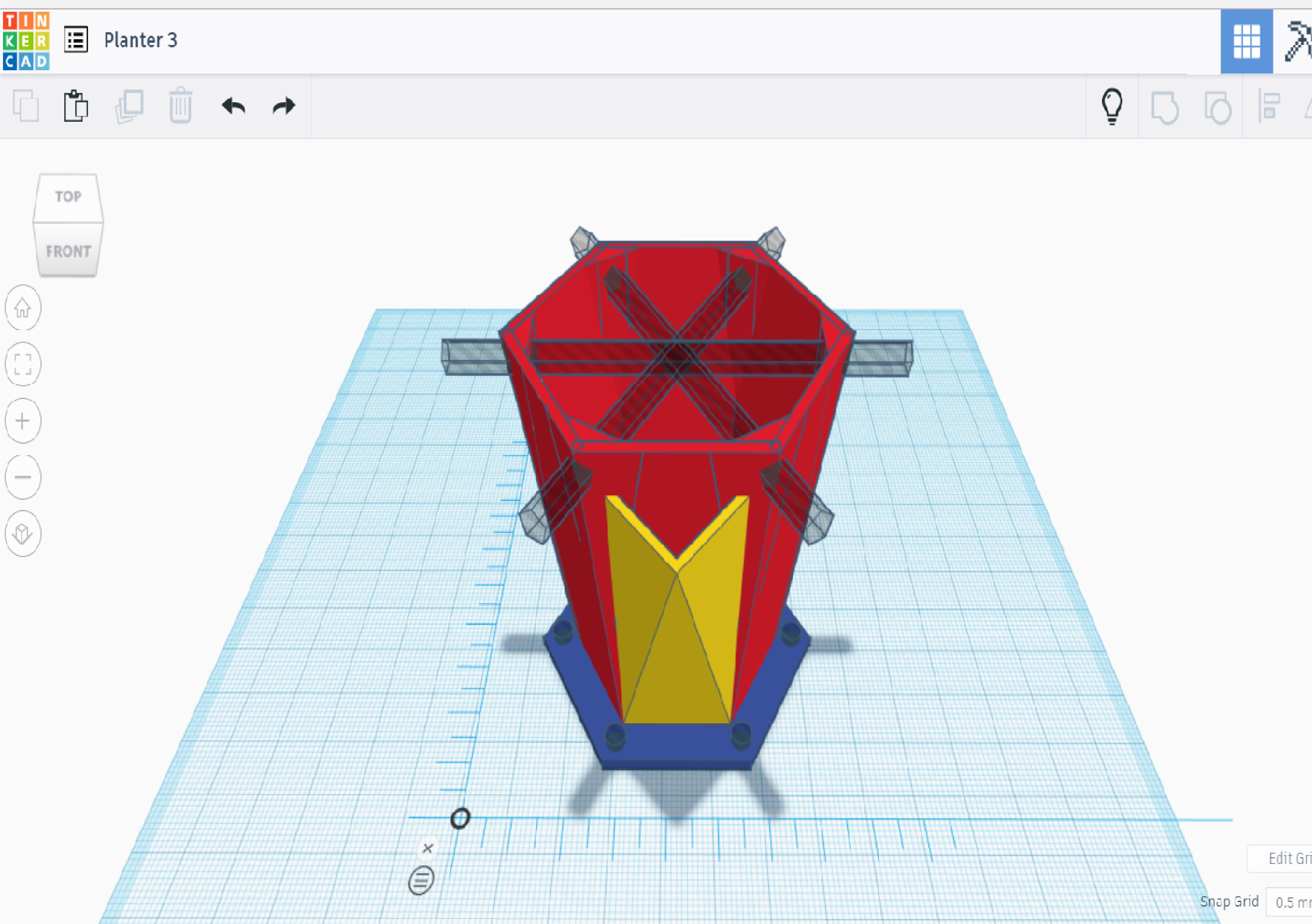
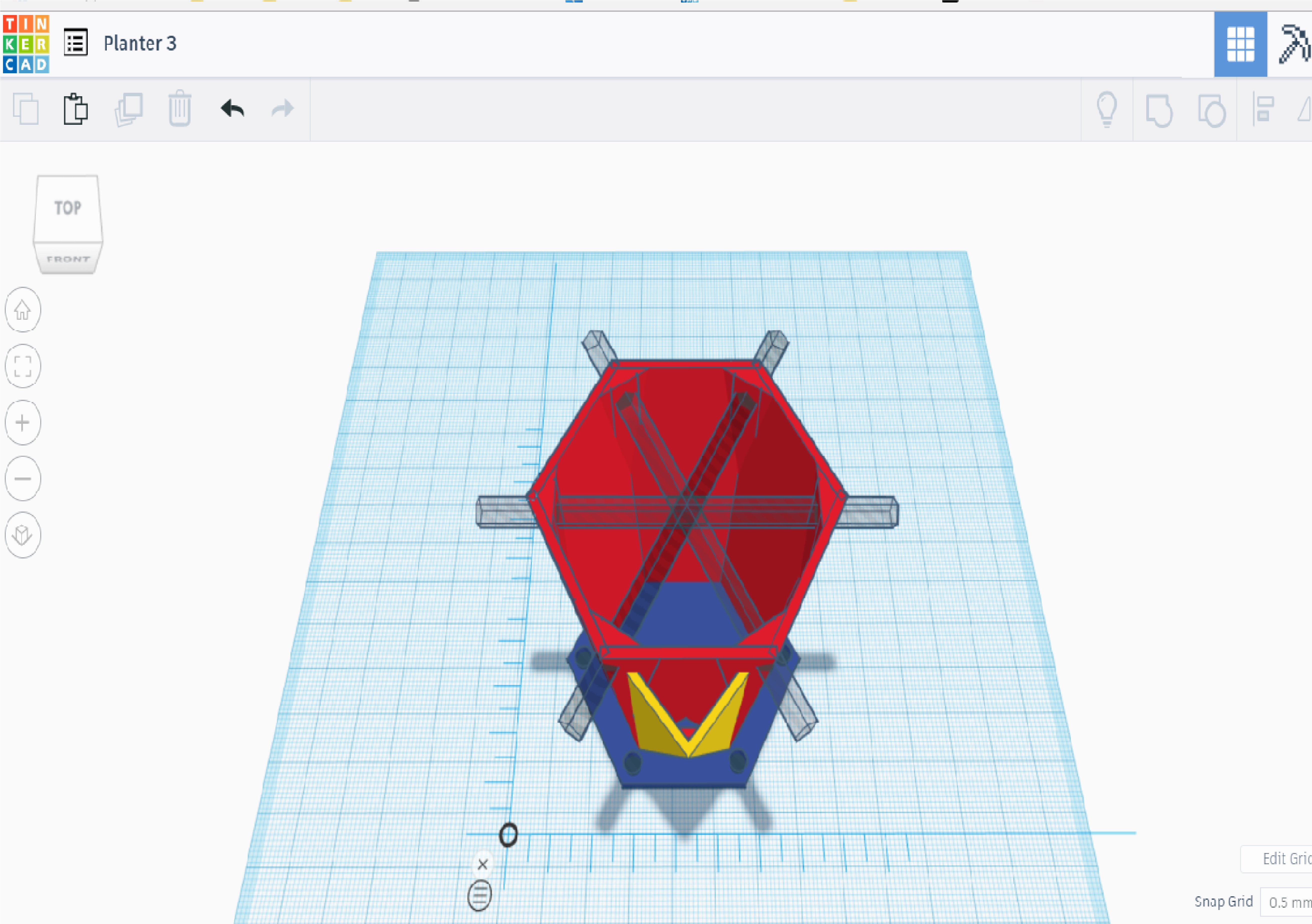
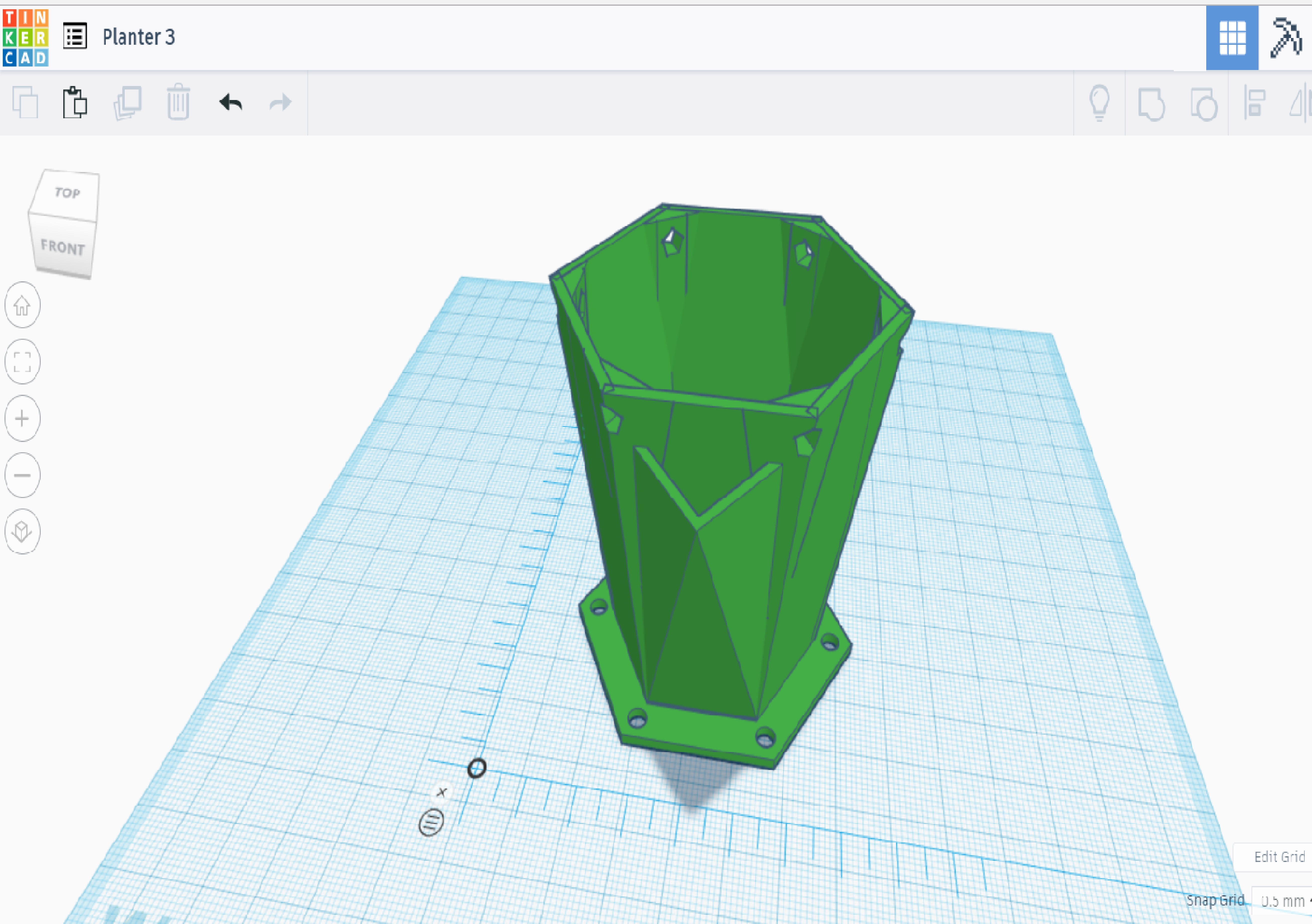
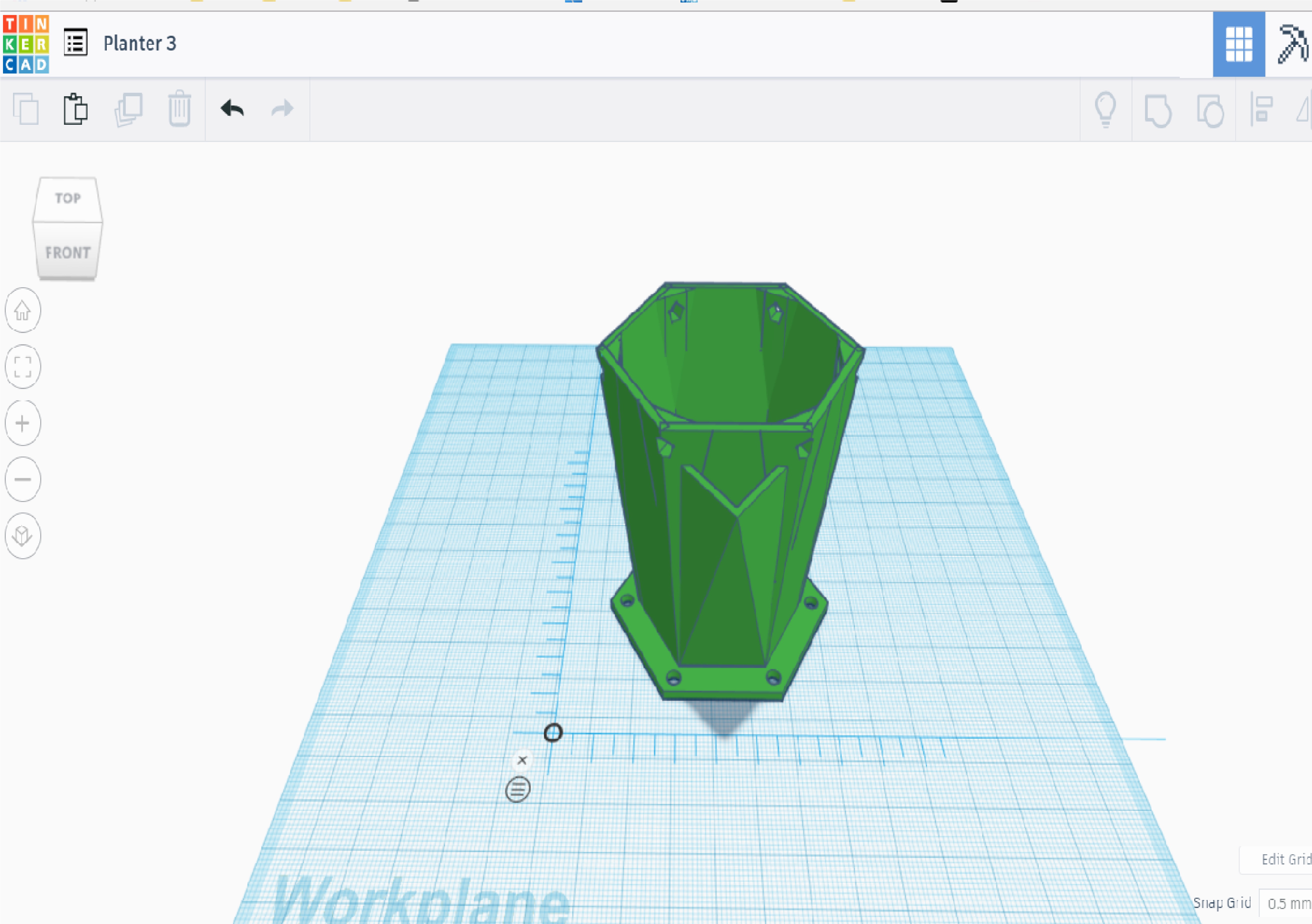
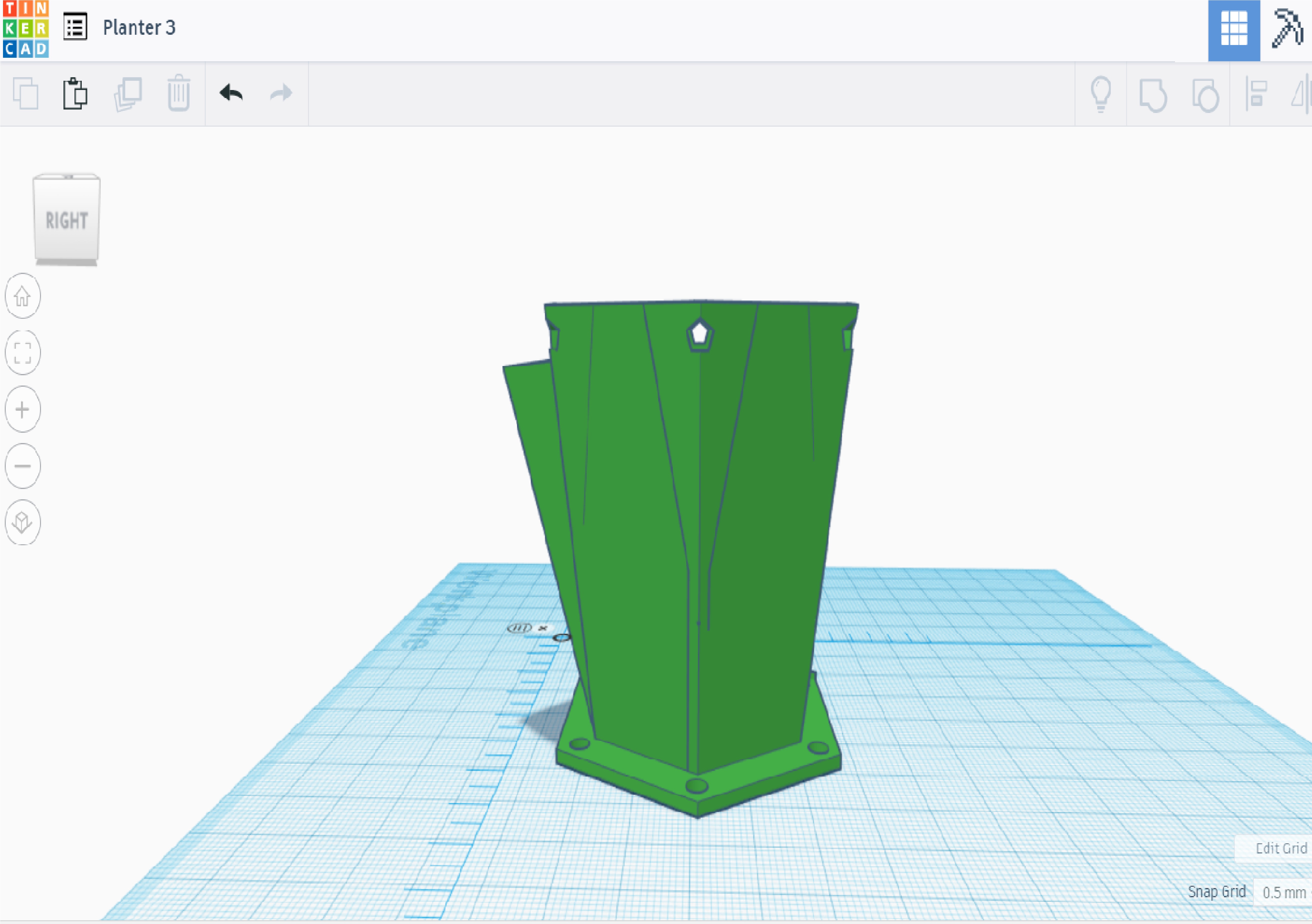
I built the model using Tinkercad. I have used Tinkercad for a while now as it was the simplest free software I found and lets me build simple models quite quickly. I am not an expert with the software but I can give you some of the tips and tricks I have picked up while using it.
One of the main things to keep in mind is that Tinkercad is a shape editor, so you build up your model from a series of simple shapes merged together. This can be challenging with very complex shapes unless you can imagine a creative way to put them together. For my model I wanted it to be based off a hexagon but the best way I could imaging putting it together was to build up an individual wall and then duplicate it to make the complete model.
I played around for a while to get my first version of my model, which took quite a while as I was still trying to rough out the size of everything and how to put it together. I then modified it to get the second version which I was happy with and then I rebuilt it again from scratch to get the final version. This final version was the one I documented as it was the way I put the model together minus all the tweaks and changes made during the first couple of drafts.
Enough rambling, onto the actual steps I followed. I will go over everything in the same order as my screenshots, not focusing on the dimension but rather the process (when I use a Tinkercad function I will underline it):
- Starting with a basic hexagon (the built in polygon function set to 6 sides), I scaled it up to the desired size
- I added a wedge and stretched it to match the hexagons width before setting the height. I used a wedge as I wanted the sides to be tapered outwards. I then hid (Ctrl +H) the hexagon so it wouldn't get in the way.
- I set the wedge to be a hole on its properties tab and moved the workplane to the slanted side of the wedge. Onto this side of the wedge I added a rectangle that will become the wall of my planter. I set the corner of my rectangle to match my wedge and set it to have a thin height and a width the same as the height of my wedge. This is quite simple to do either by stretching the corner of the shape or using the ruler tool, selecting the wedge to see its dimensions then selecting the block and typing in the same dimensions.
- I then returned the workplane to its default floor before adding in another wedge to reinforce the top corners of my hexagon. I rotated the shape to face upwards and set it to the same height as the wedge. I stretched the sides until they looked right and matched its corner to that of the wedge. Rather than making another one from scratch I just Ctrl + C (copy) and Ctrl +V (paste) another one which I placed on the other side. Seeing as the wedge is set to a hole when I group the shapes the bottom of it will be removed.
- As the base for one of the walls is done it is time to duplicate them to make the hexagon. Simply select all the objects and press Ctrl + D (duplicate), this makes another set of objects in the exact same place and auto selects them (be careful not to make several duplicates by mistake). The duplicate I rotated by 180 degrees and moved it away to form the opposite sides wall. Now we have two walls.
- Rather than making the other walls and struggling to get them to the right spot all you need to do is select both opposite walls and duplicate them again. This time once they are duplicated rotate them by 60 degrees. If you press Ctrl + D to duplicate them again Tinkercad will automatically make the duplicate and rotate it by another 60 degrees to make the remaining walls (it repeats the action you did with the last duplicate). You now have all the sides done.
- Now to put a floor onto the shape I unhid/showed all shapes by pressing Ctrl + Shift + H, I set the ruler to use the mid-point measurement (click on the circle of the ruler to switch between edge or mid-point) and selecting all the walls I could see the mid point then when I selected the hexagon I set it to match the walls.
- We now have a planter that could be grouped with others, but I still wanted to add holes to hang it from and a spout to water it with.
- First I added some tall skinny cylinders to two opposite corners then just like sides I duplicated and rotated them to get all the corners. I left them tall so I could see that they lined up but these are actually the holes for the base hexagon. I turned them into holes and hid (Ctrl + H) them before grouping (Ctrl + G) all the wall shapes together. Now when the are unhid (Ctrl +Shift +H) they can be seen with the walls and floor.
- Time to add a spout. I placed the workplane onto one of the walls and placed a pyramid onto it. This pyramid I then cut in half by grouping it with a hole rectangle and stretched to the desired shape.
- To make the spout hollow I duplicated the shape, made it into a hole and made it slightly smaller. When I grouped the hollow shape and spout I now had the spout walls done but no hole in the wall for it.
- I hid (Ctrl +H) the spout walls and placed a triangle hole at the desired height. I used a triangular hole as this does not need any form of support when 3D printed. I checked the hole relative to the spout before grouping (Ctrl +G) the walls and hole. The spout is now complete.
- All that is left is to add the top holes. I shrunk the base holes down so they were out of the way. I then moved the workplane to an inside edge and added a pentagon hole to the surface. I made sure the holes centre matched the shapes centre, I then duplicated and rotated it so that holes went through all sides.
- You now just need to group everything together and you have a Modular Seedling Planter.
My steps are easiest to follow if you follow along in the pictures. If you aren't sure of any of the steps ask in the comments and I will try make them more clear.
Printing the Model
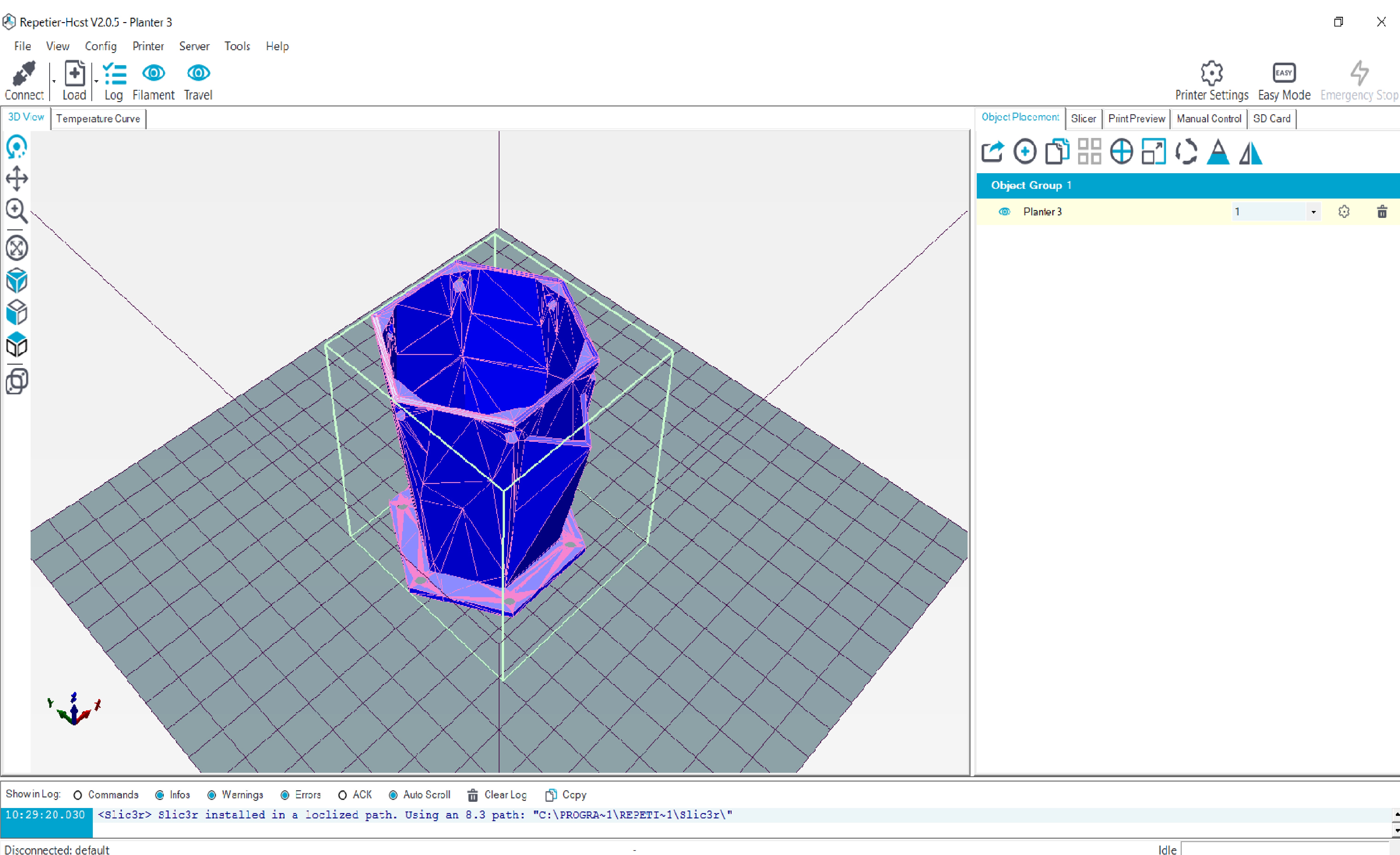
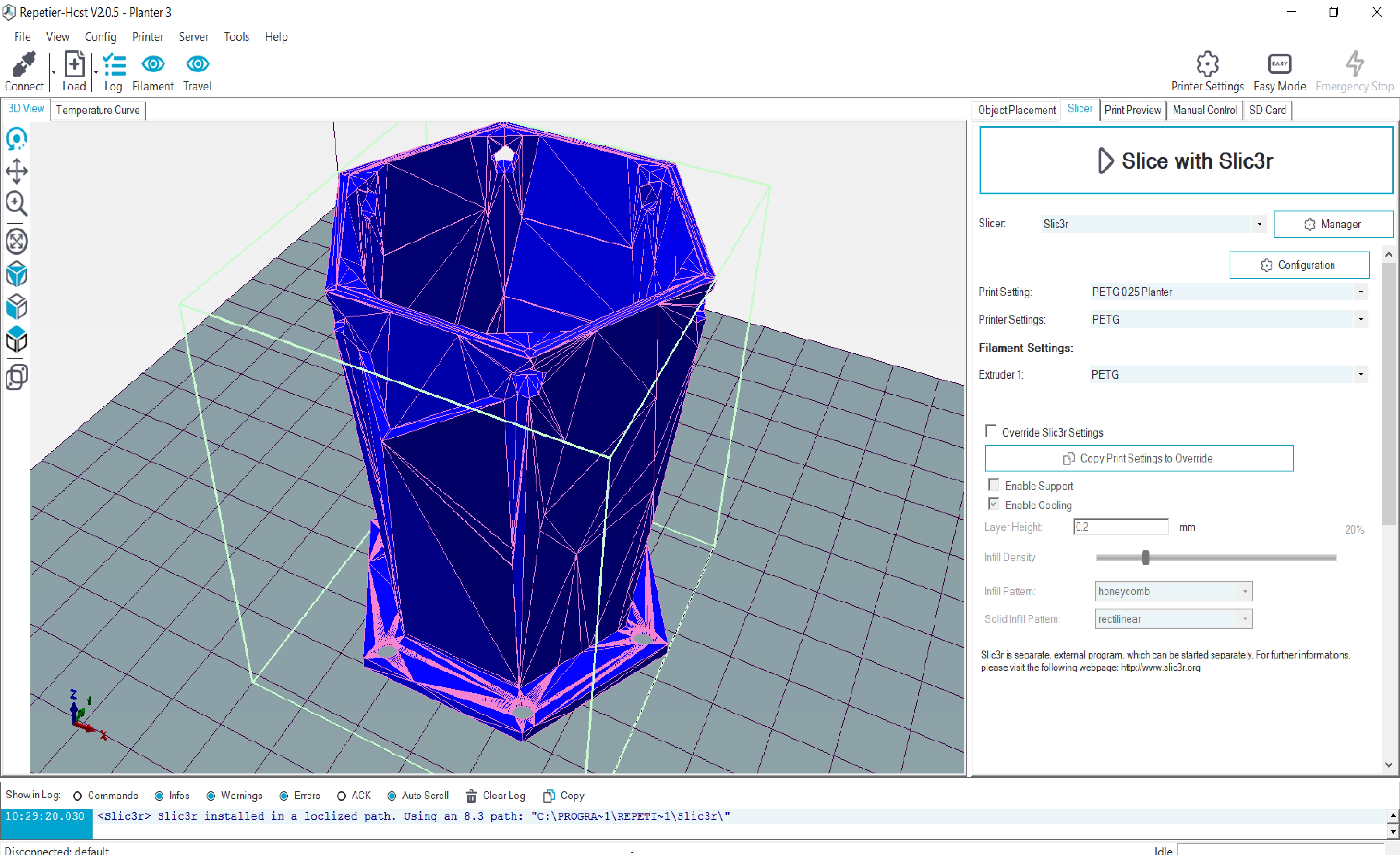
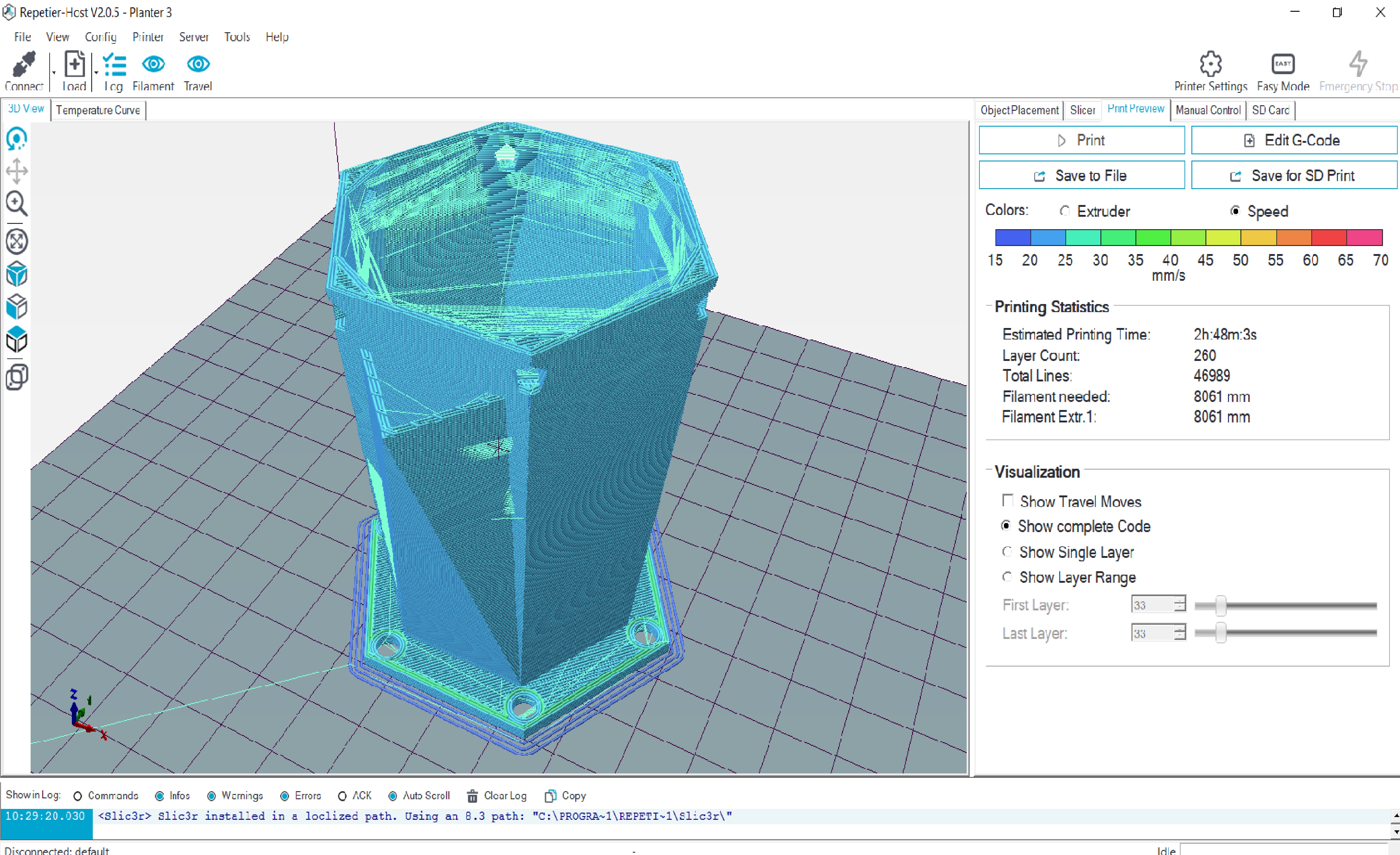
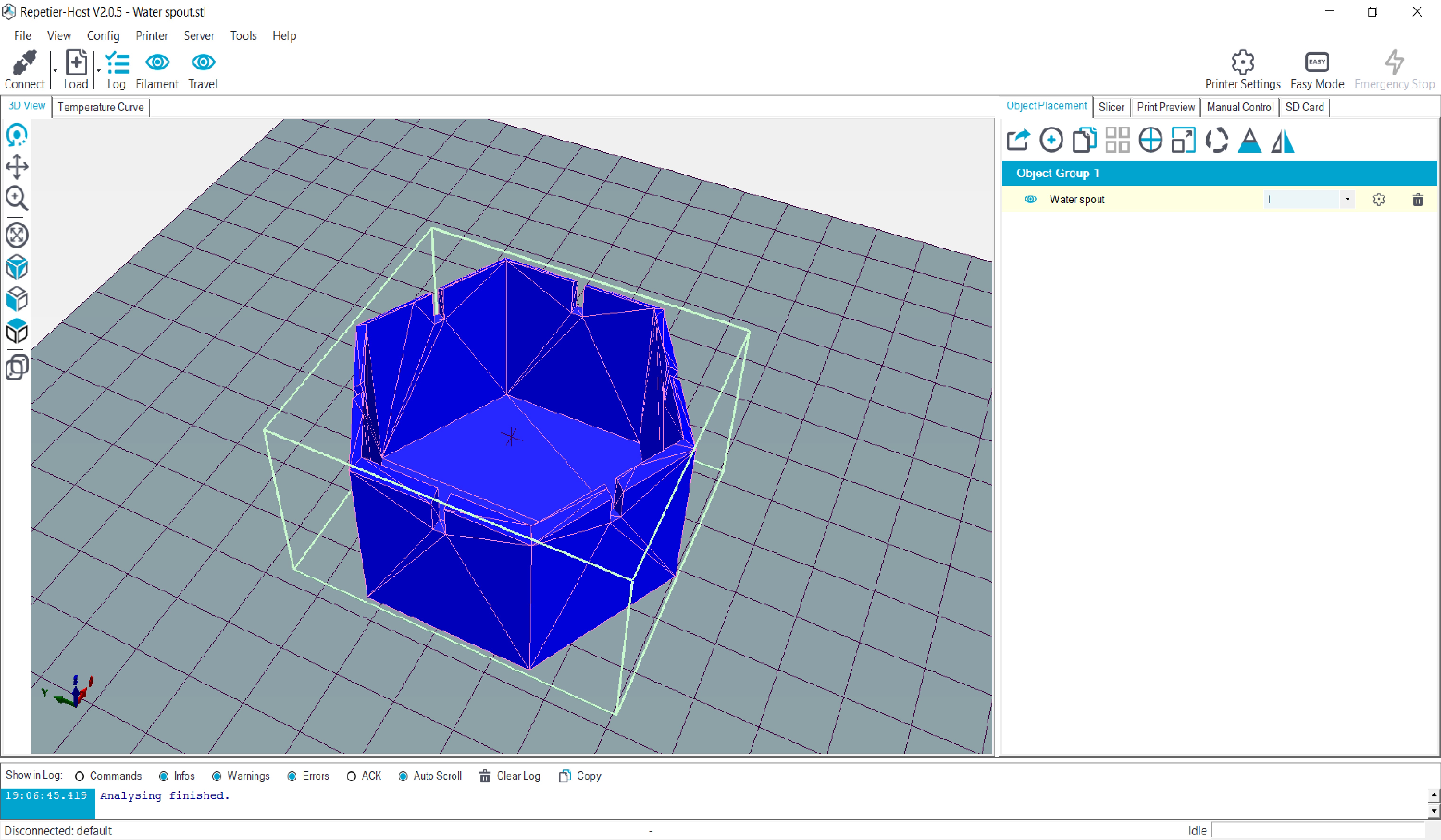
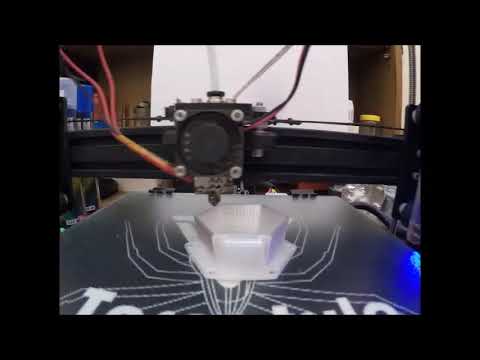
When printing the model there are a couple of things to consider.
The first being which material to use? PLA is the most common material and is the most forgiving if you are new to 3D printing but it can warp when left in the sun and isn't very strong. ABS is also very common but it can warp during the print and is hard but brittle. My plastic of choice is PETG (a similar plastic to coke bottles). This plastic is quite hard to get your printer settings right, but produces great prints which are strong, durable, and flexible. PETG also has the great property of being food safe and the one I'm using is UV stable so it should be fine in the sun. As PETG has a high melting point you get a strong bond between layers.
You also need to think about your print settings such that the walls and base are solid, so that the planter doesn't leak. Also if your retraction settings are right you won't need any clean up afterwards as the models are designed to be printed without any support material.
All you do now is take your model and import it into your desired slicer program and slice the model. I use Repetier-Host and Slic3r.
These models are quite small so they don't use much plastic but as they have a large amount of surface area and I print surfaces quite slowly each container took about 3 hrs to print. I made a time-lapse of a print so you can watch one of the planters grow. This is my first time making one of these time lapses but they do look quite cool as they turn 3 hours into 50 seconds.
If you plan on having a full set of planters I would recommend also printing the water container. This allows you to use a basic hydroponics system to water your seeds and keep them happy.
Planting You Seeds
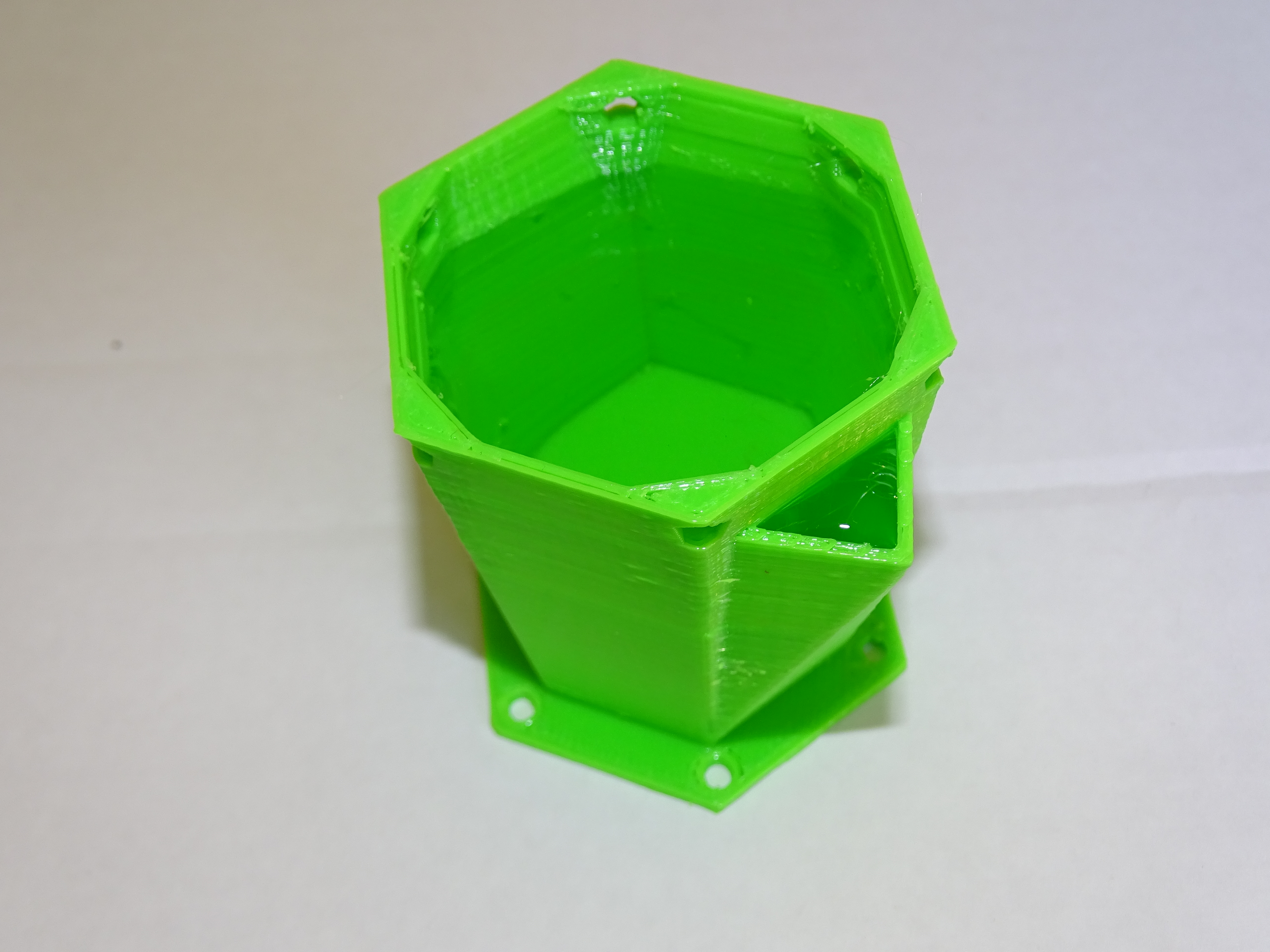
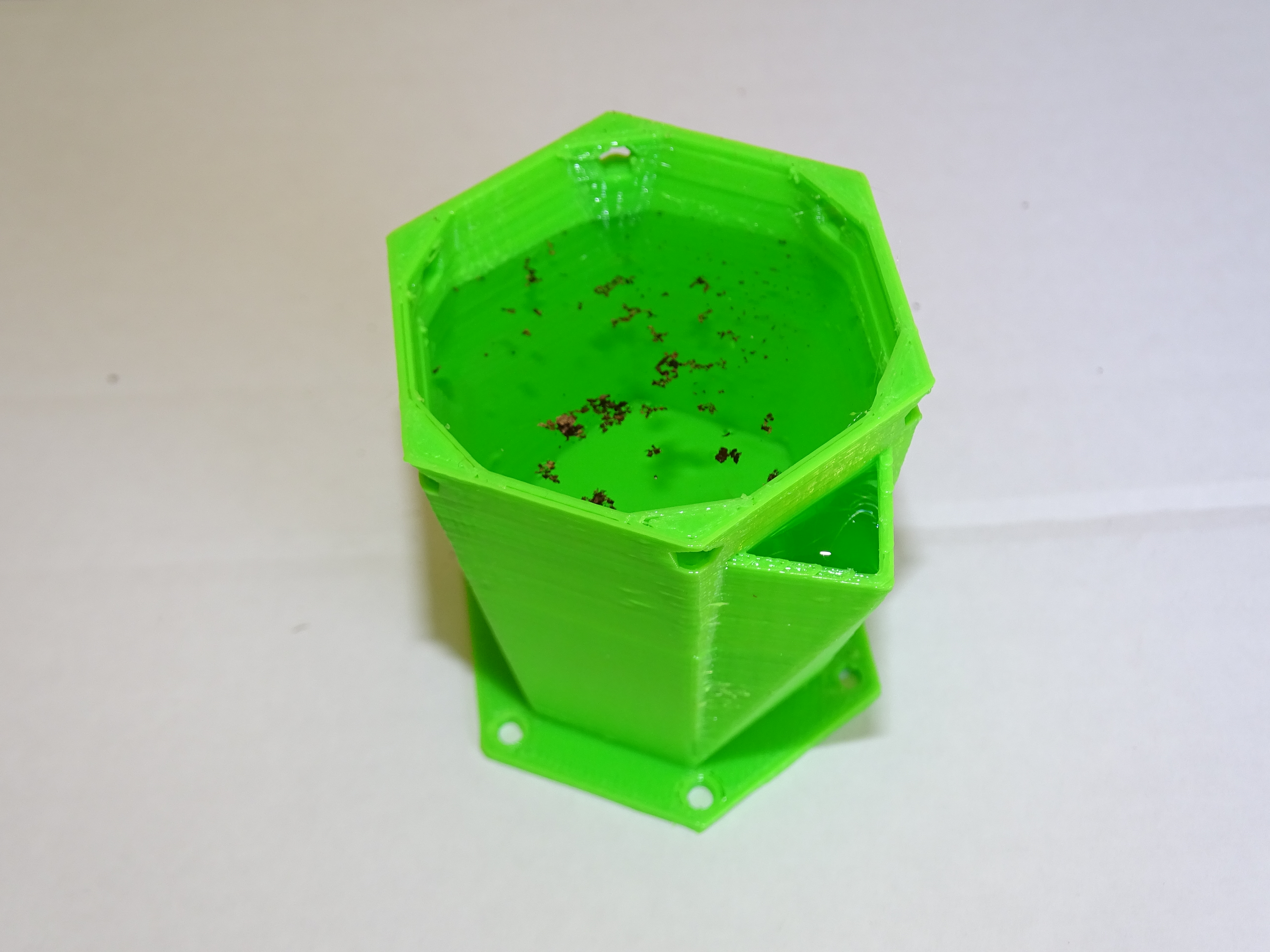
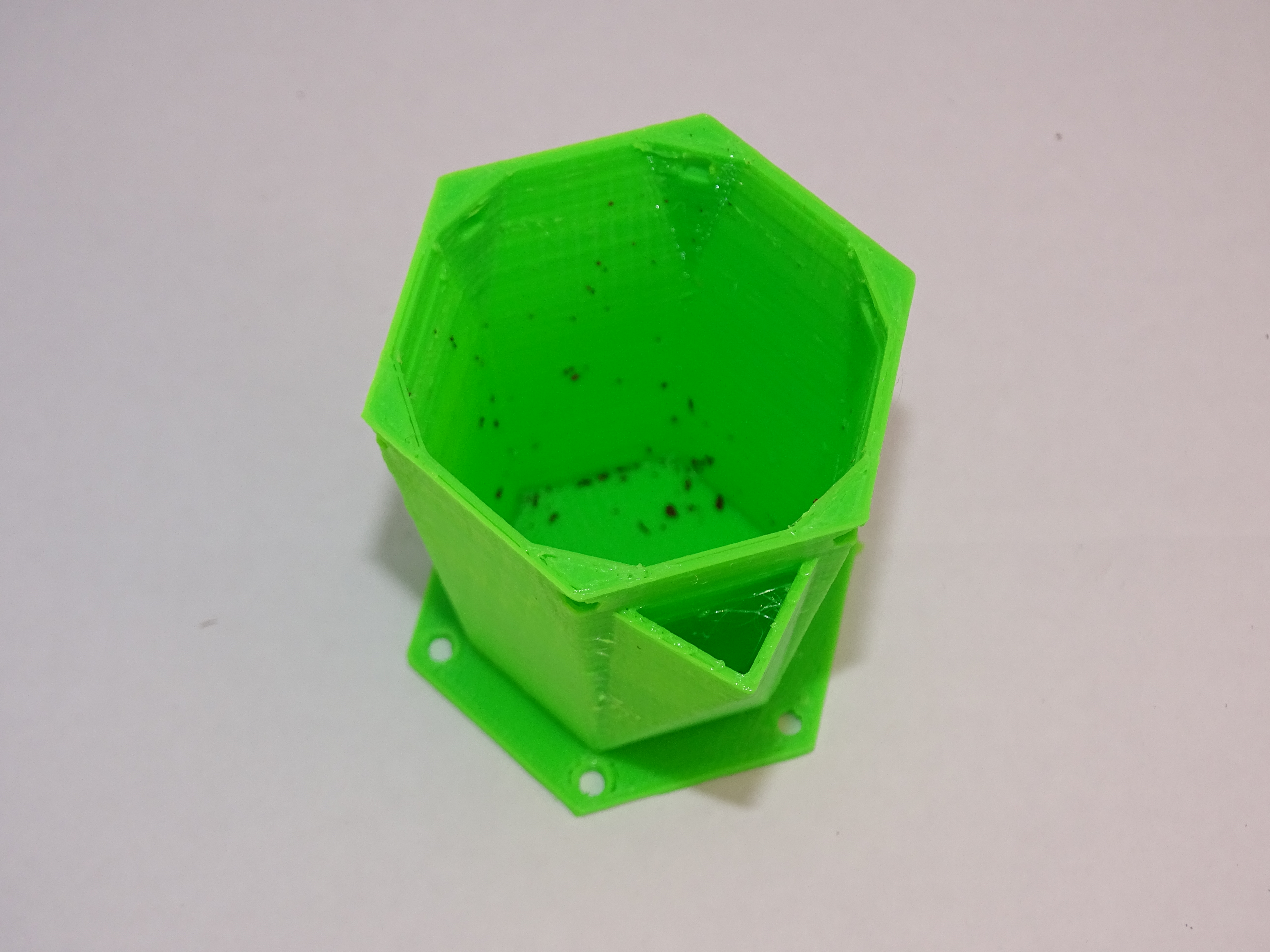

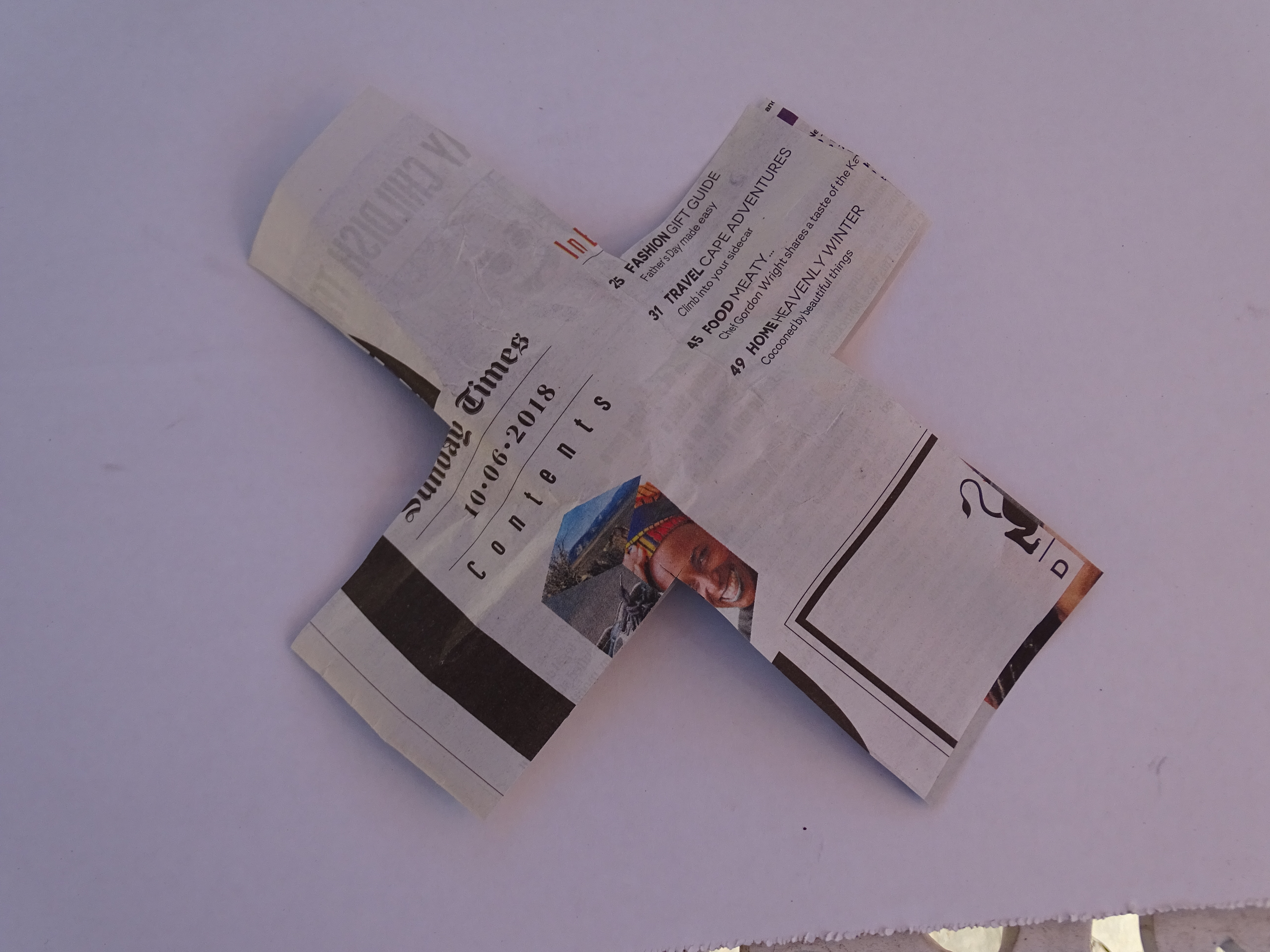
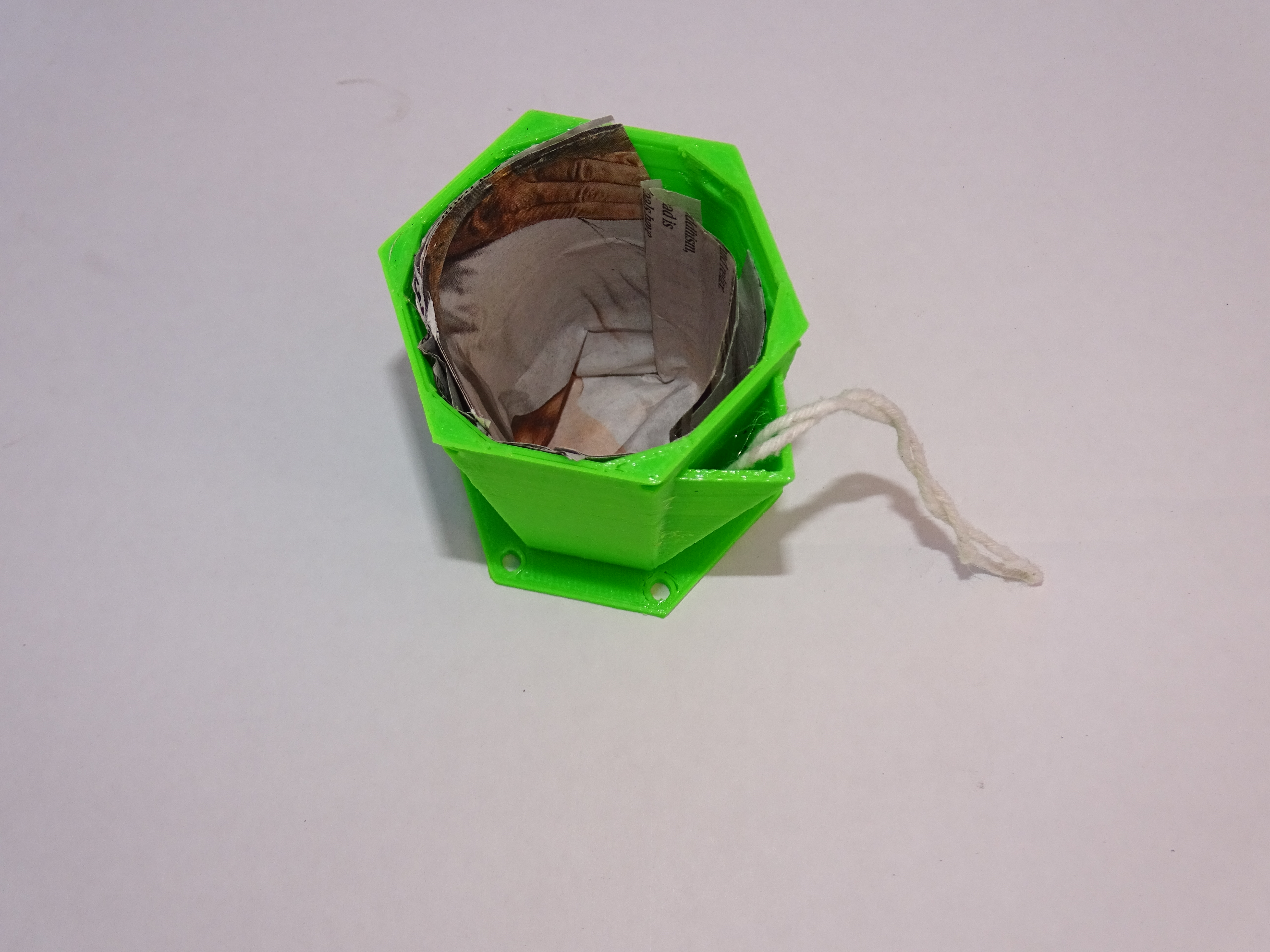
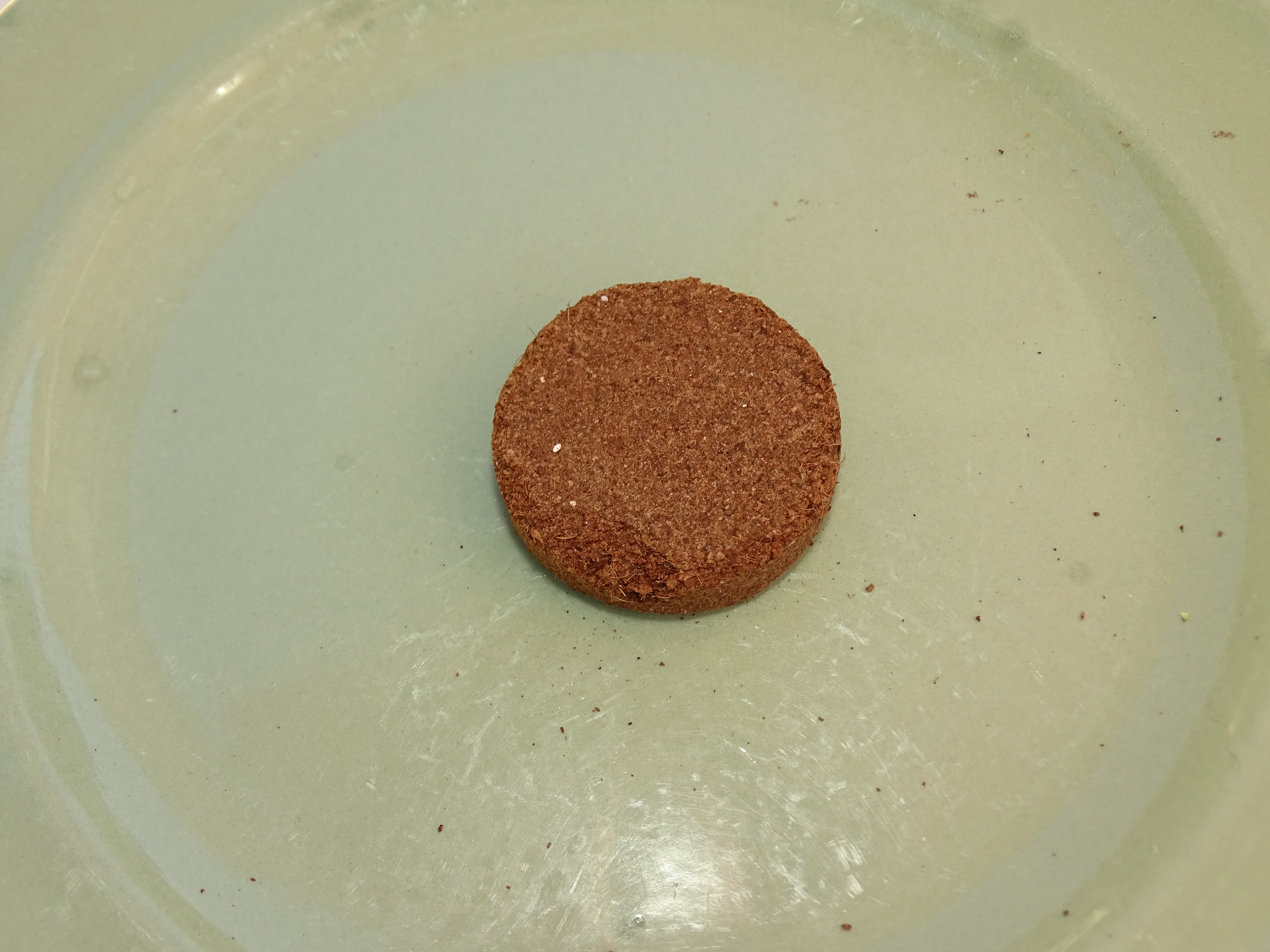
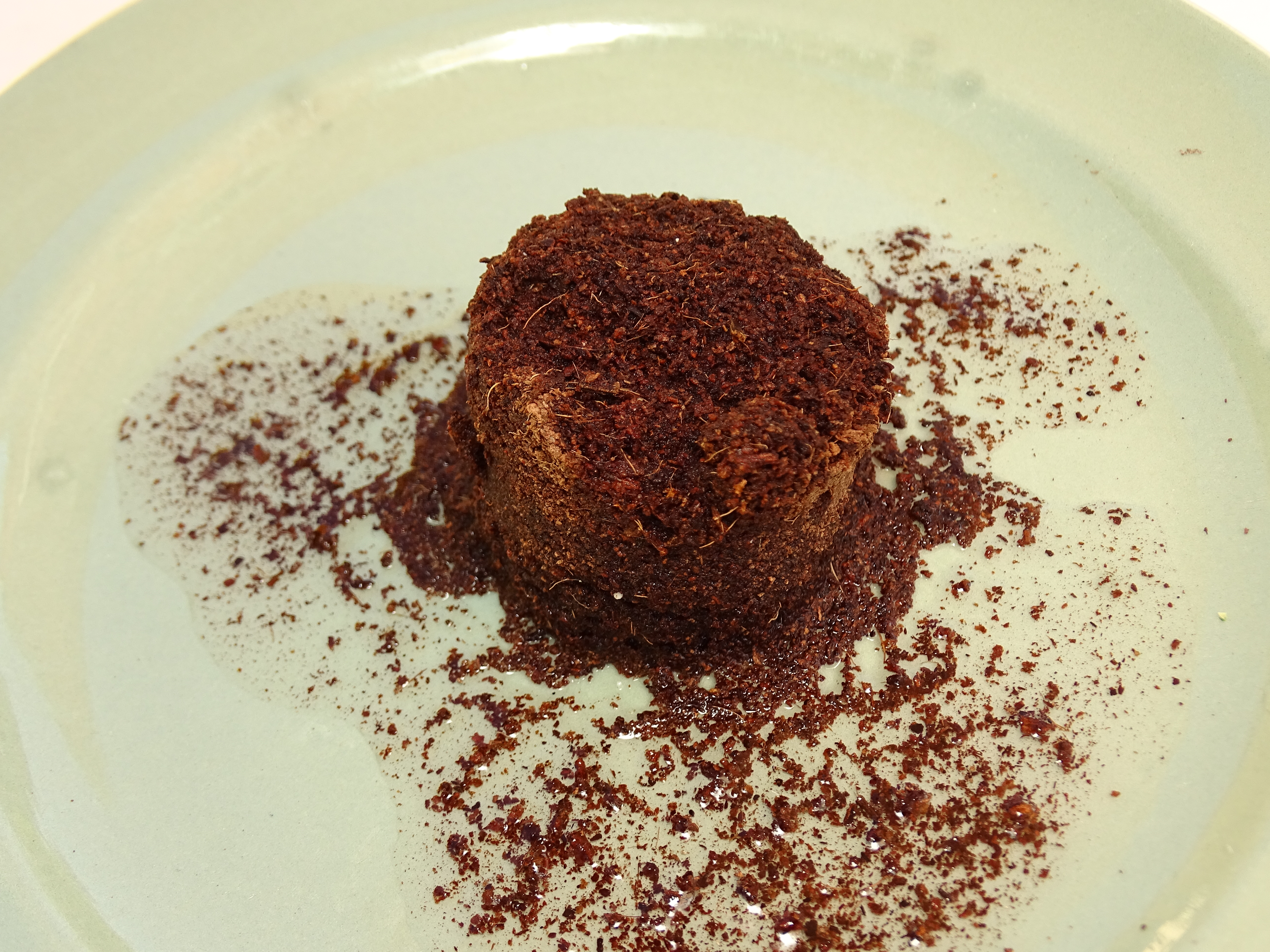
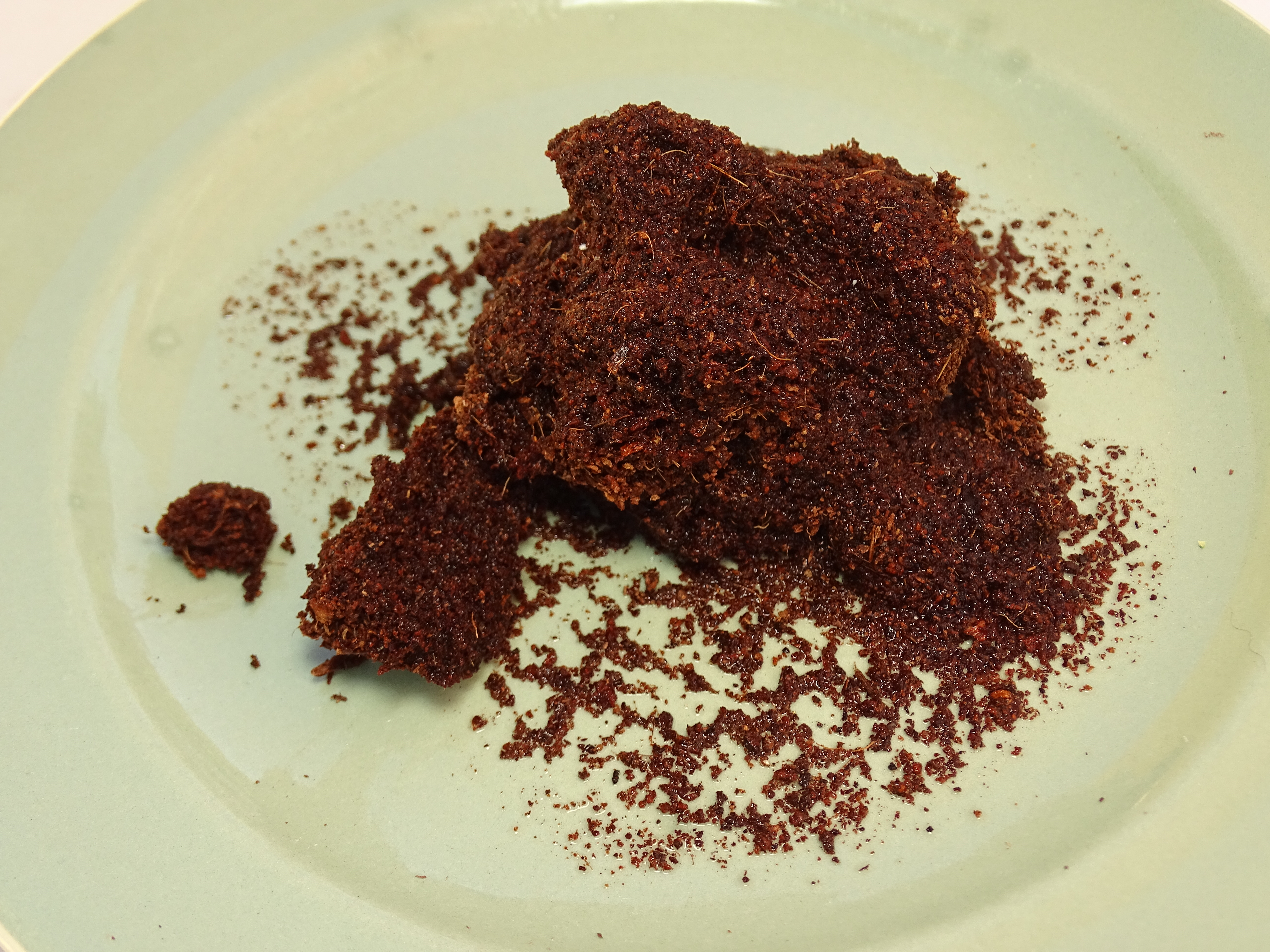
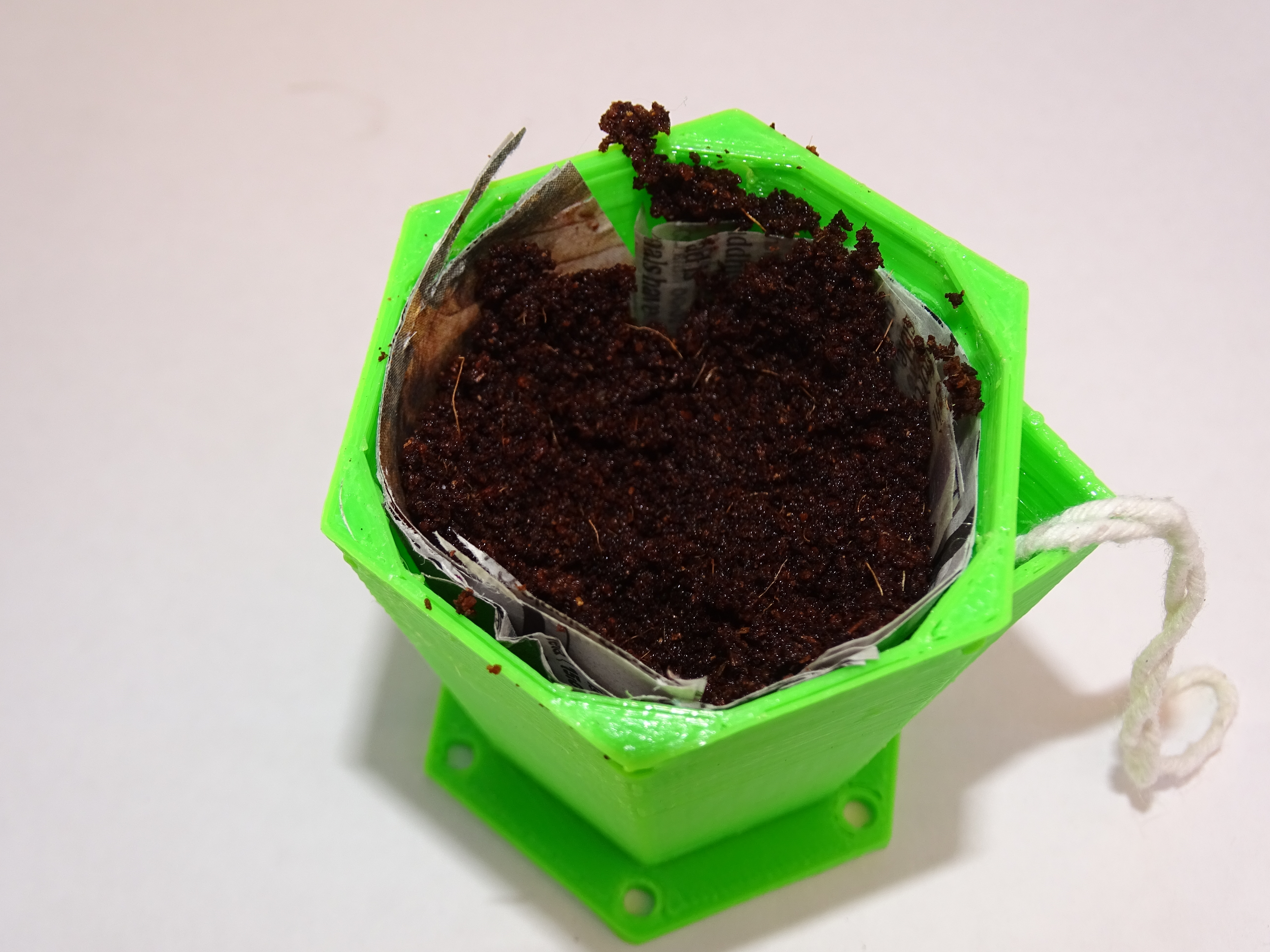
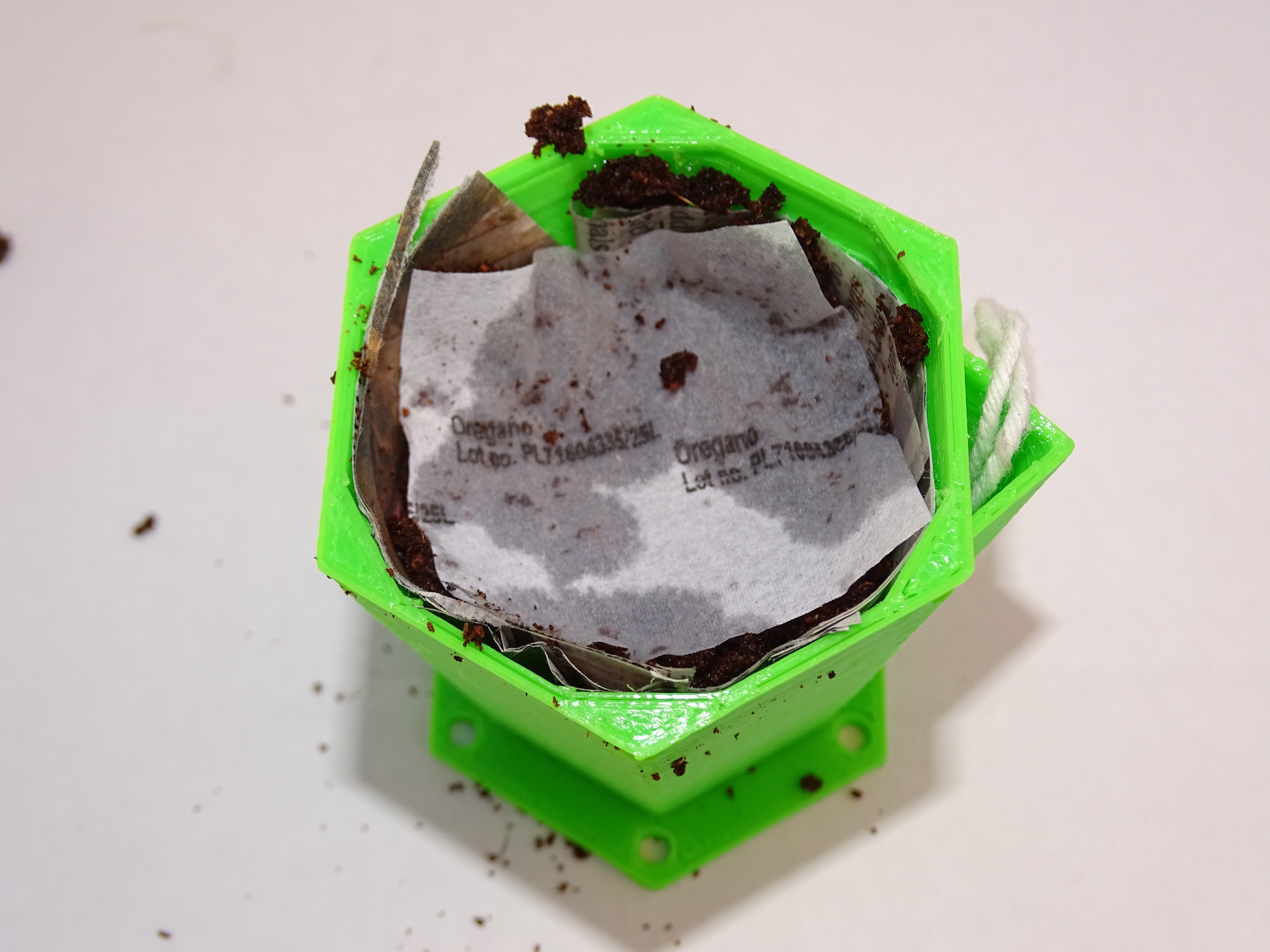
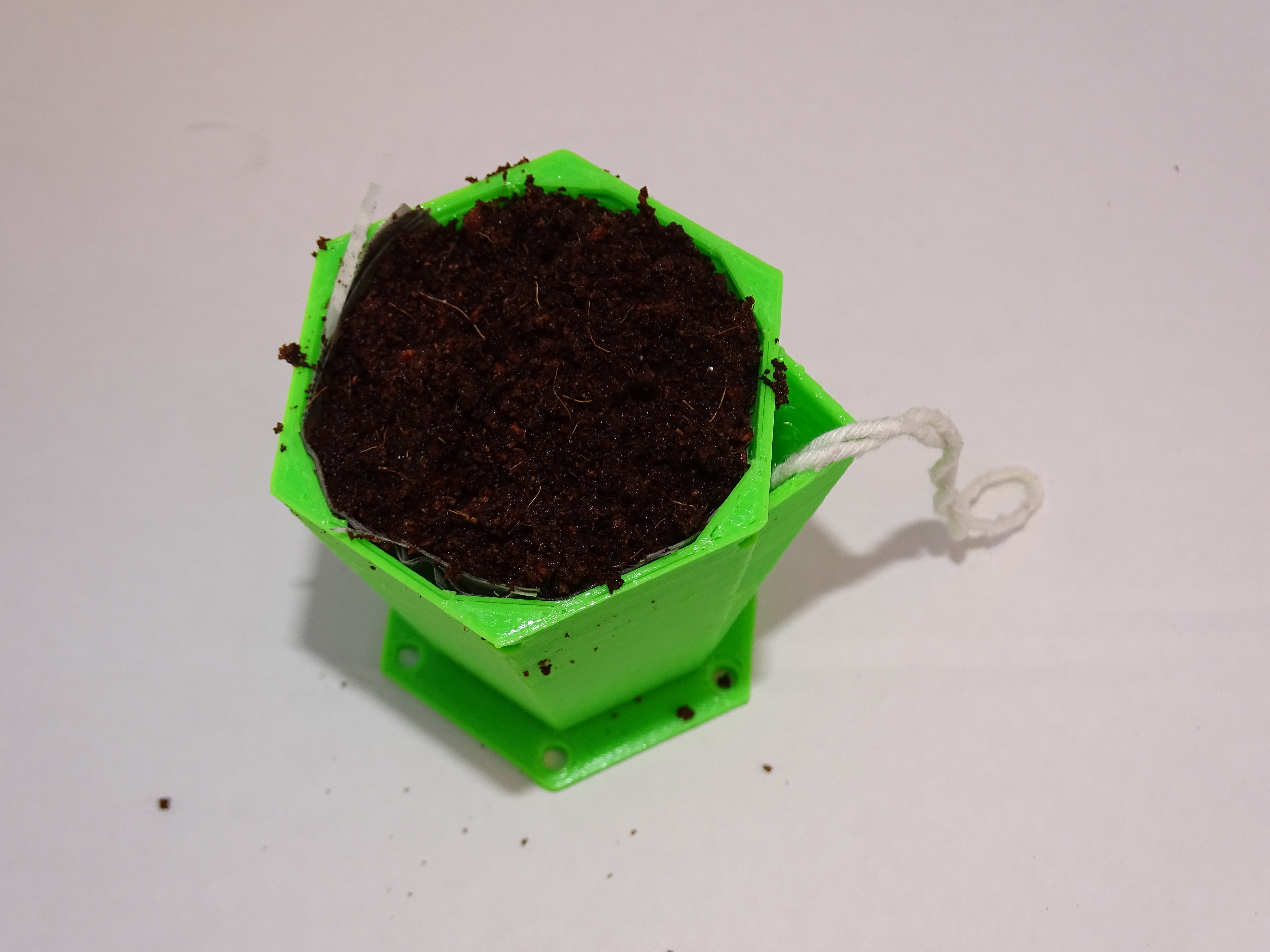
Time for some gardening.
The first thing to do is check that your planter is watertight. If your planter leaks you need to be careful what surface you leave it on or where you hang it. A simple fix for leaky planter is to give it a coat of clear spray paint or take a little glue and full the hole up.
Now if you are going to be using the watering system you need to take a piece of cotton string and push it down through the spout. The string needs to be long enough that it can go from the base of your planter to the top and down to the bottom again, I make the string slightly too long as you can always cut it shorter later. This string will be the tongue that drinks from the water container.
Next, I put a little square of newspaper in to act as a sleeve for the planter. The idea being that this makes it is easier to take the plants out when they are no longer seedlings. You don't have to put the newspaper in as the planters are tapered the plant should come out relatively easily.
Take some soil and full your planter 3/4 full. I used the compressed soil that needed to be re-hydrated first. Sprinkle some seeds onto the soil and cover with more soil until the planter is almost full.
Give the planter a quick watering and your seed is well on its way to growing up big and strong.
Grouping Your Planters
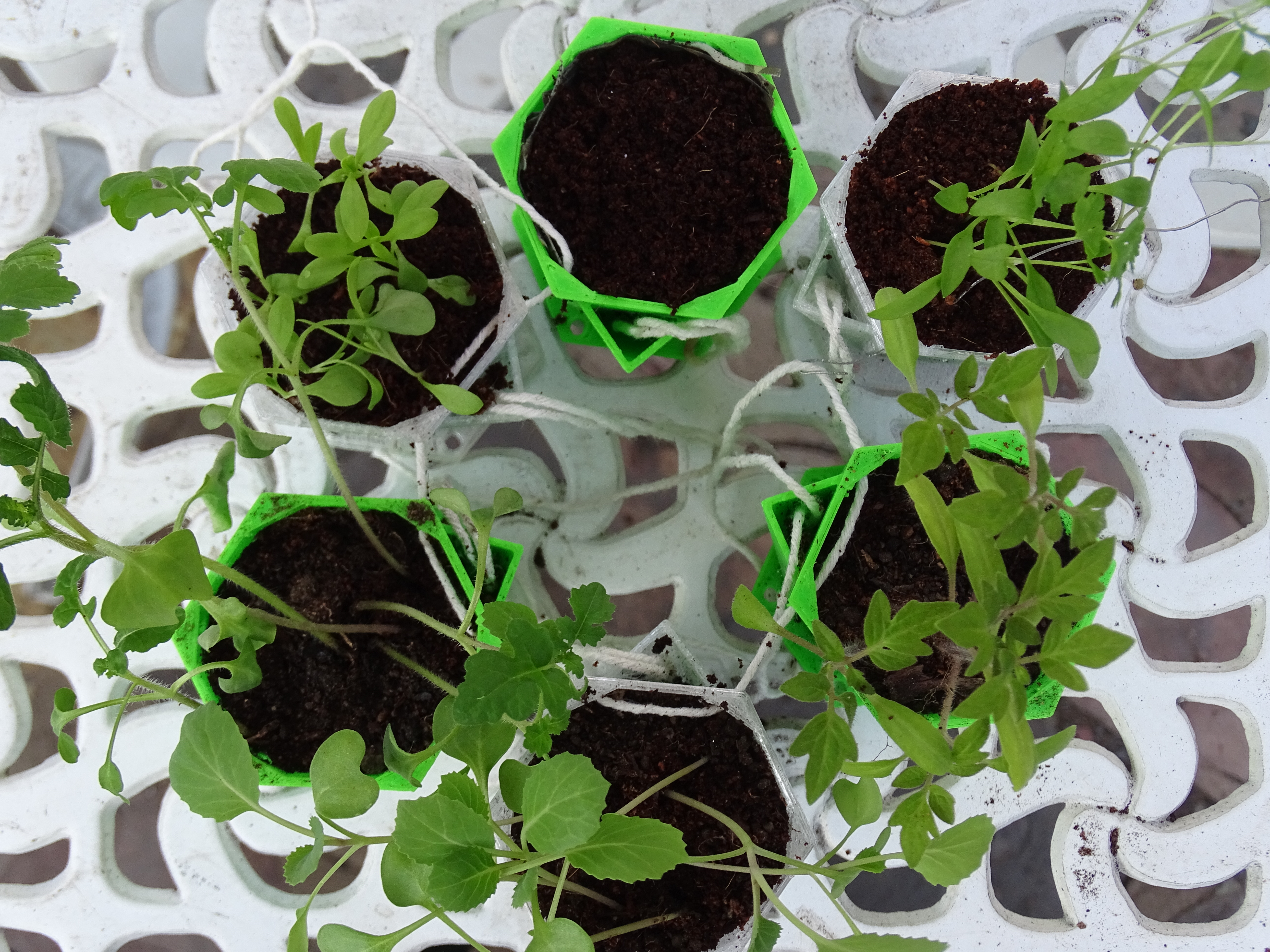
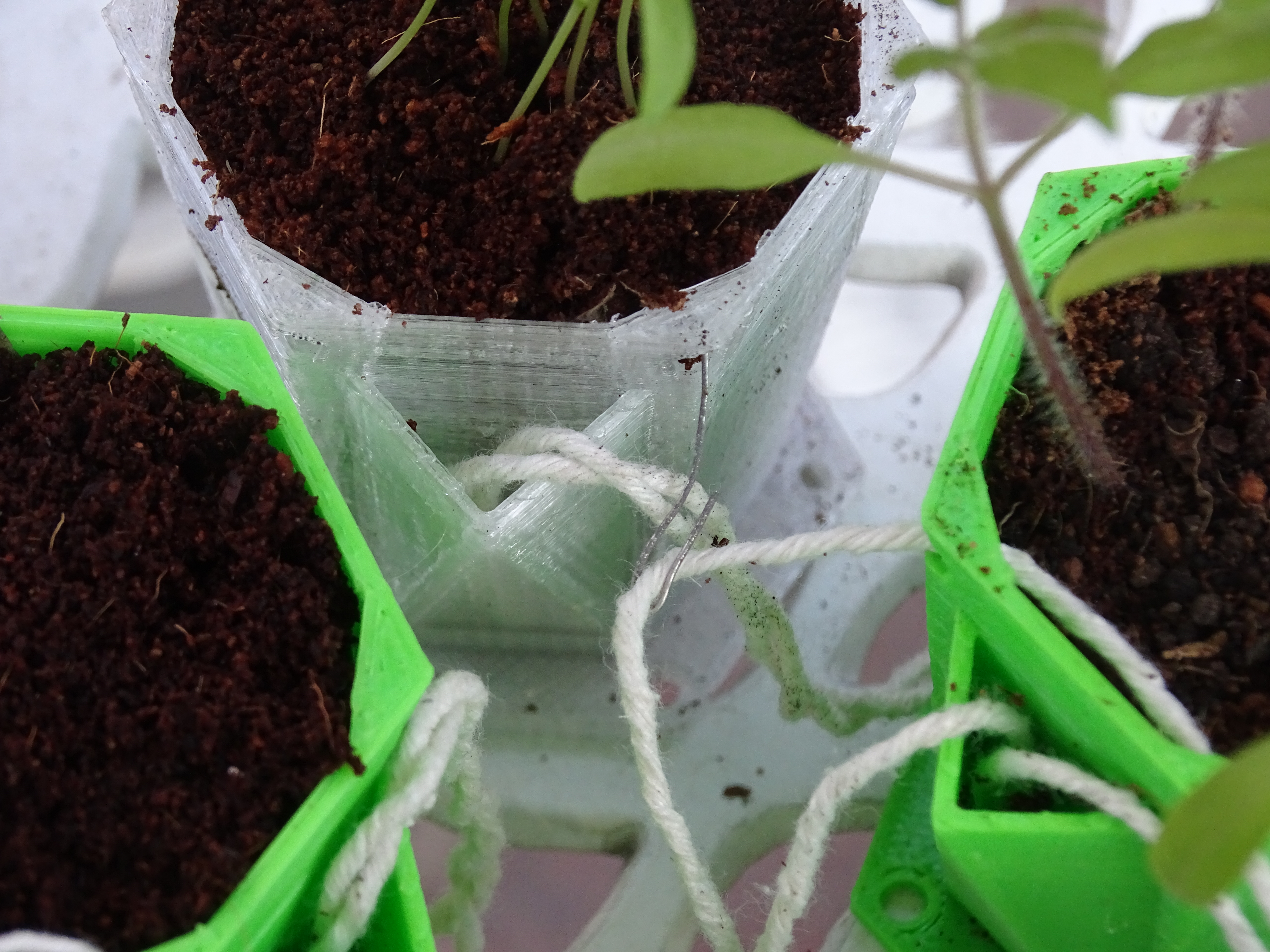
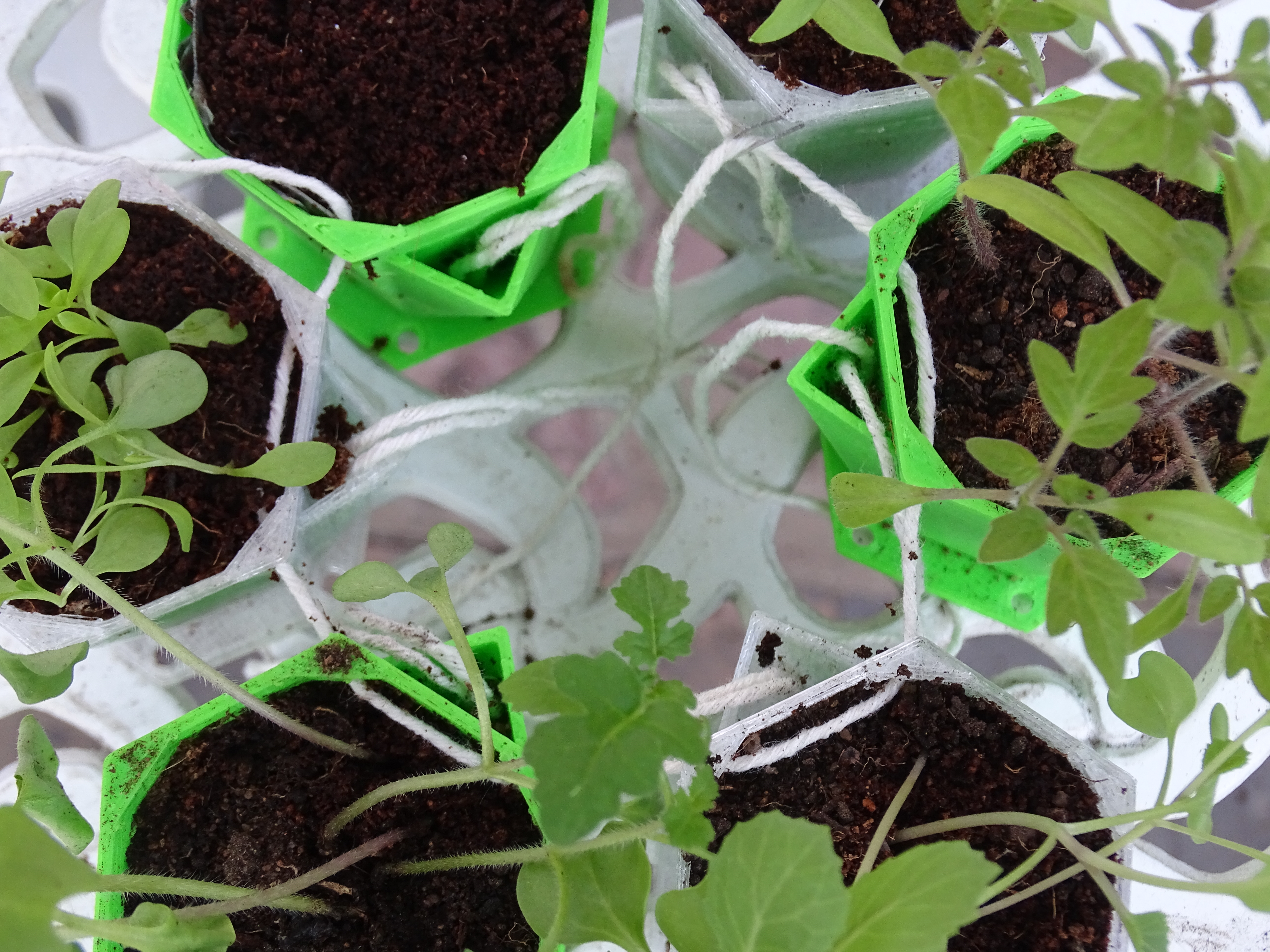
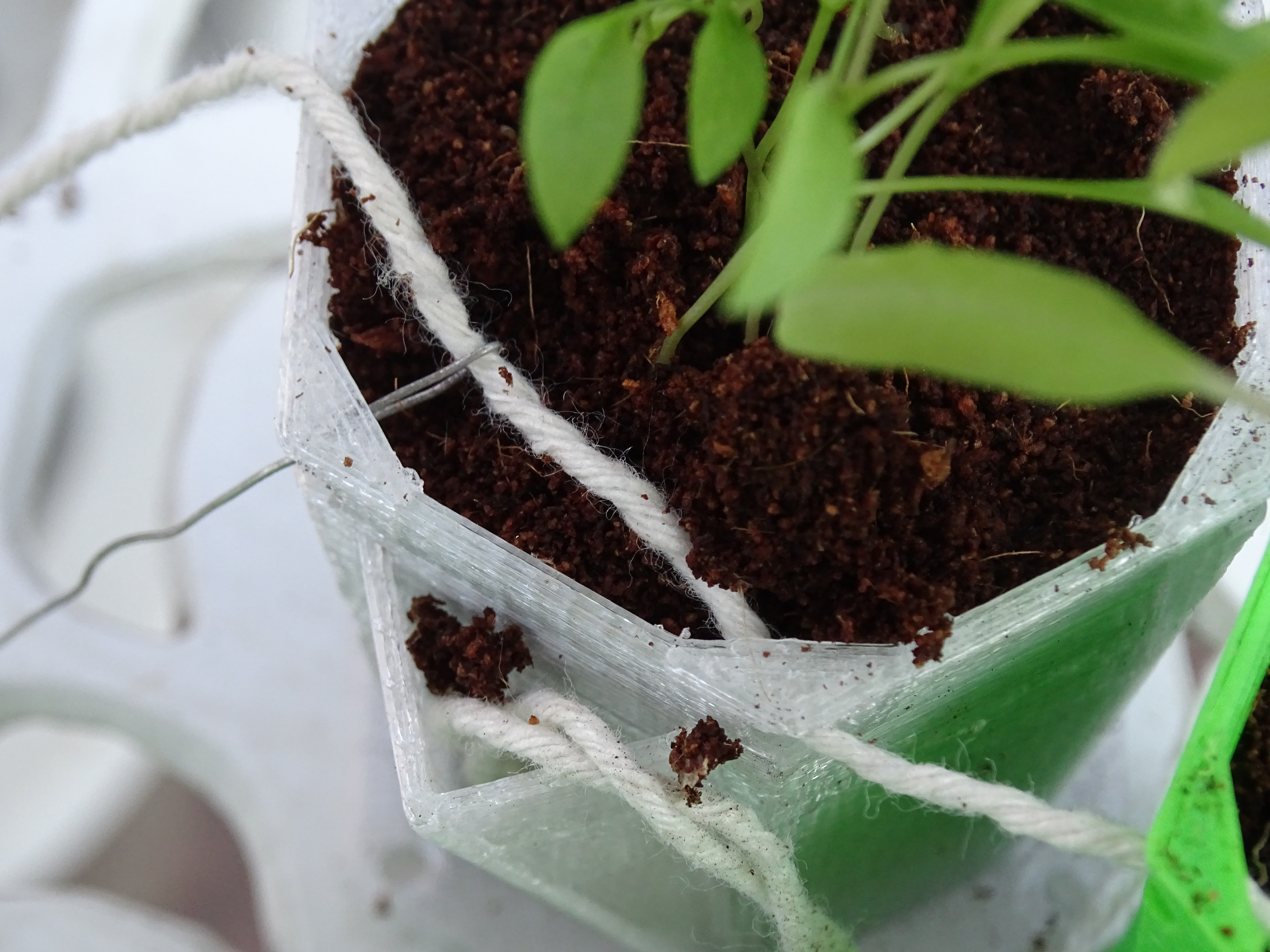
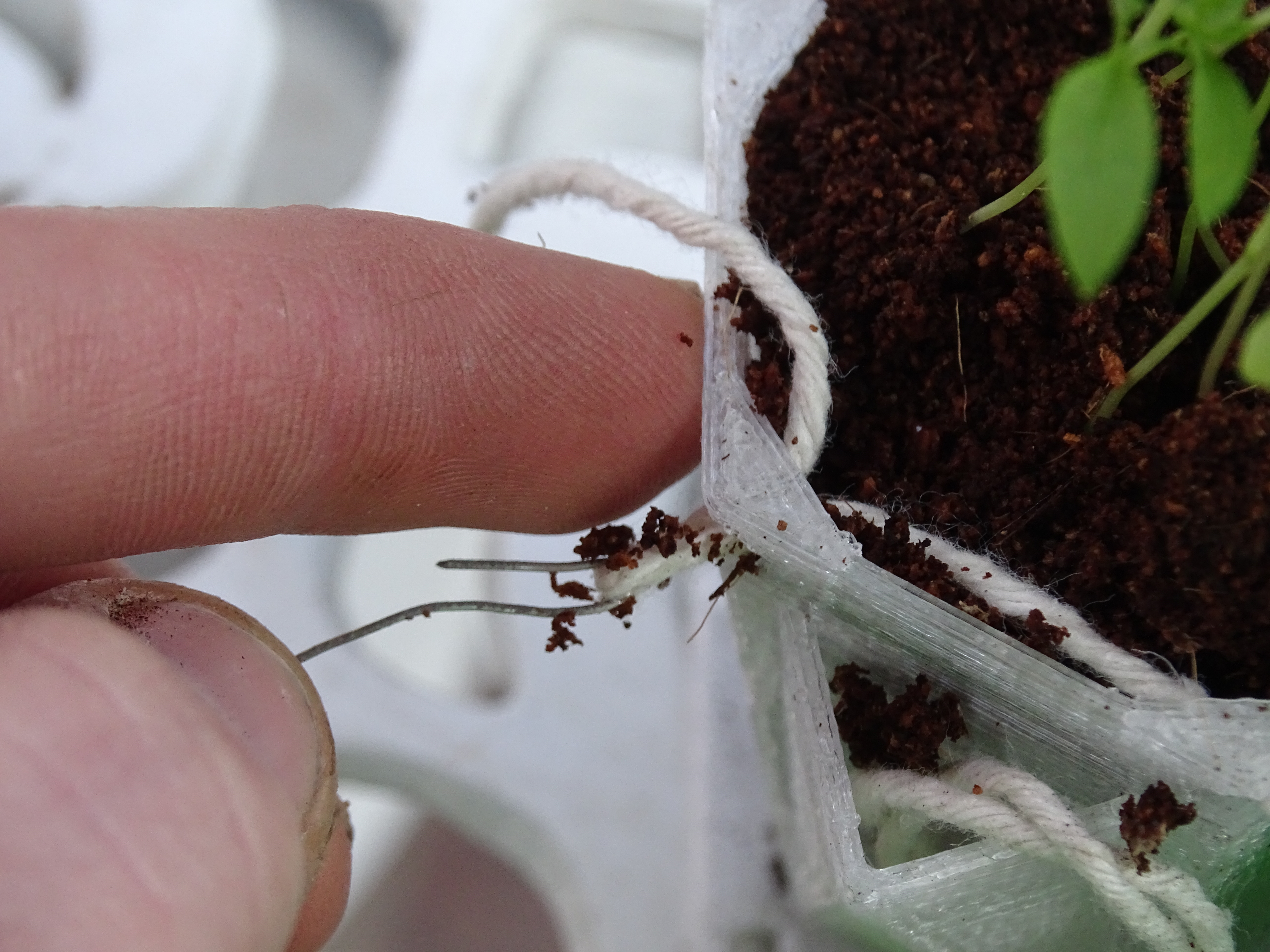
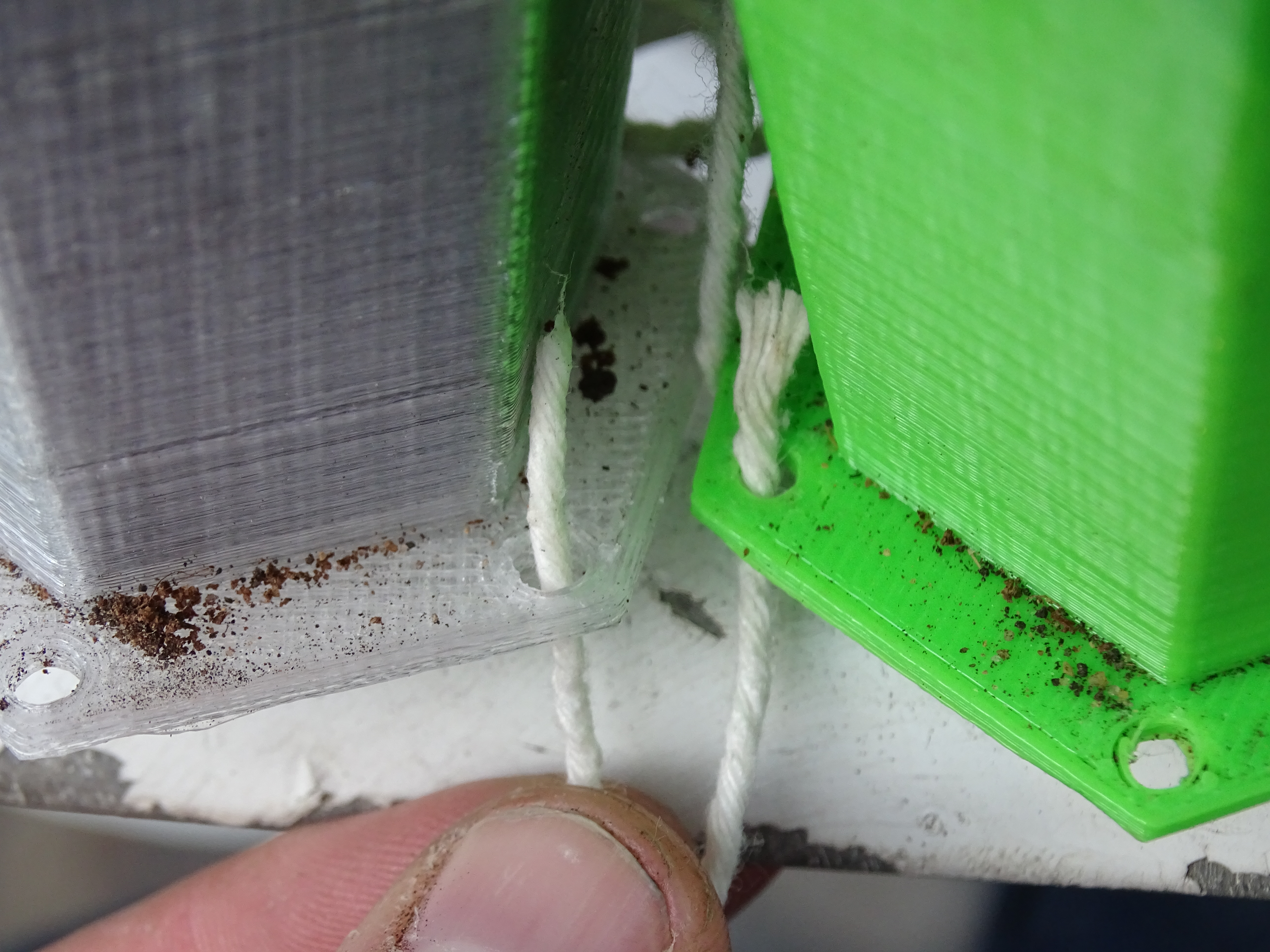
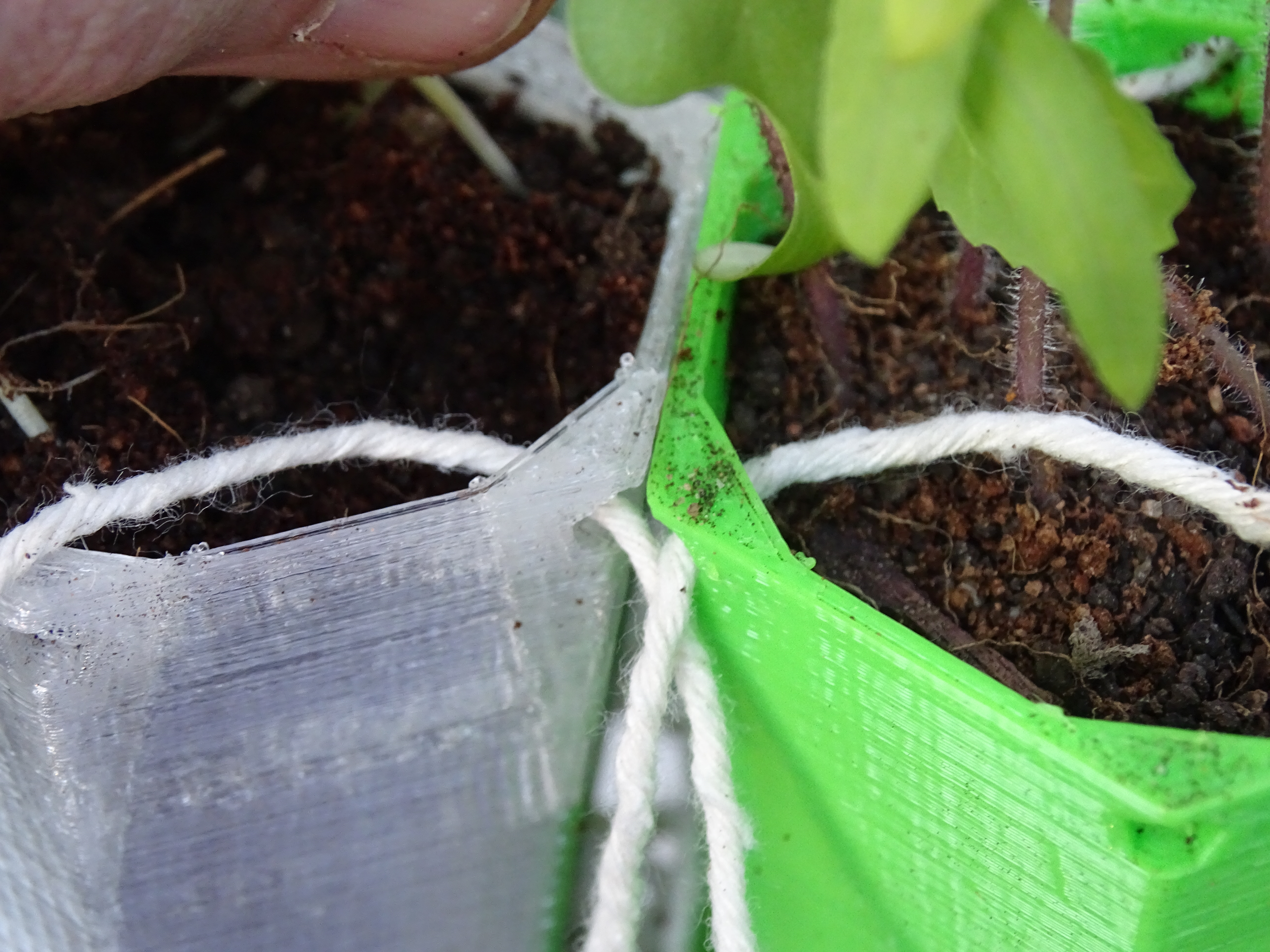
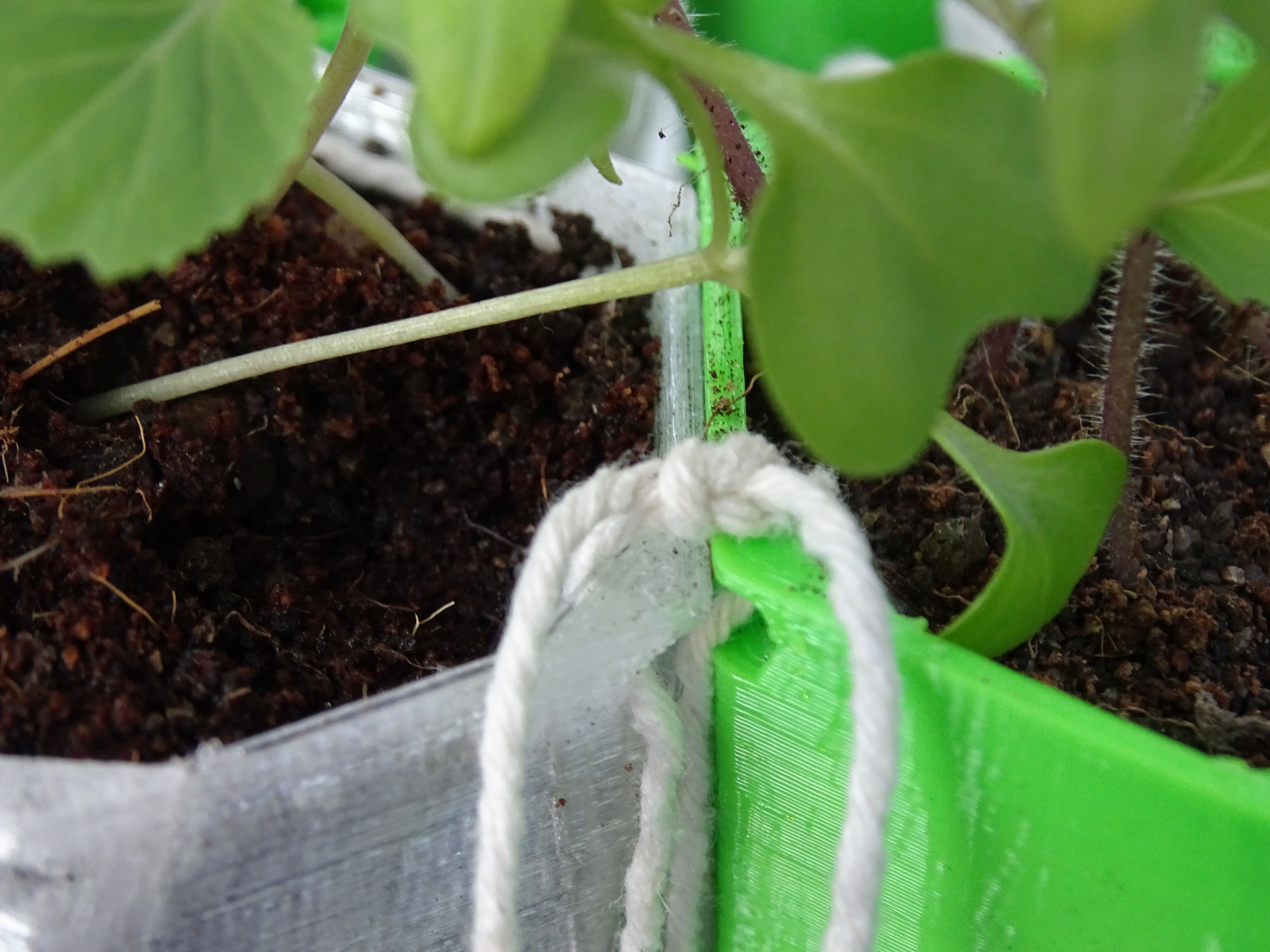
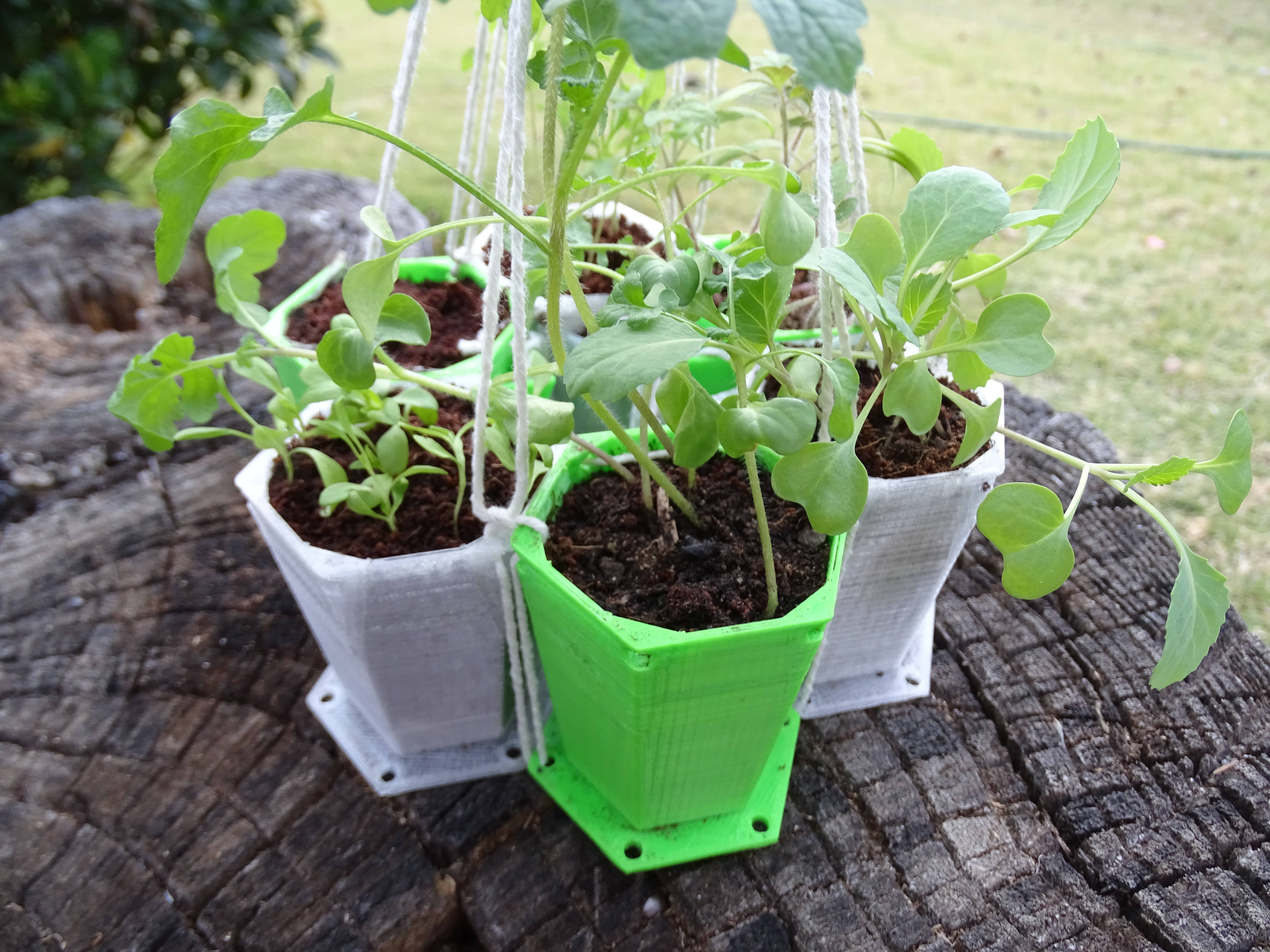
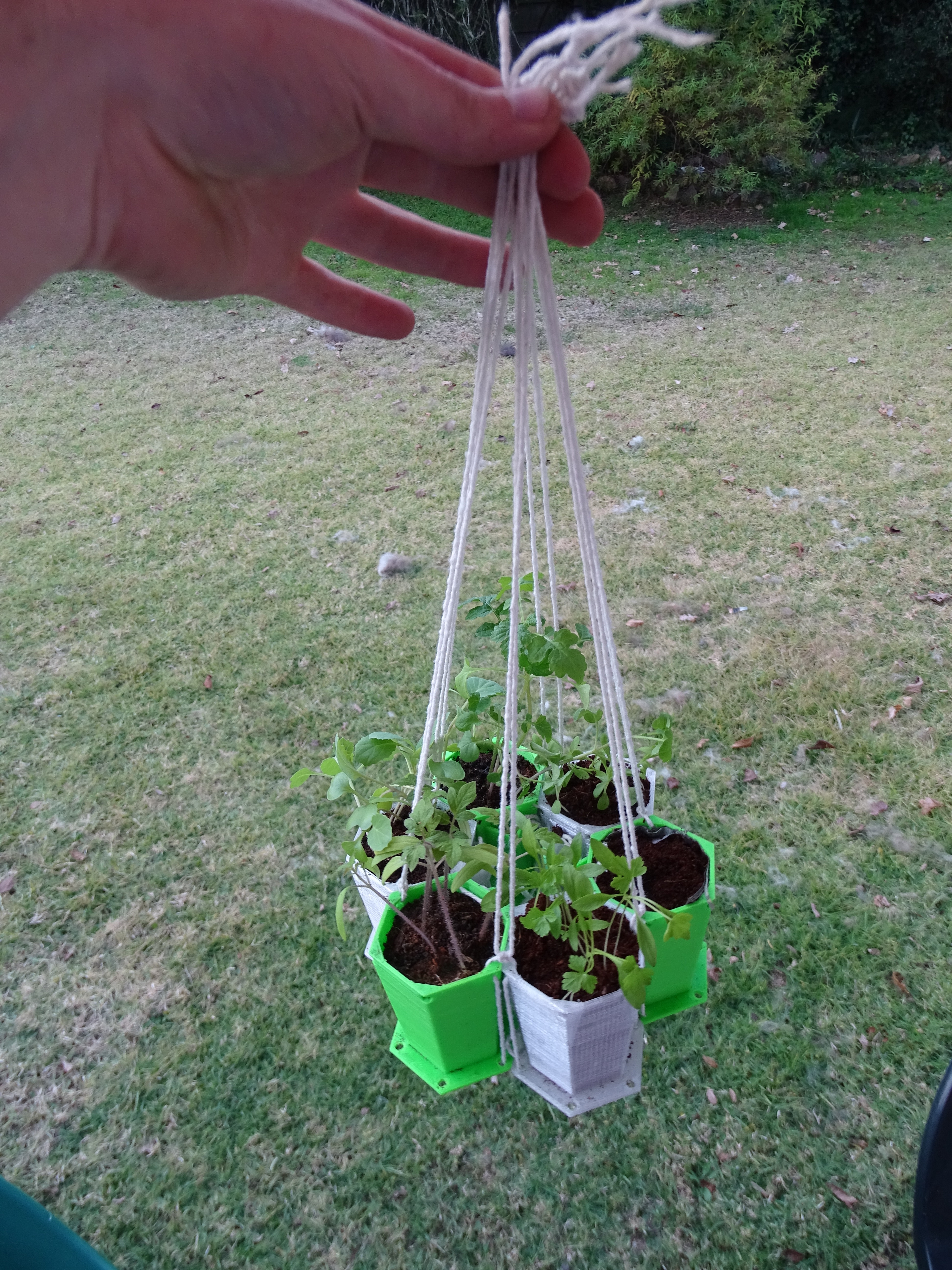
The planters are designed to be modular parts of groups of six. When grouped together they make a cute little hanging garden and can make use of the water container and hydroponics system. To group a set is quite simple.
Start by grouping the six planters into a ring on a table. Next thread a piece of cotton string in and out of the top holes along the inner ring. See the photos as it is kinda hard to explain. A small wire hook makes the threading a whole lot easier.
Once all the planters are threaded pull the string tight carefully and tie the two ends together. If you don't want to hang your planters all you need to do is add to the water pot and your are done.
To hang the planters what you do is thread a loop from the base holes of two adjacent planters through the two holes at the top and tie it off. Make sure to leave a long length of extra string as it will be used to suspend the planter. Repeat this threading step for each spot between the planter so that you will have all the planters tied to each other and six long strings.
As the planters are tied together you should notice that they will be held quite rigidly in place. Take the six long strings and hold them above the planters centre. Decide how tall the hanging point needs to be and tie all the loops together at that height. I added a wire hook so it is easier to hang up.
Hydroponics - "Self Watering"
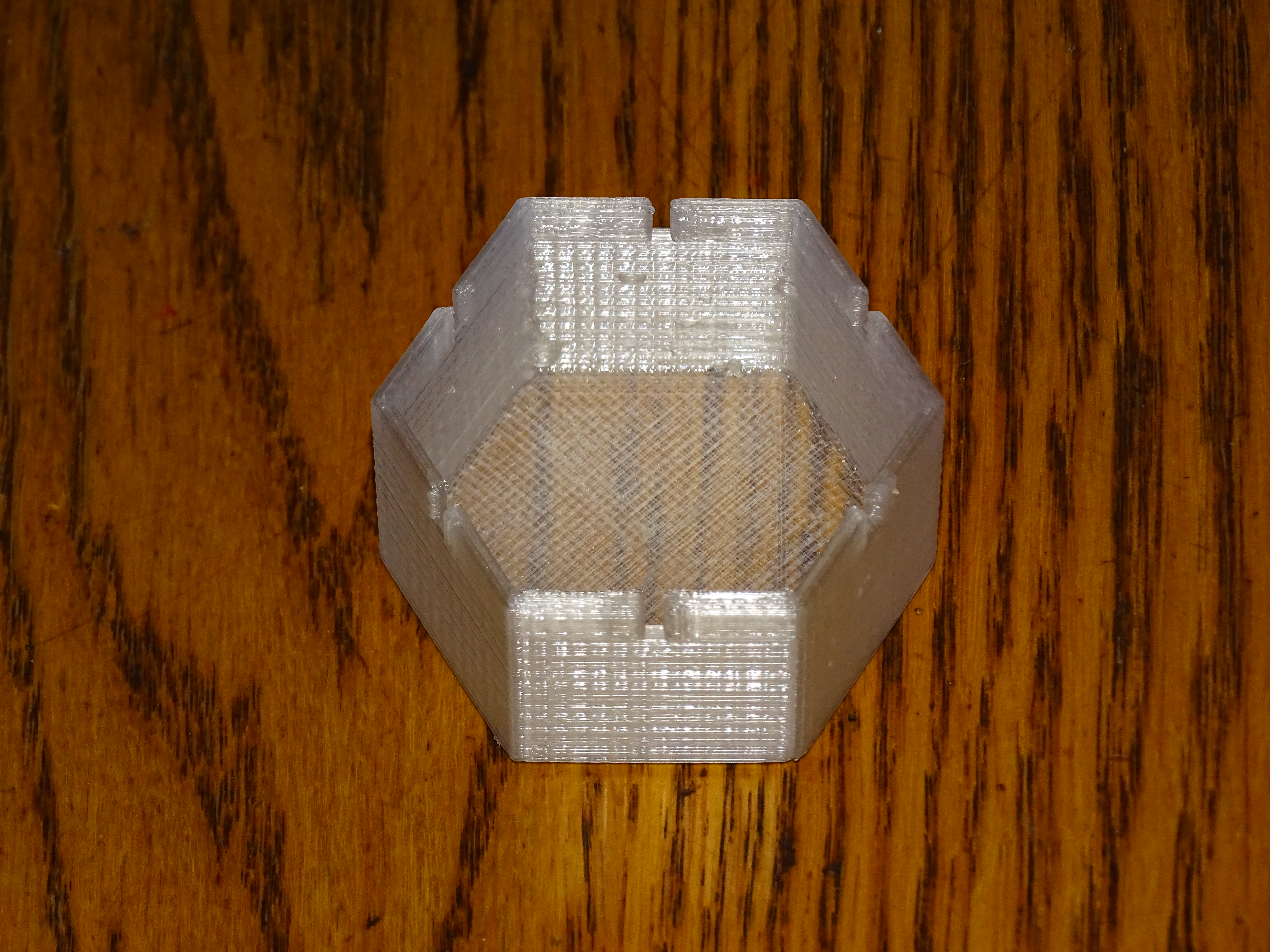
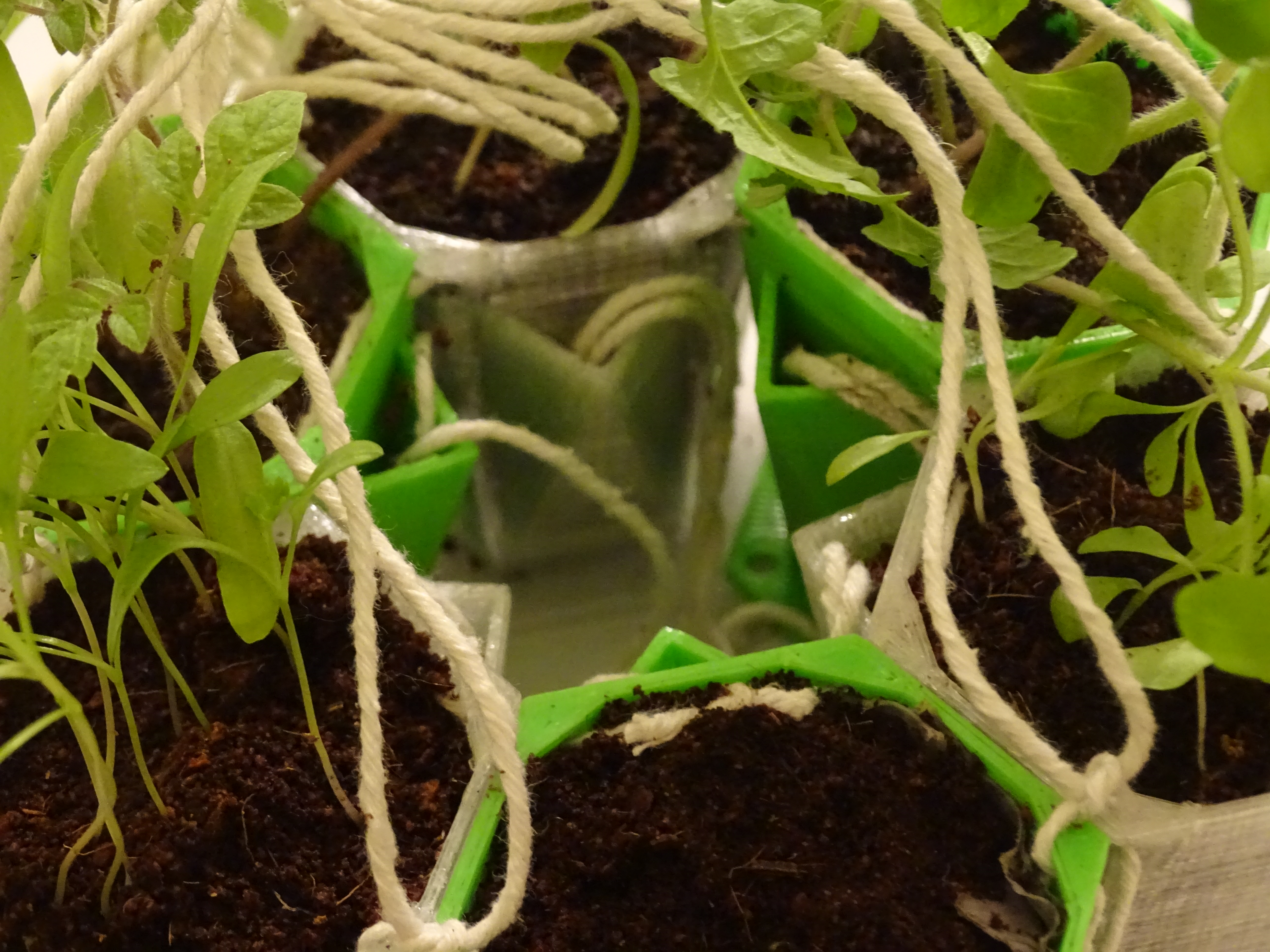
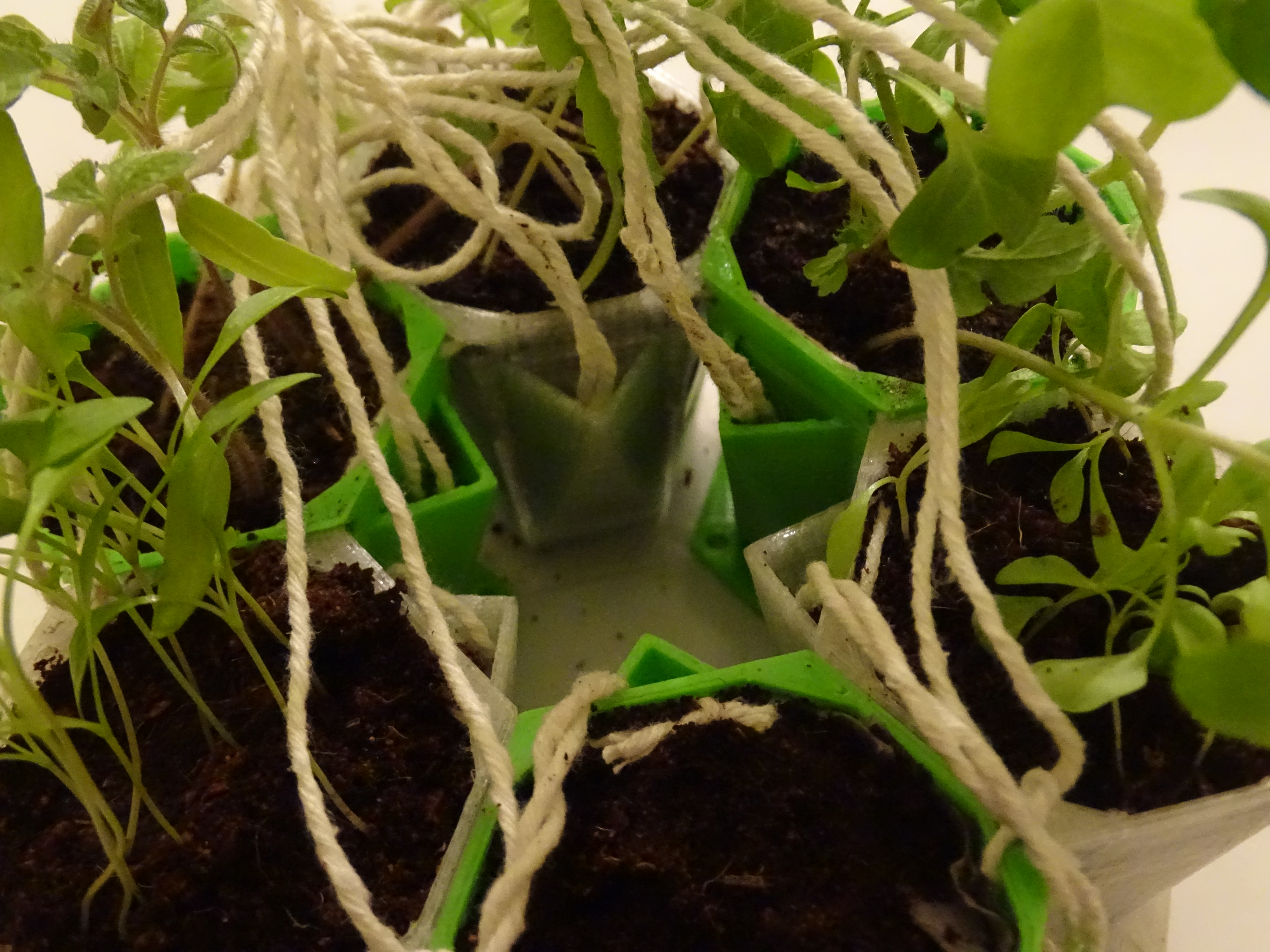
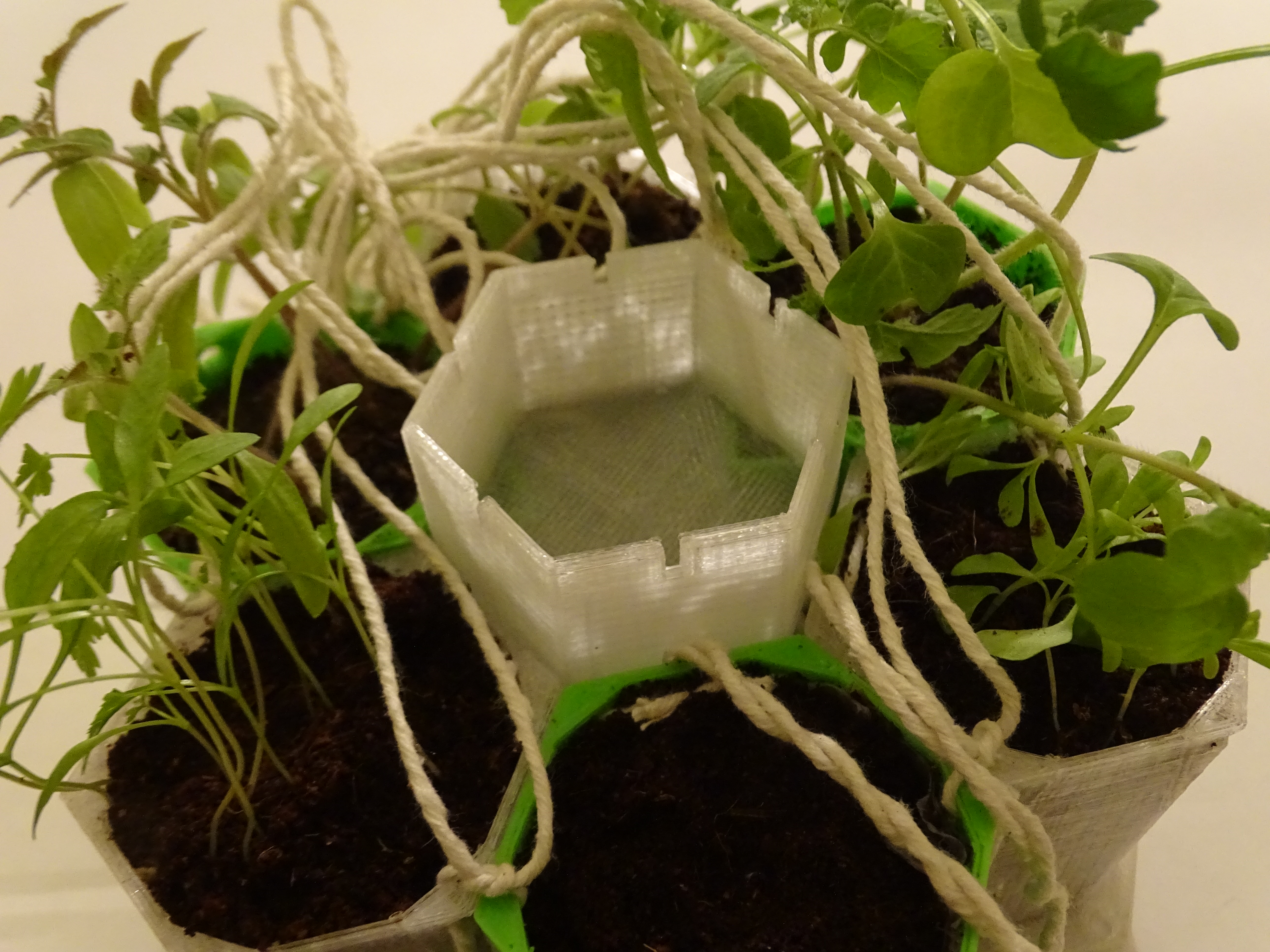
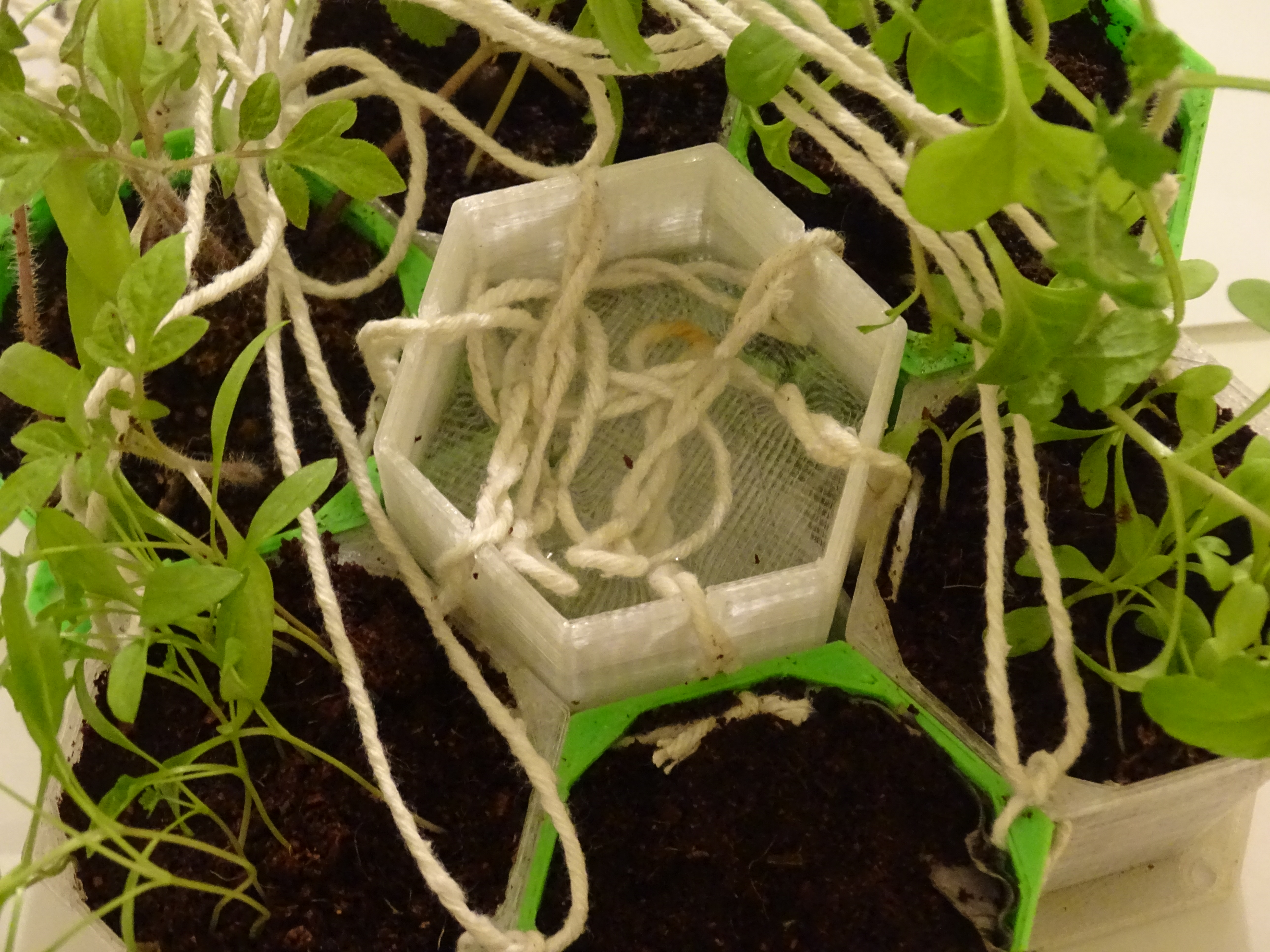
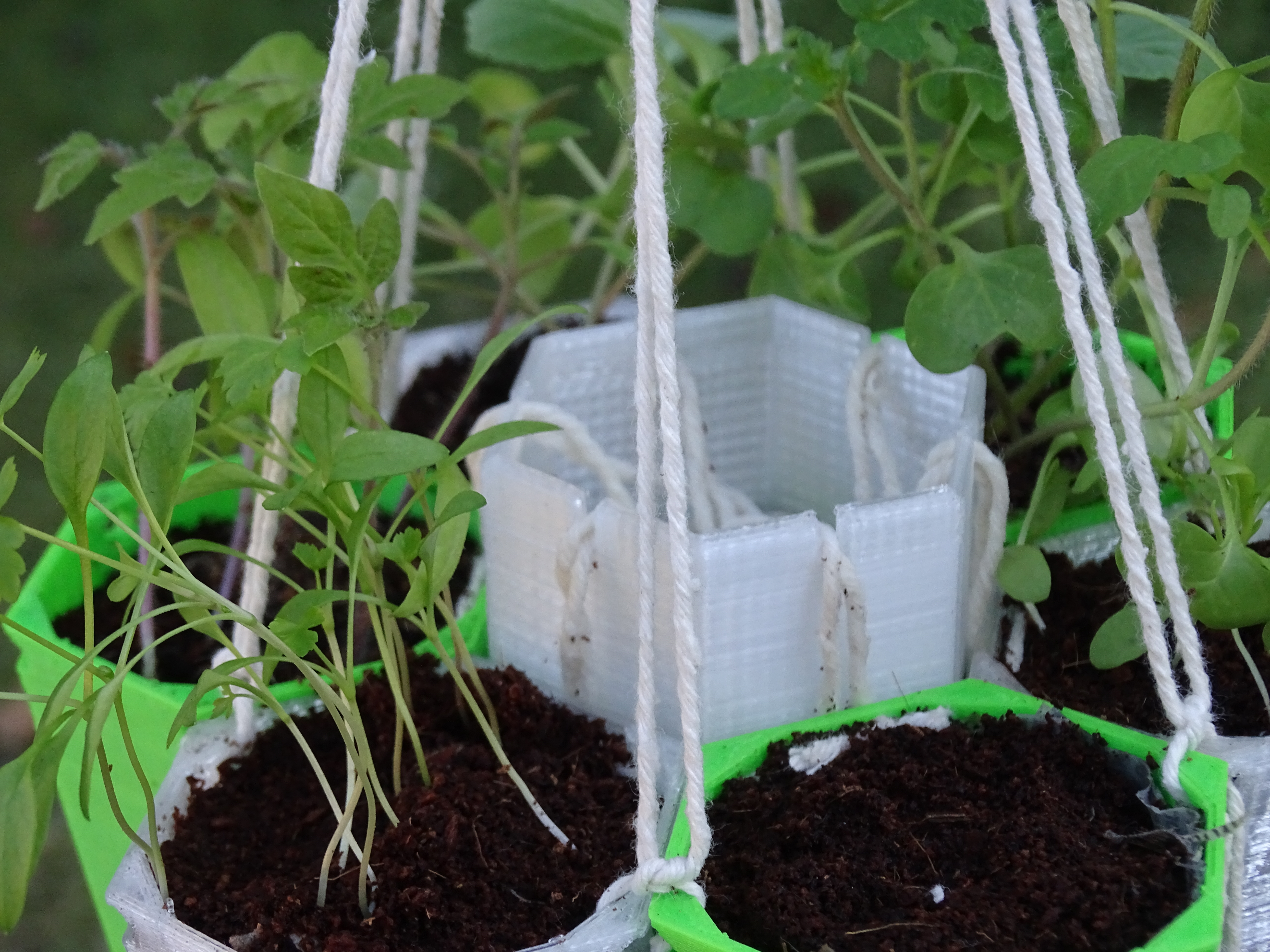
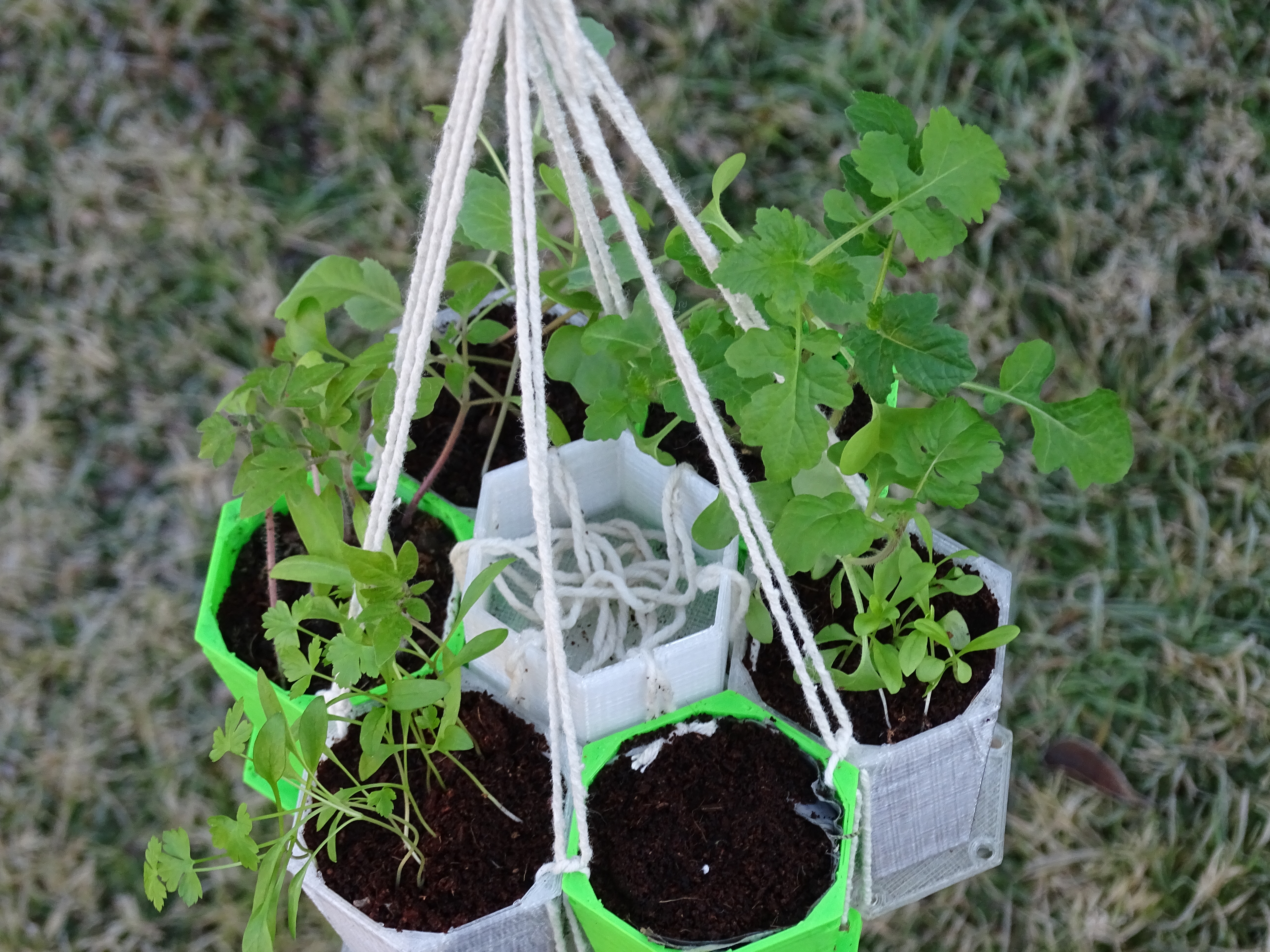
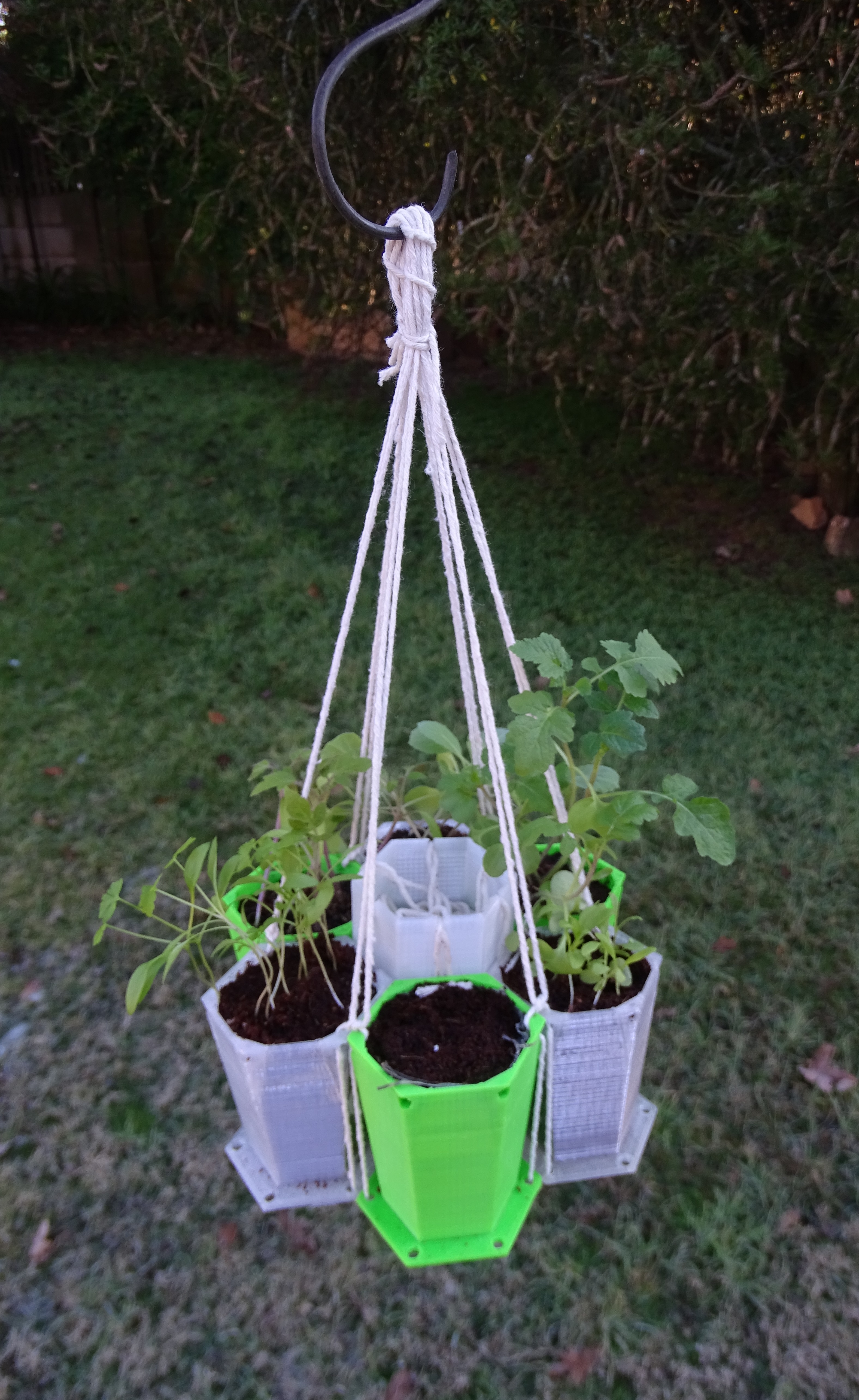
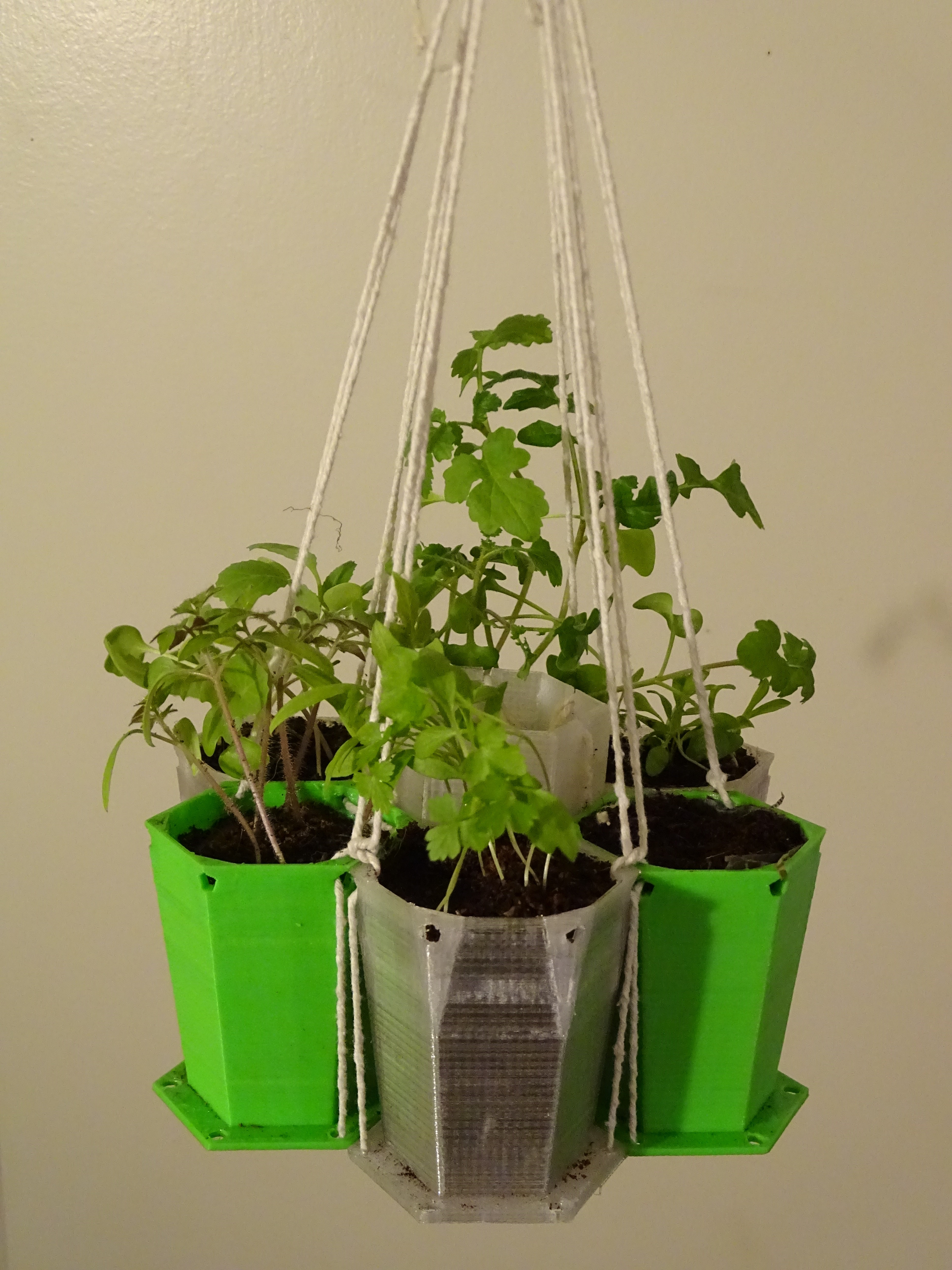
To make your planters easier to water I added in this little hydroponics system. When you have small seedlings it is easy to forget to water them for a day and to come home and see them roasted by the sun. Also when watering right on top of tiny seeds you run the risk of washing them away. Hence make a gentle self watering system.
The watering system is made up of a small water container that fits in the middle of the ring of planters. The cotton strings that were placed into the planters go into this container and when they get wet the water flows along them and into the base of the planter. All you need to do is full the container once every day or two, depending on the weather.
To get the system working; start by printing the water spout file and making sure that it too doesn't leak. Next take the group of planters and carefully move the cotton tongues out the way. Slot the water container into place and put each string into the slot of the water container. This is what holds the container in place. Once all the strings are in place you are done.
Fill the container up and you have just made a basic hydroponics system.